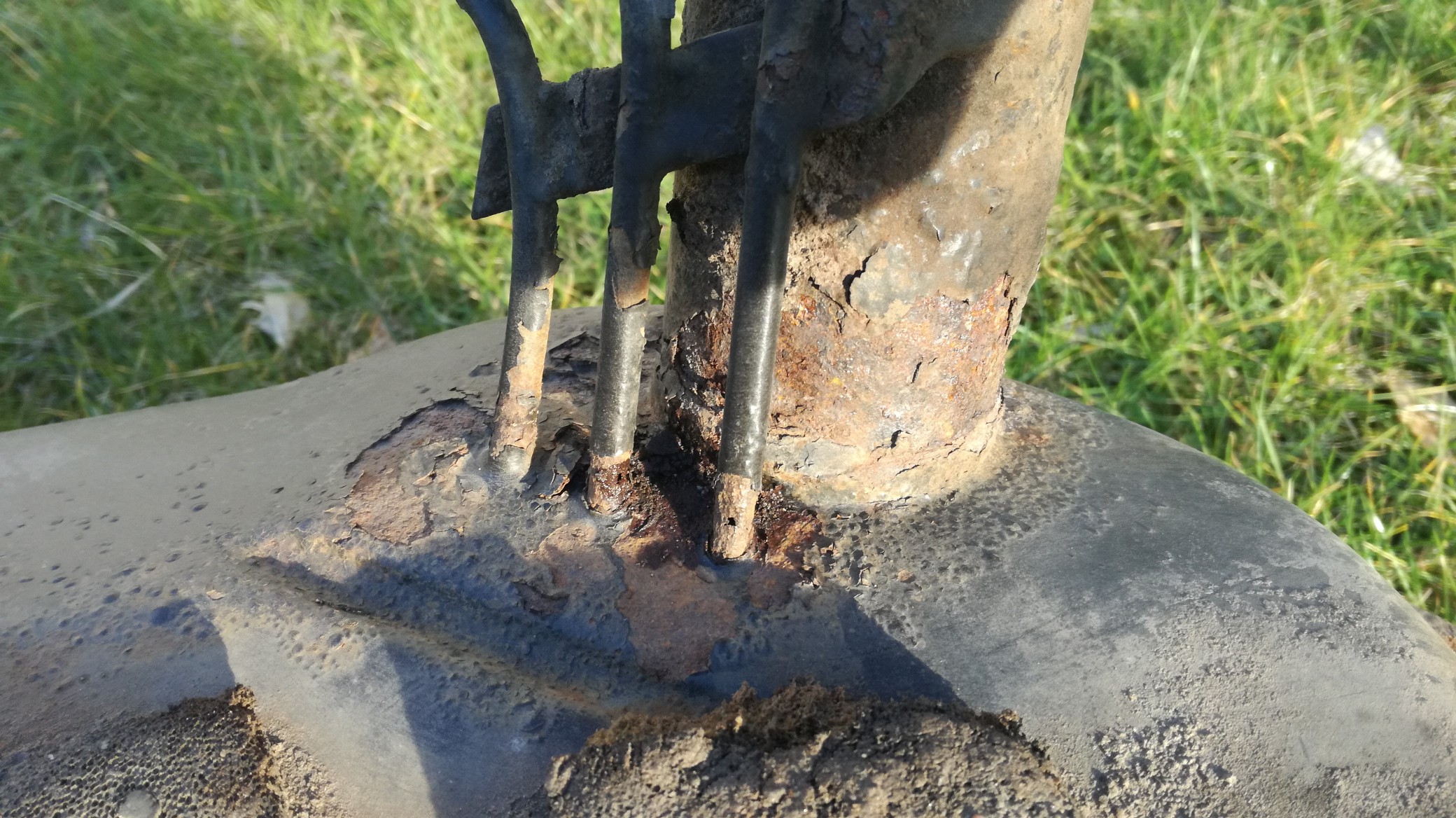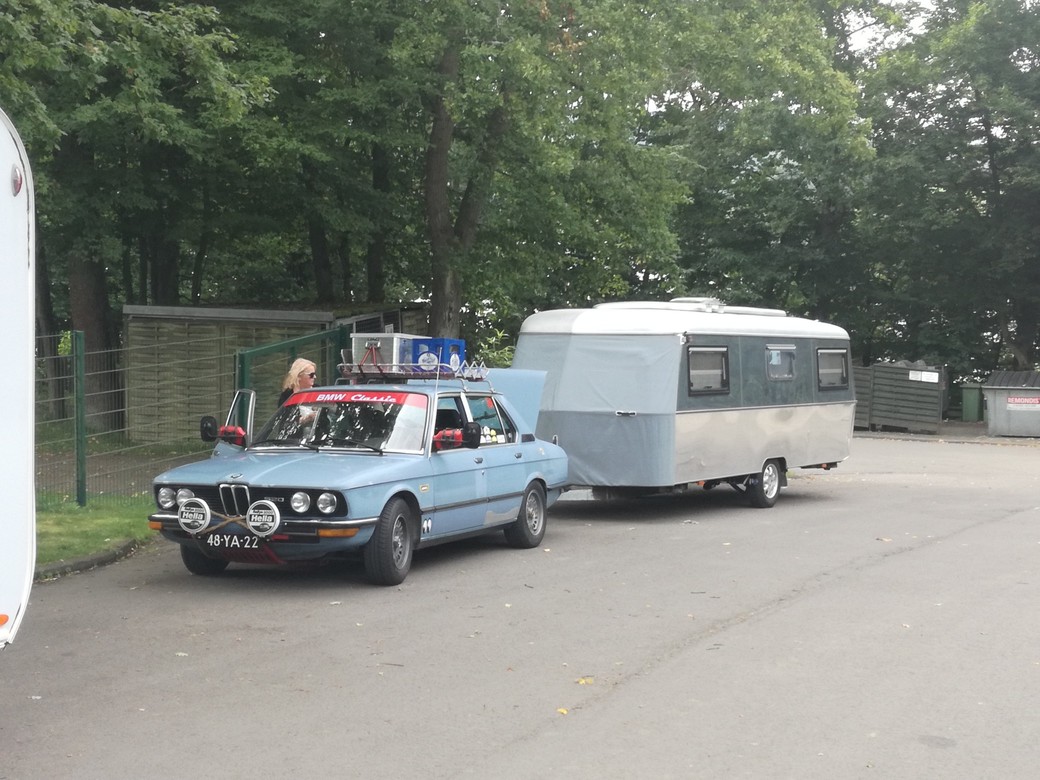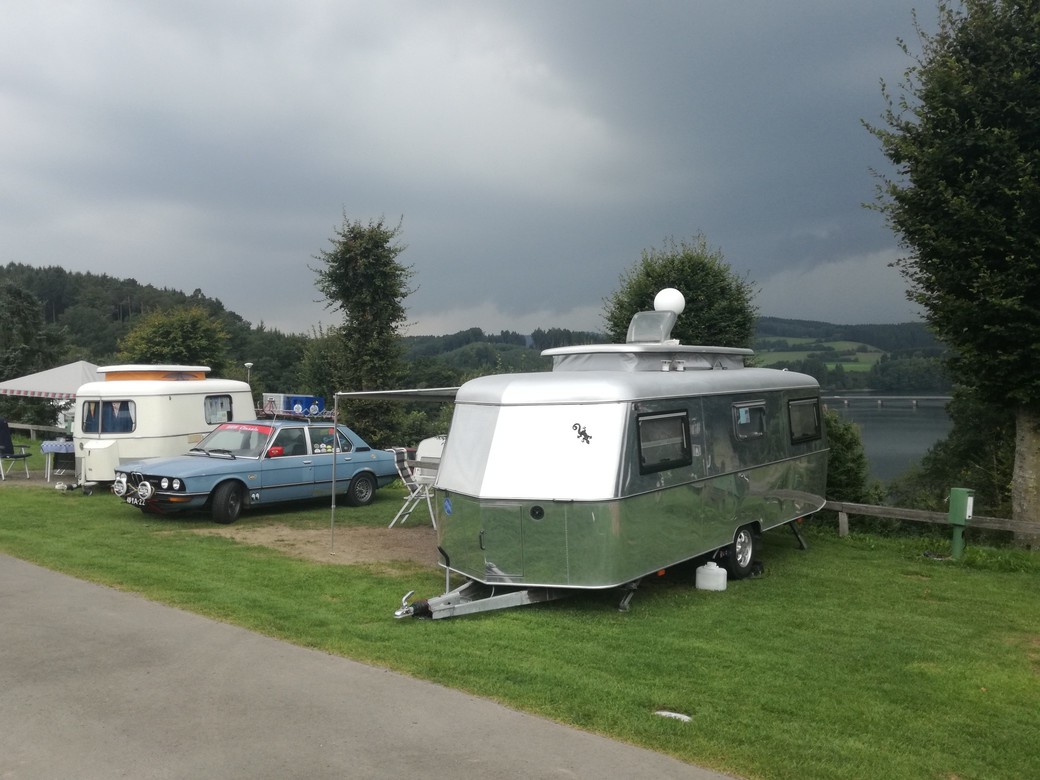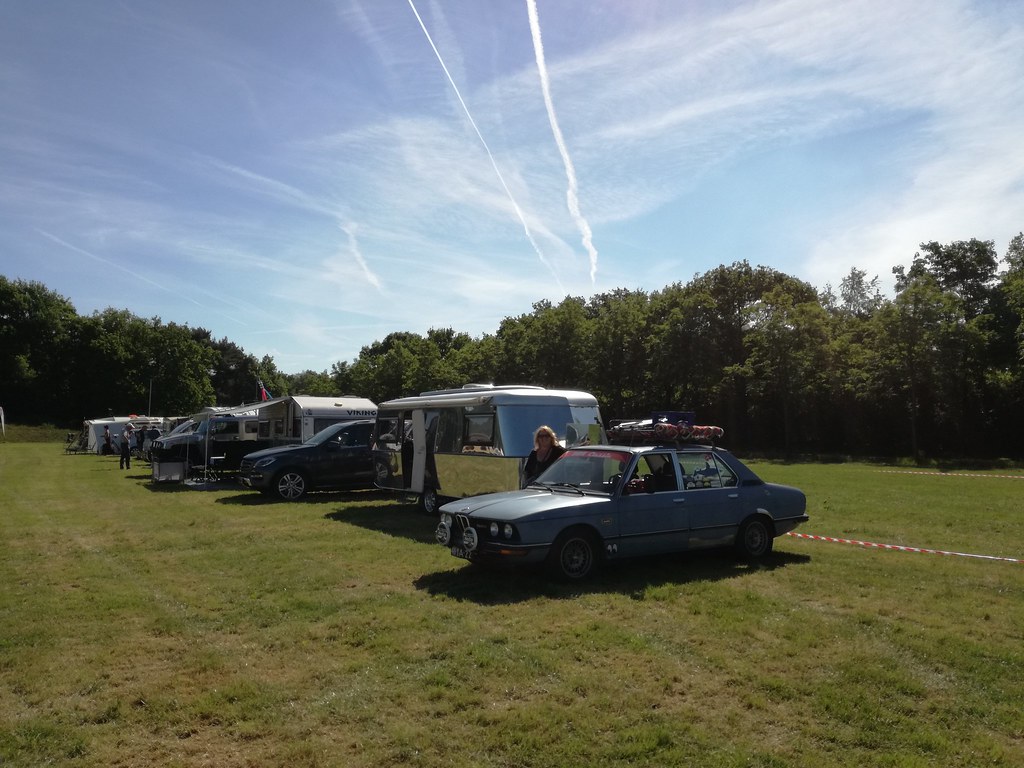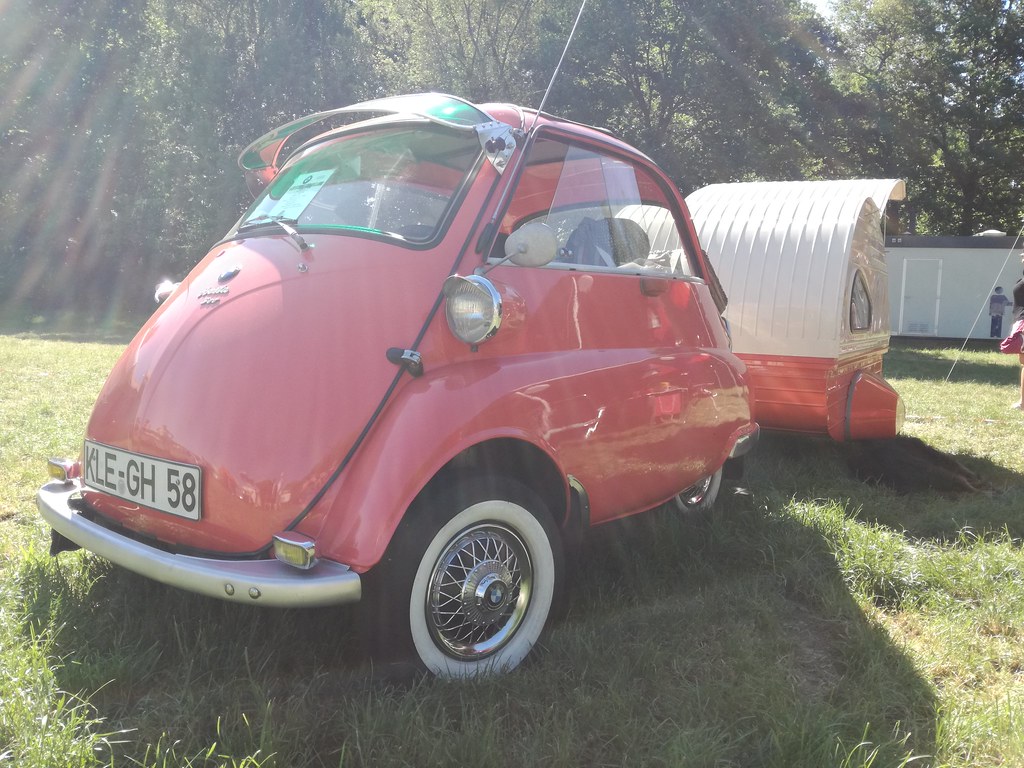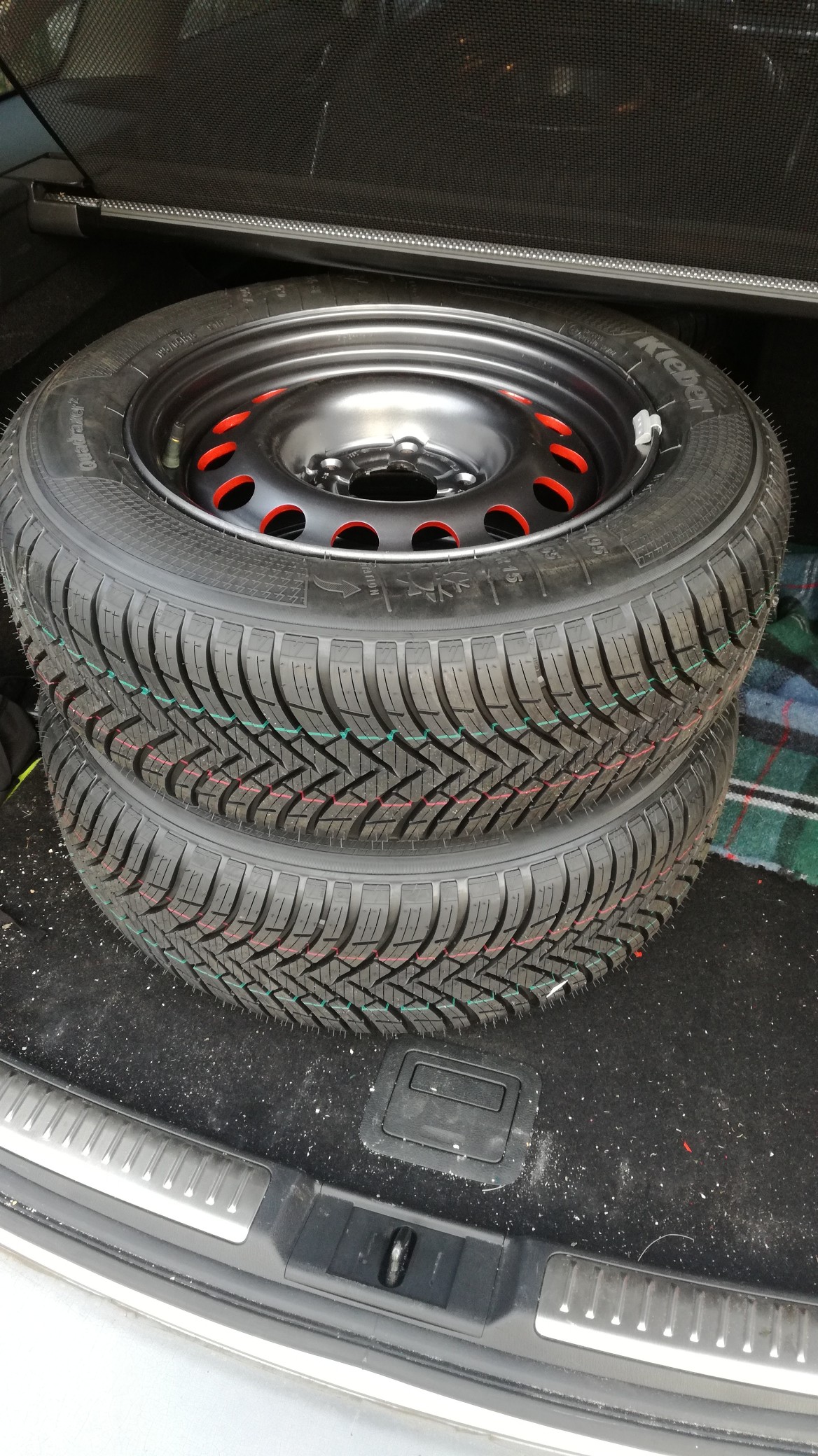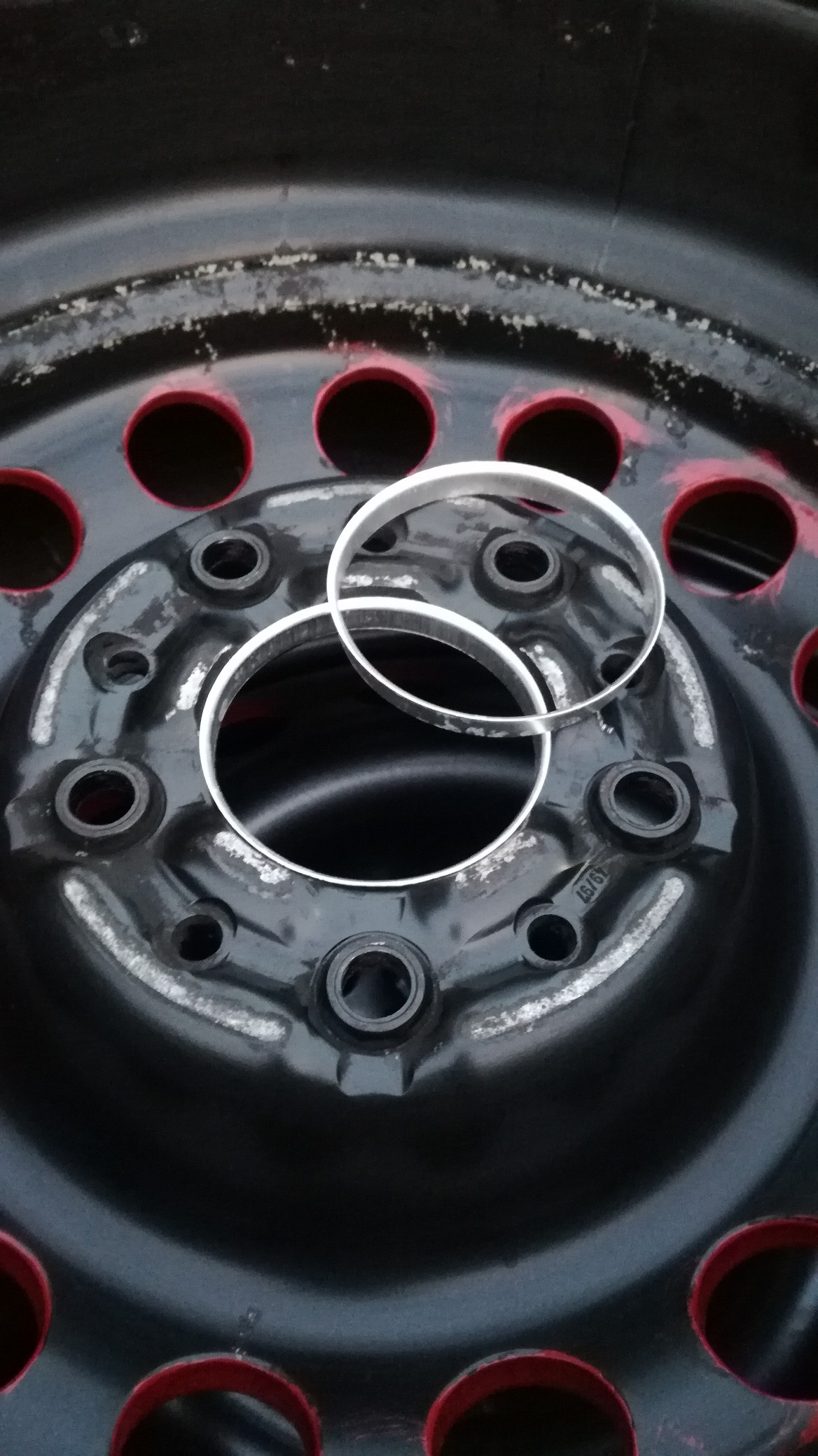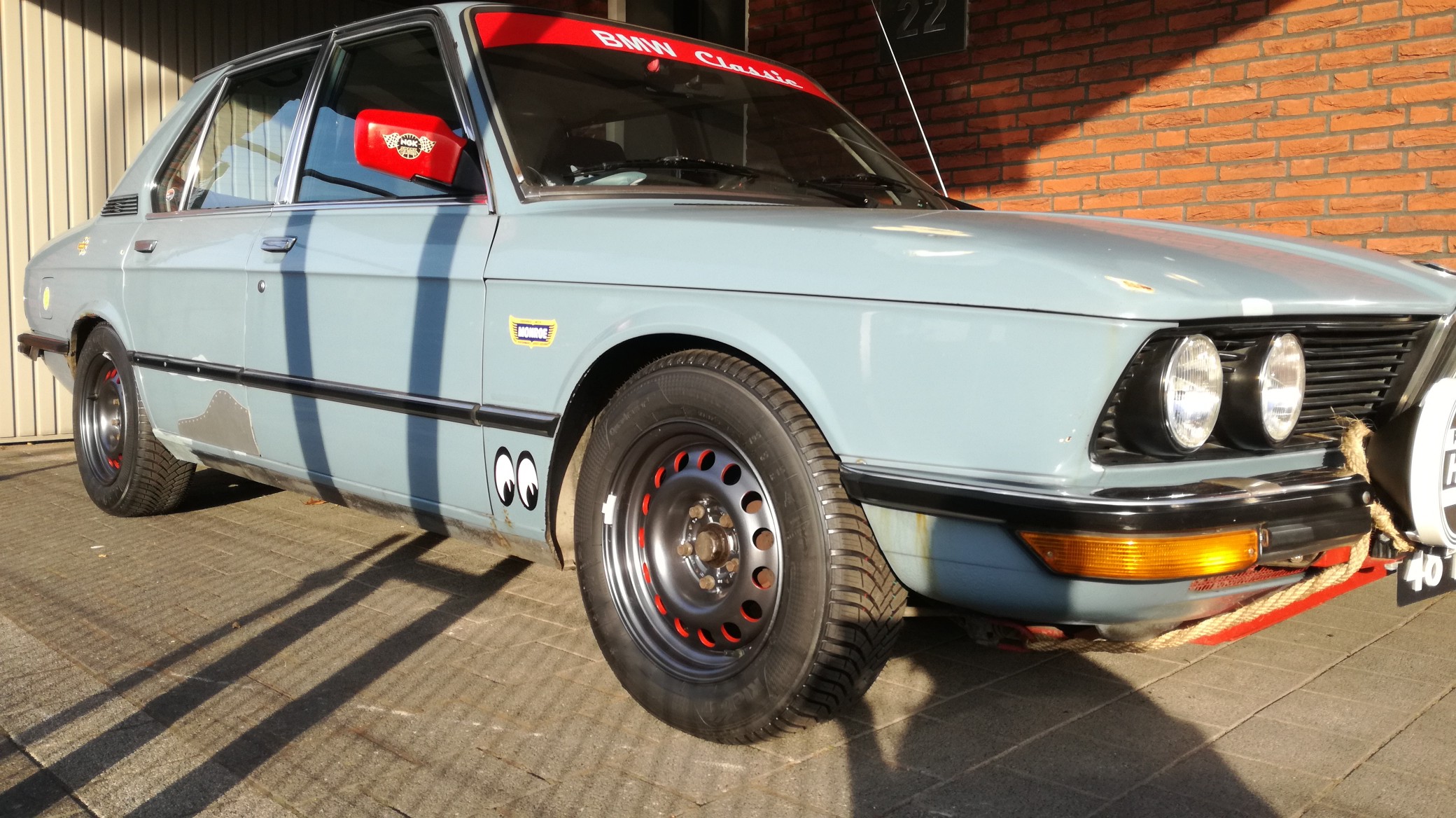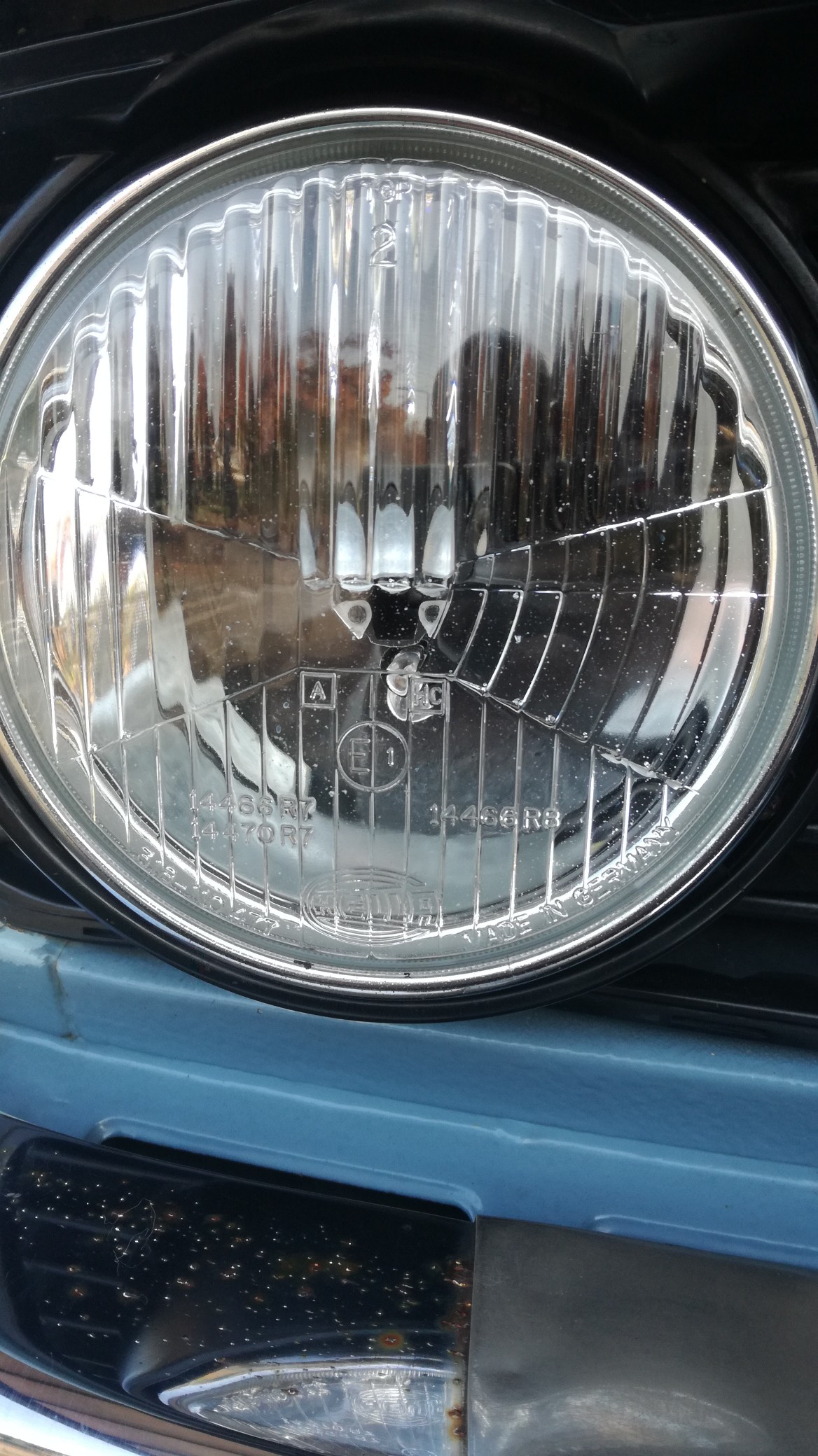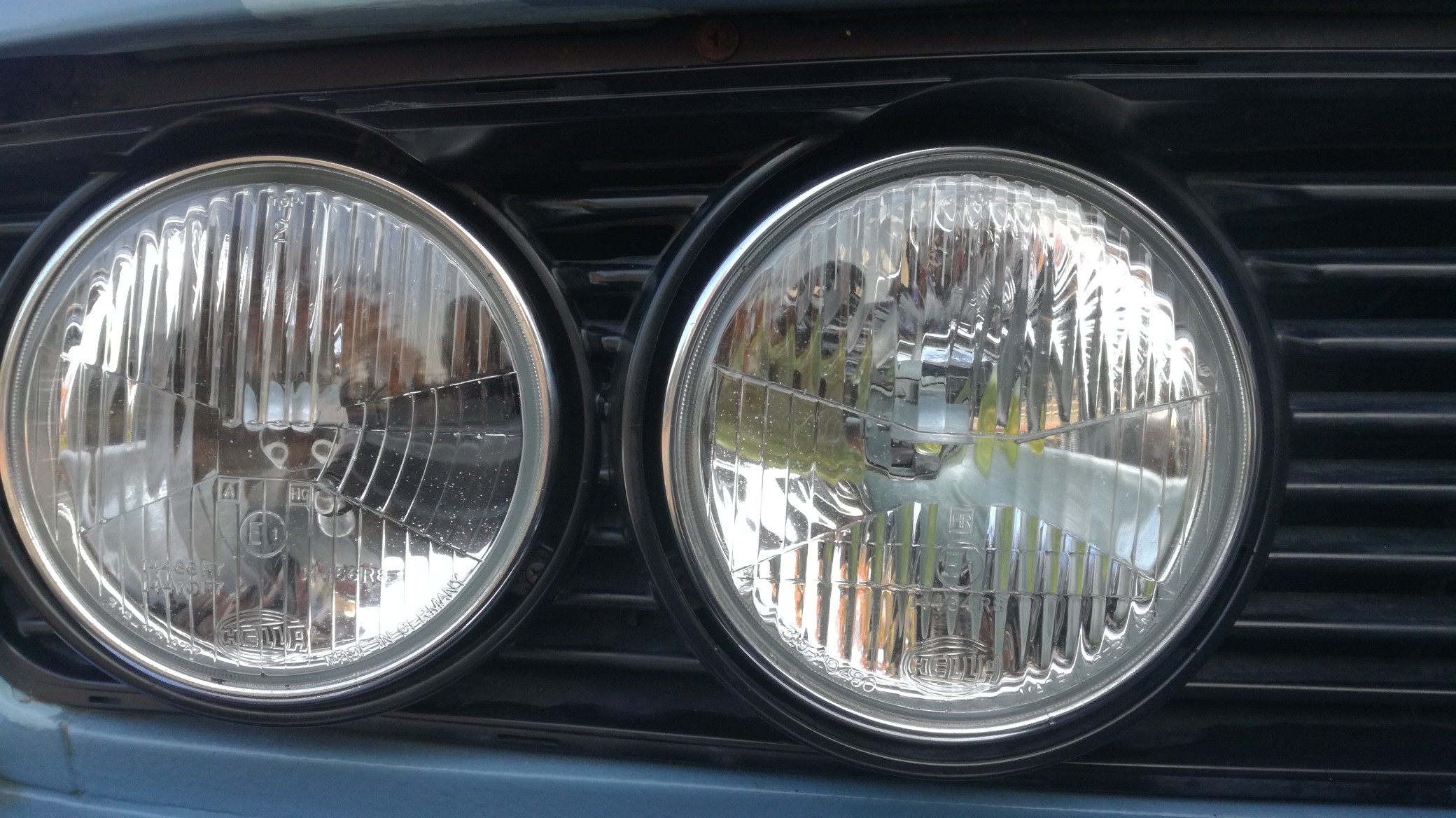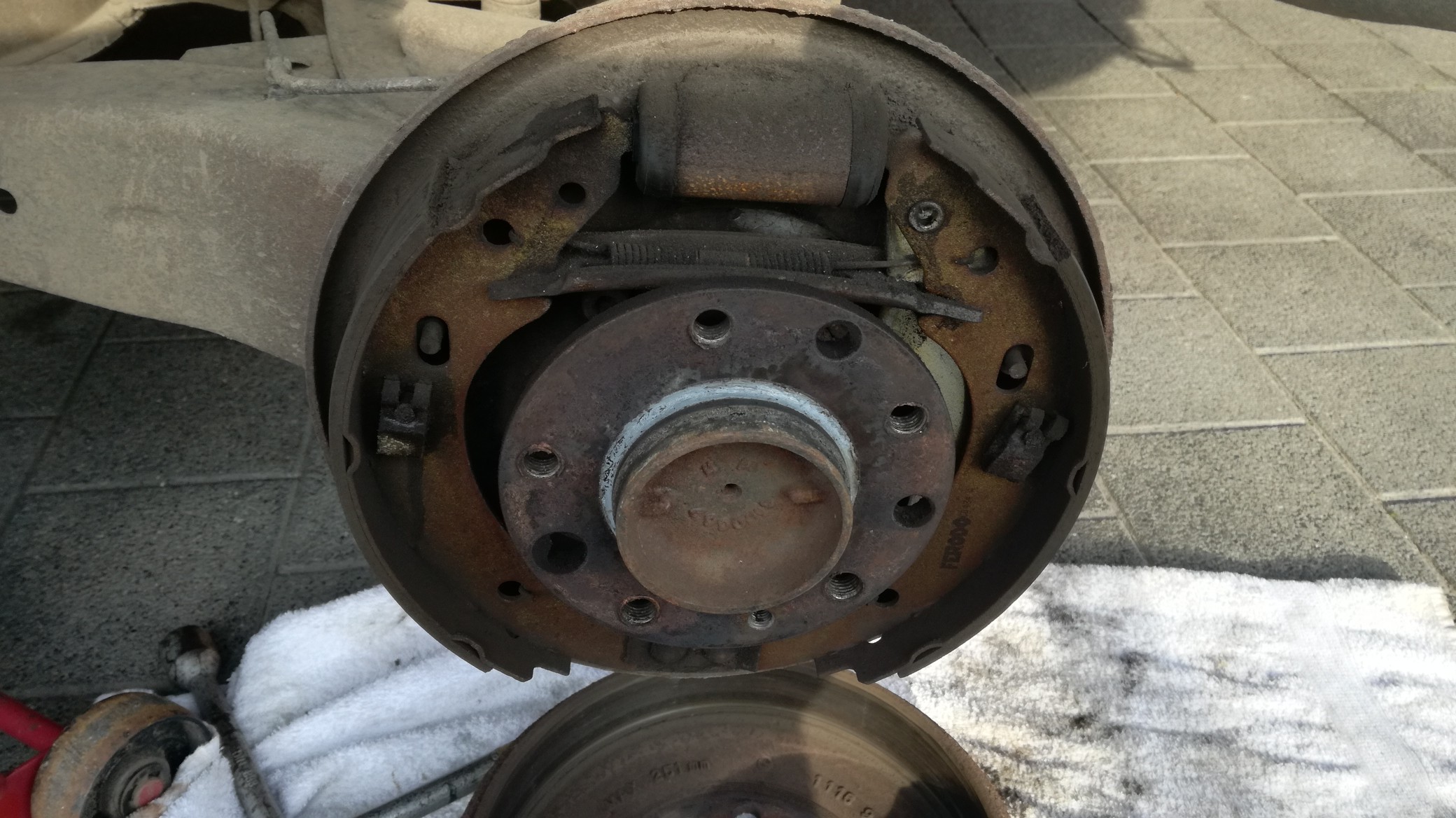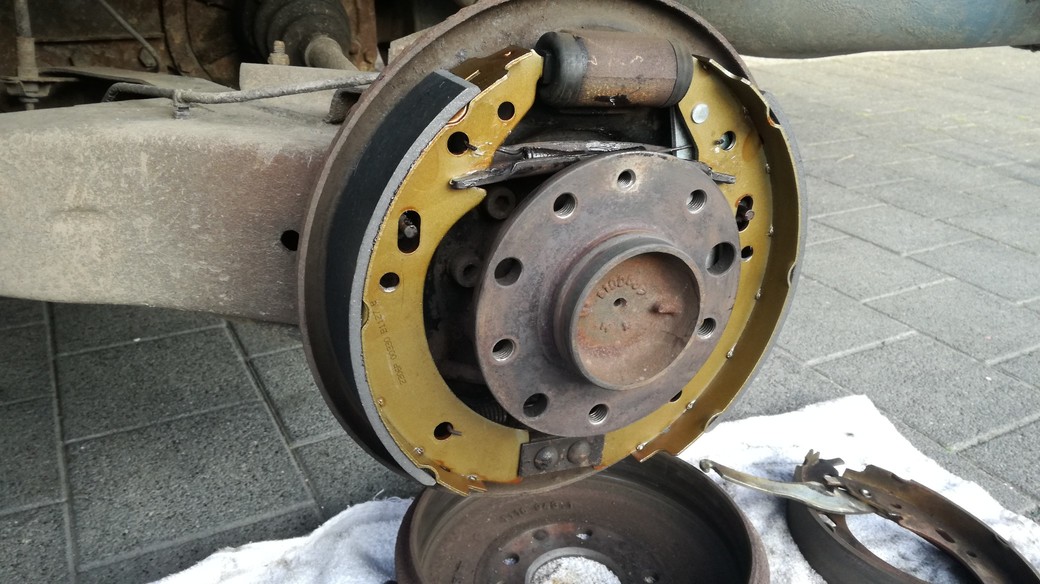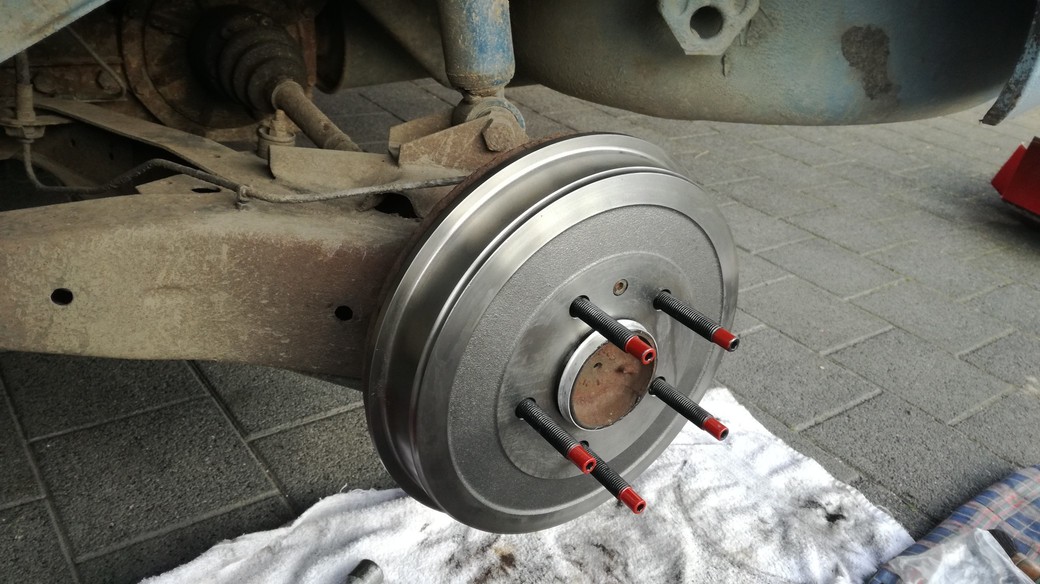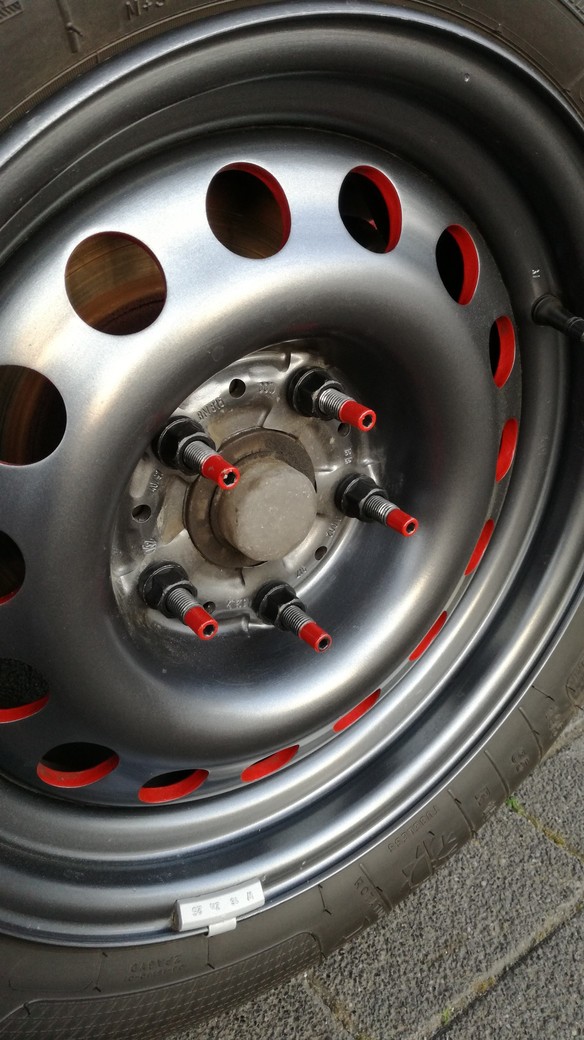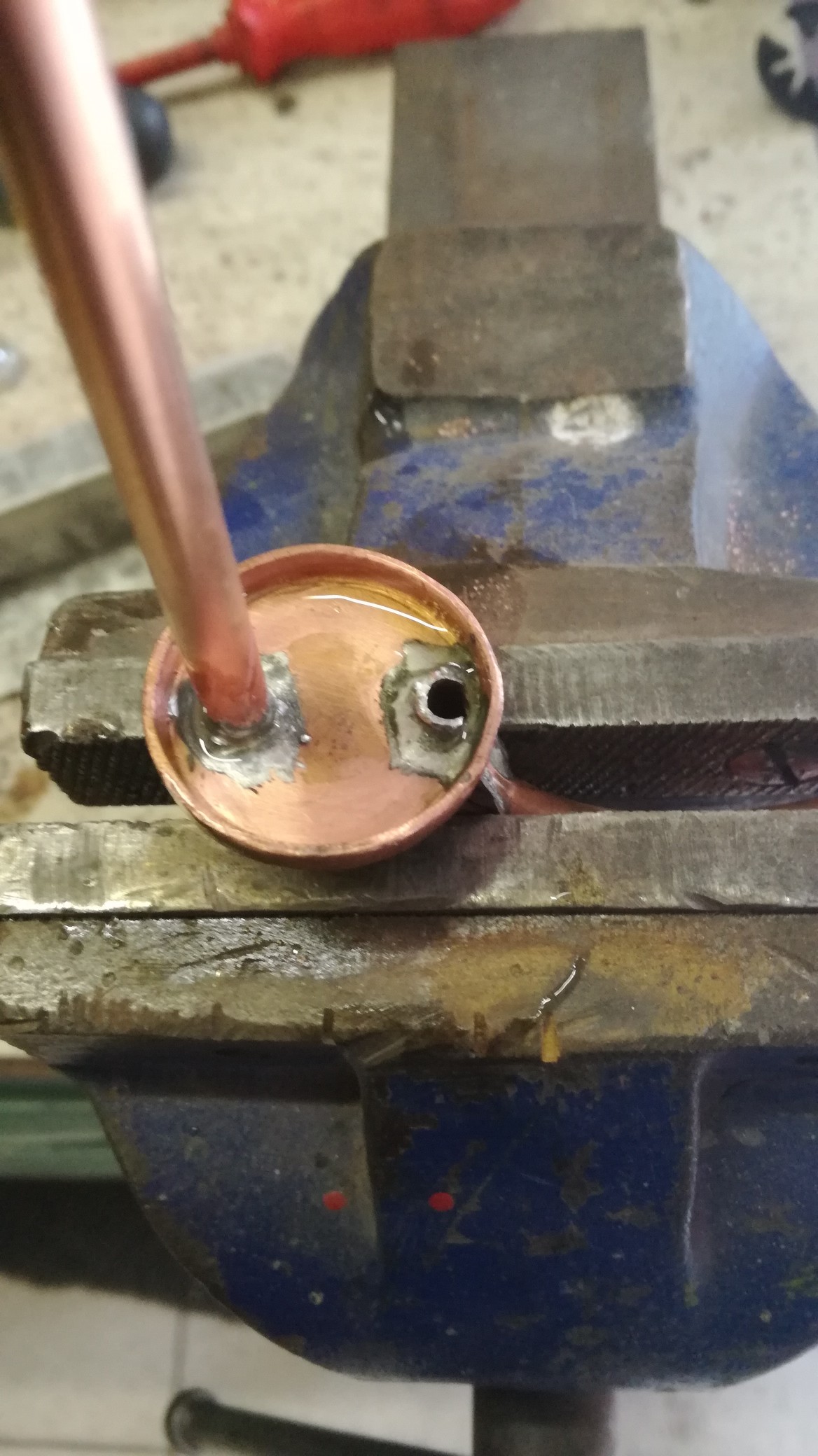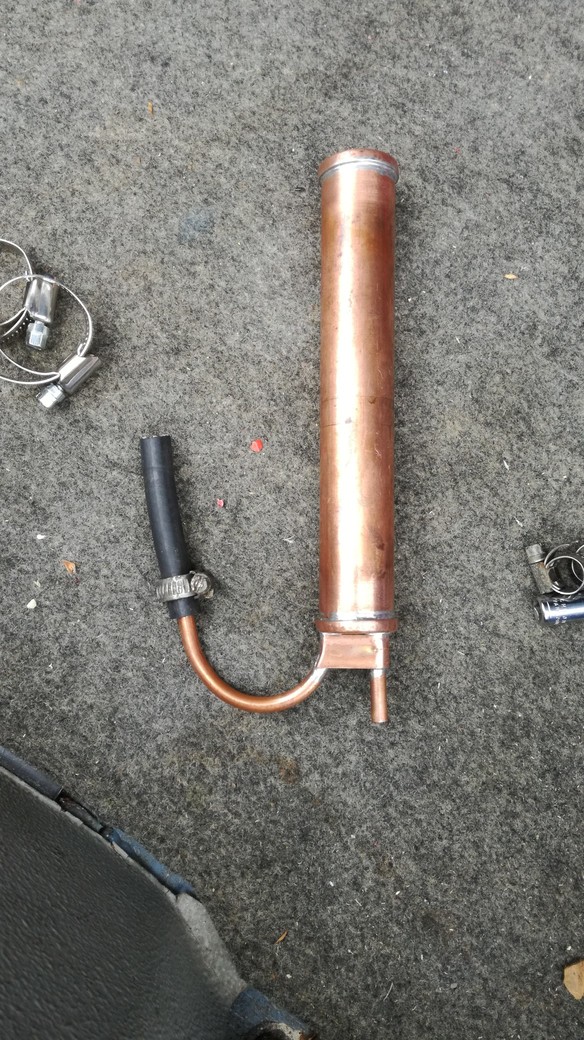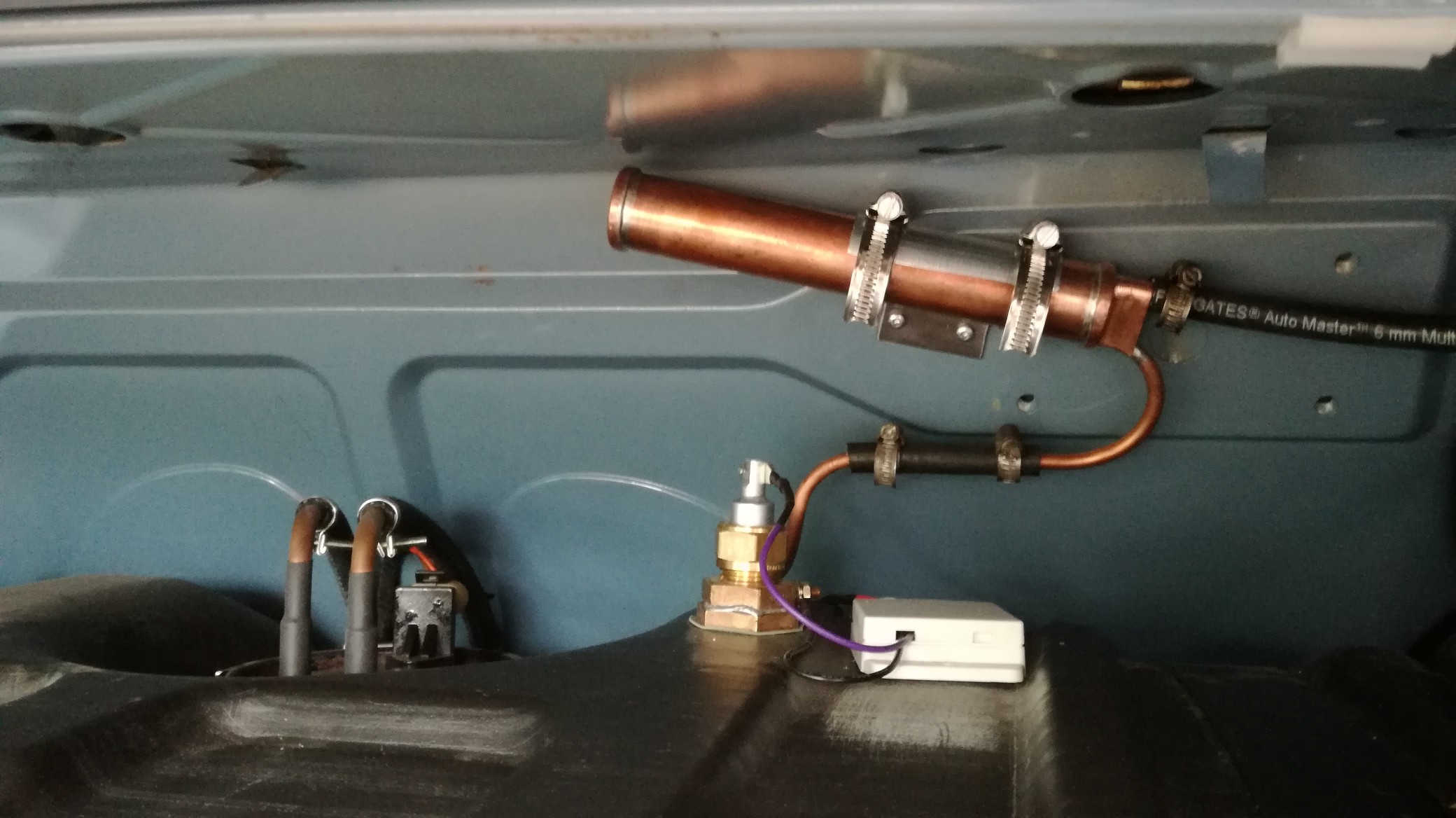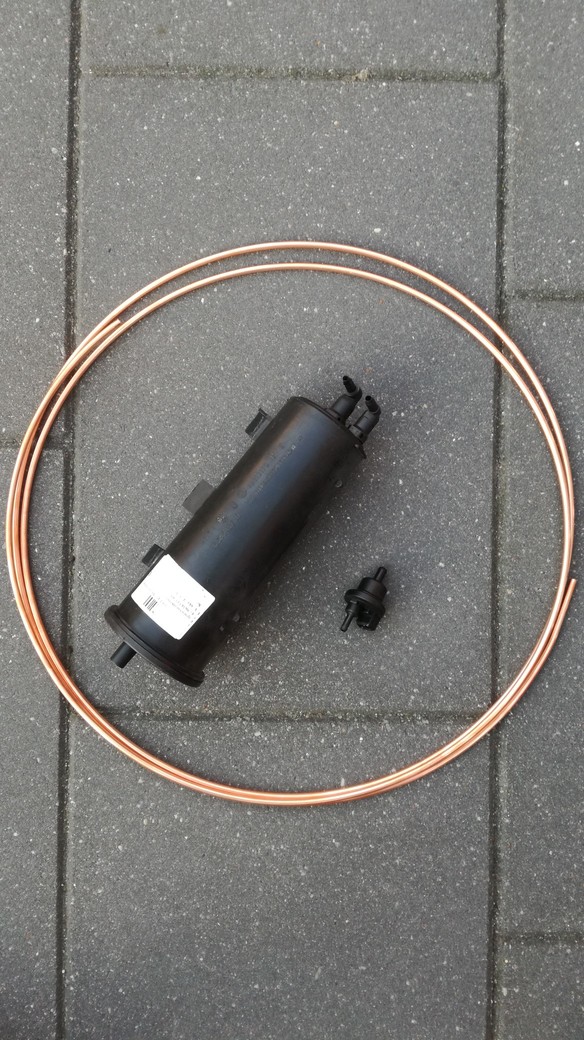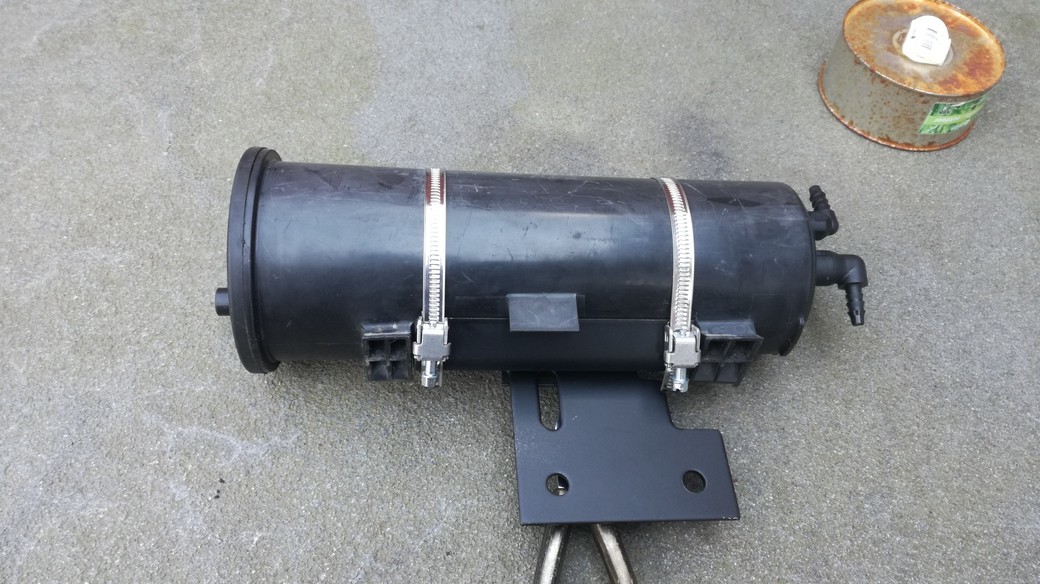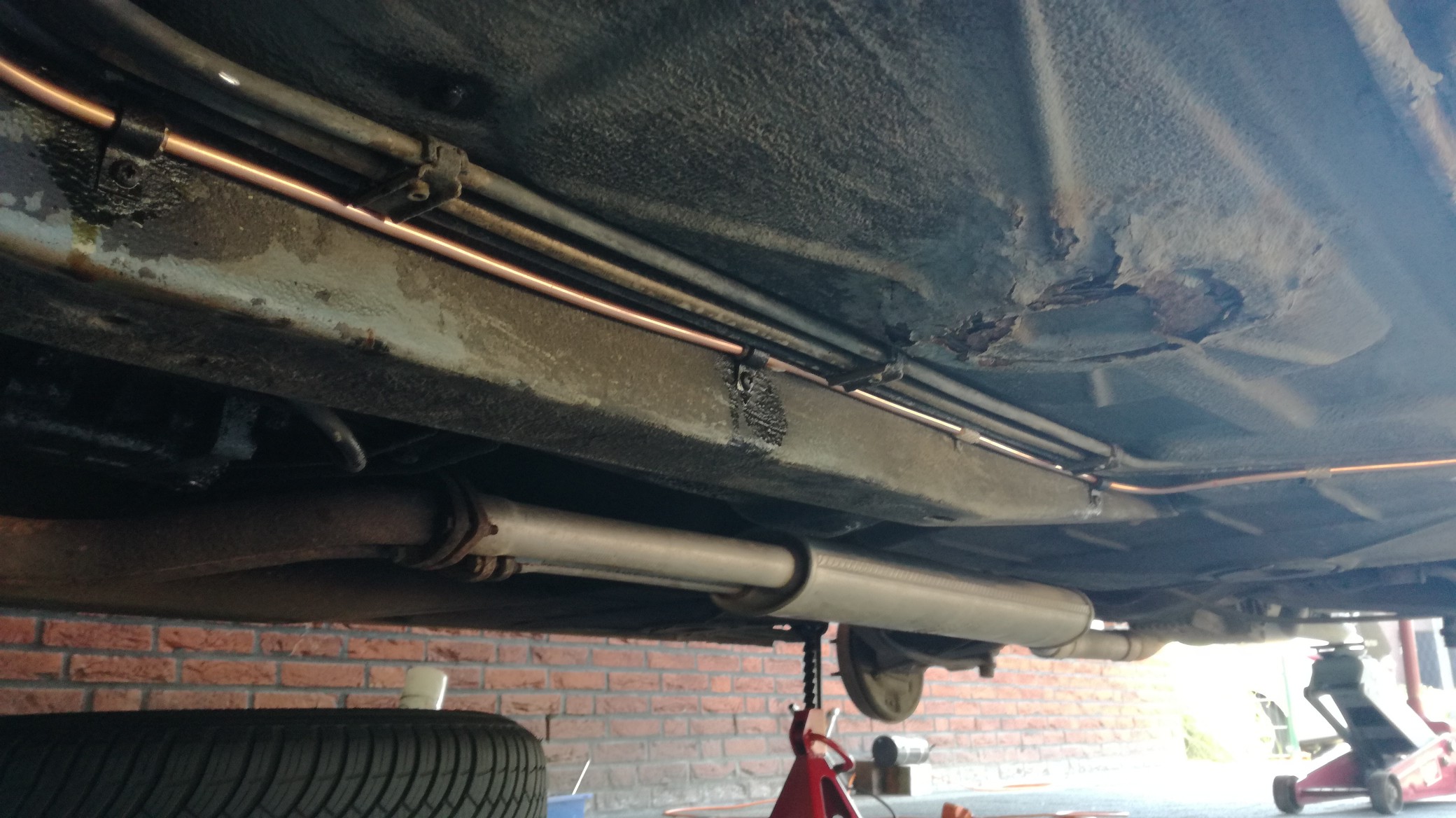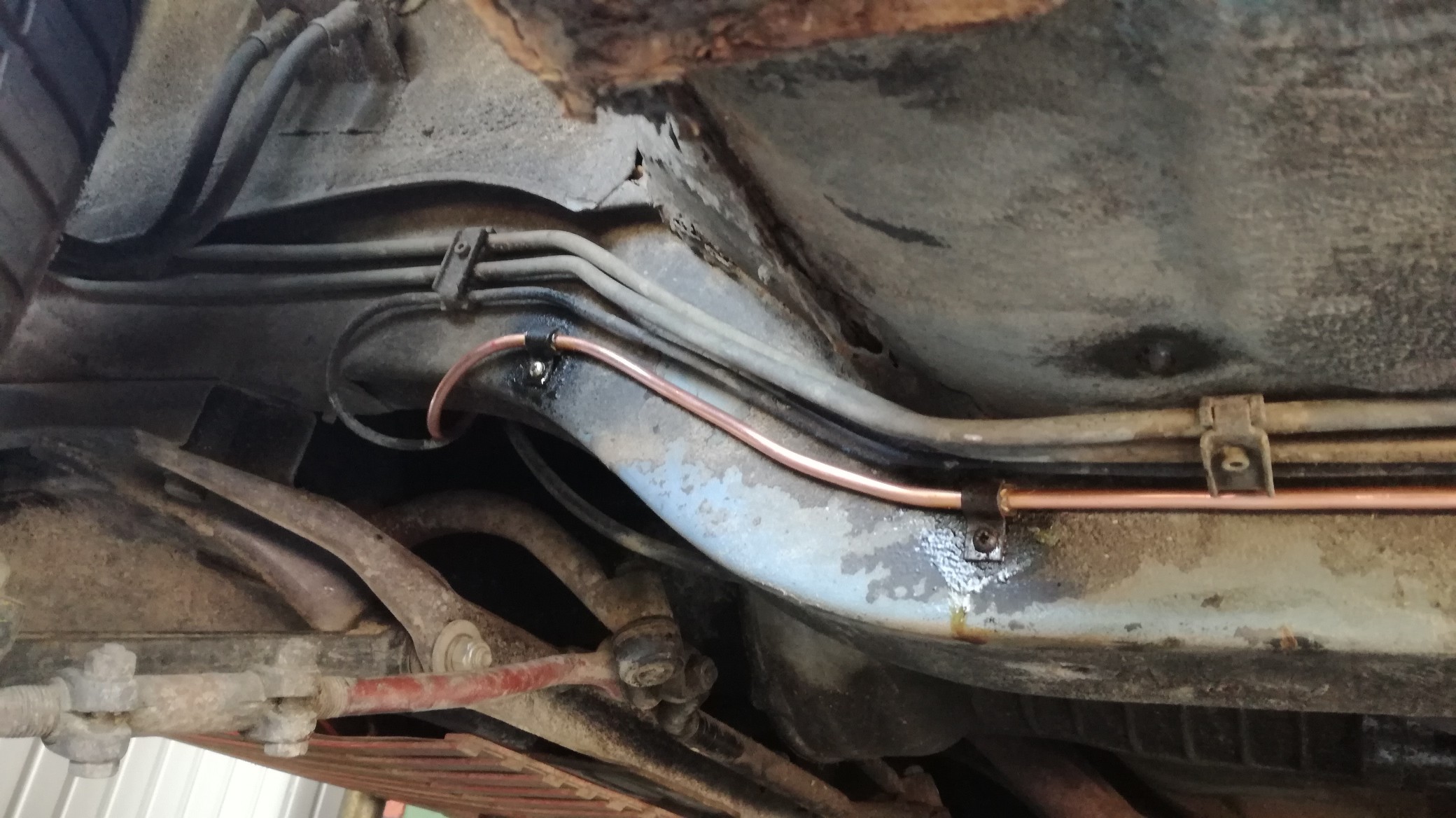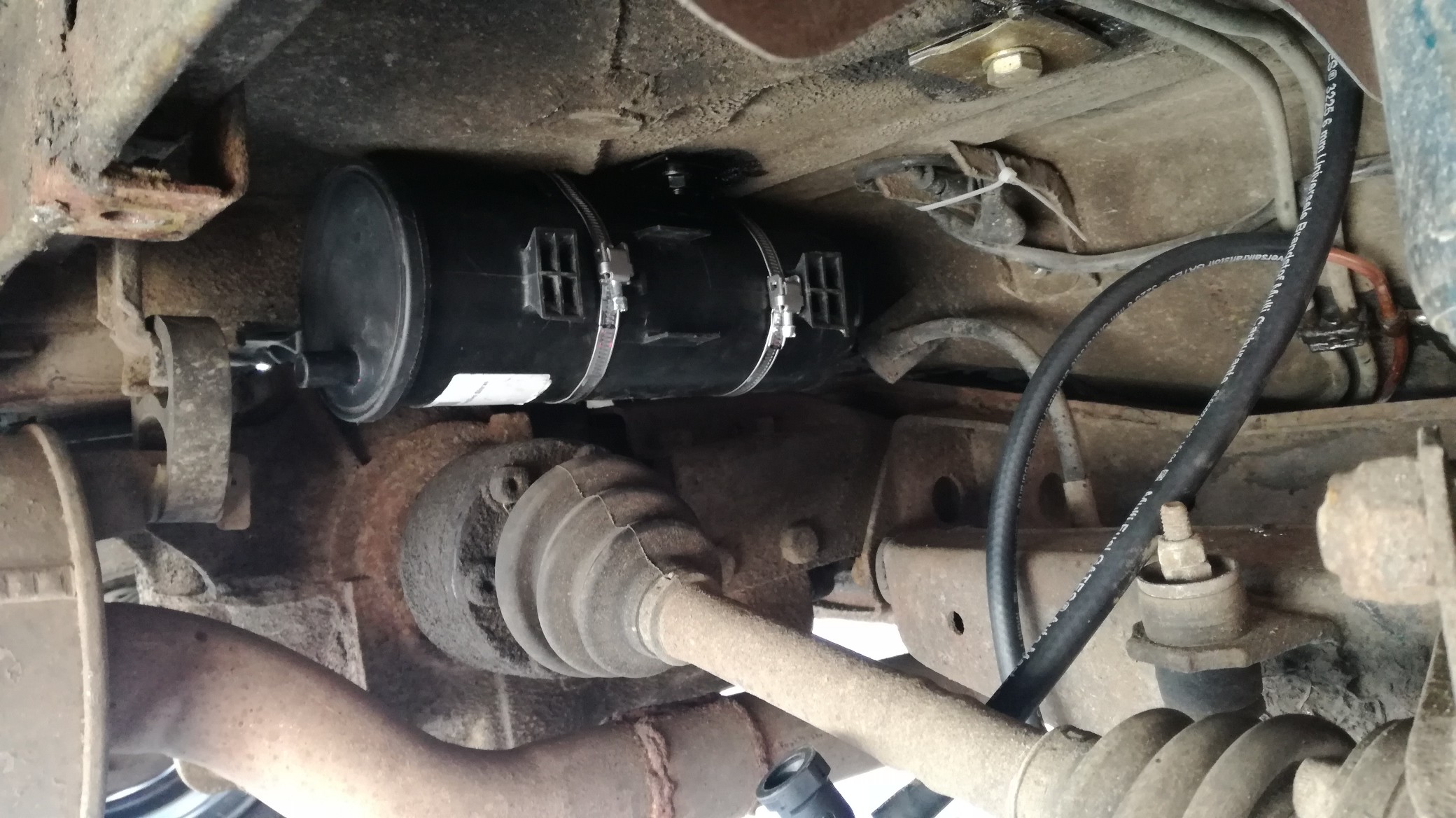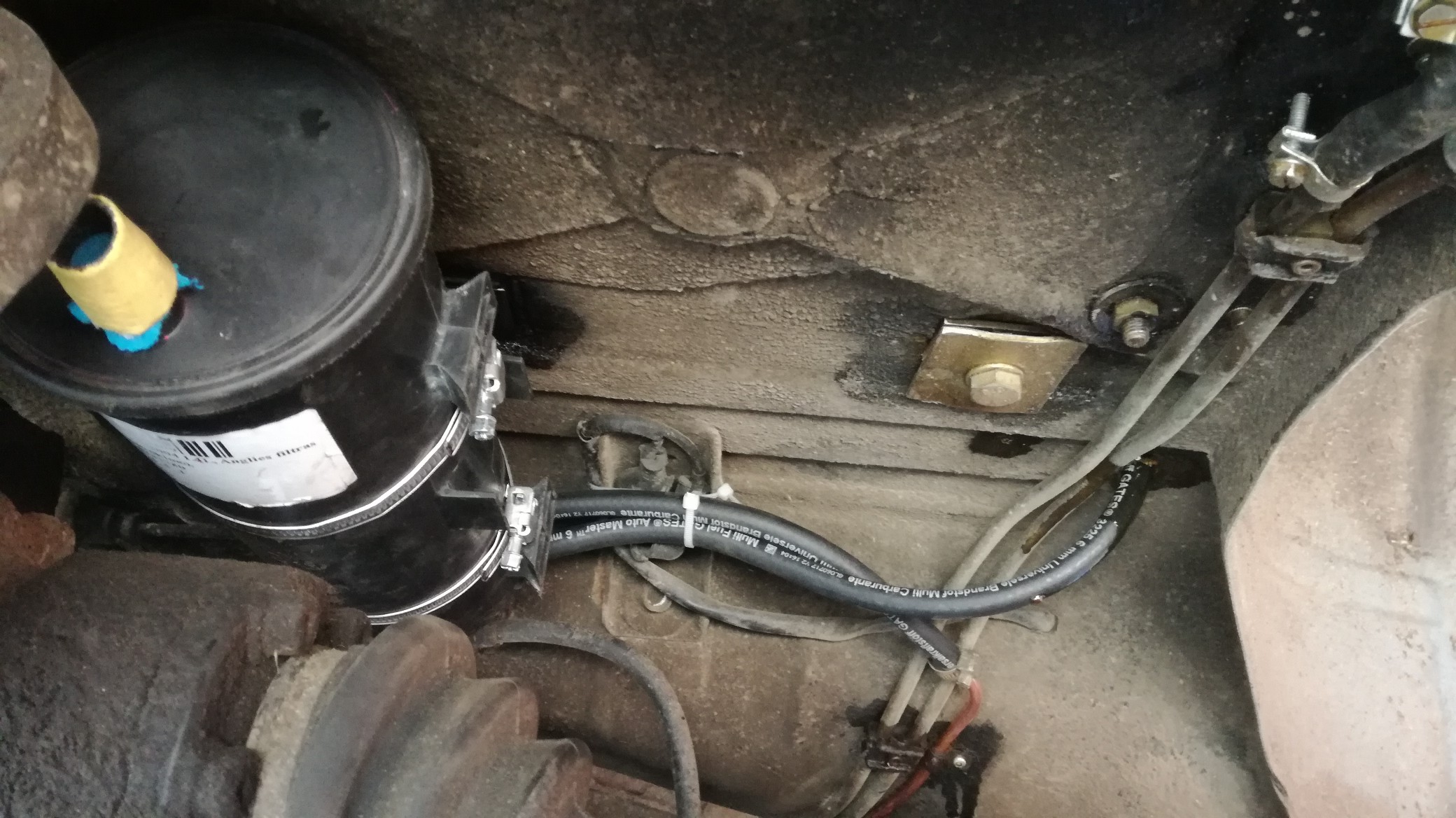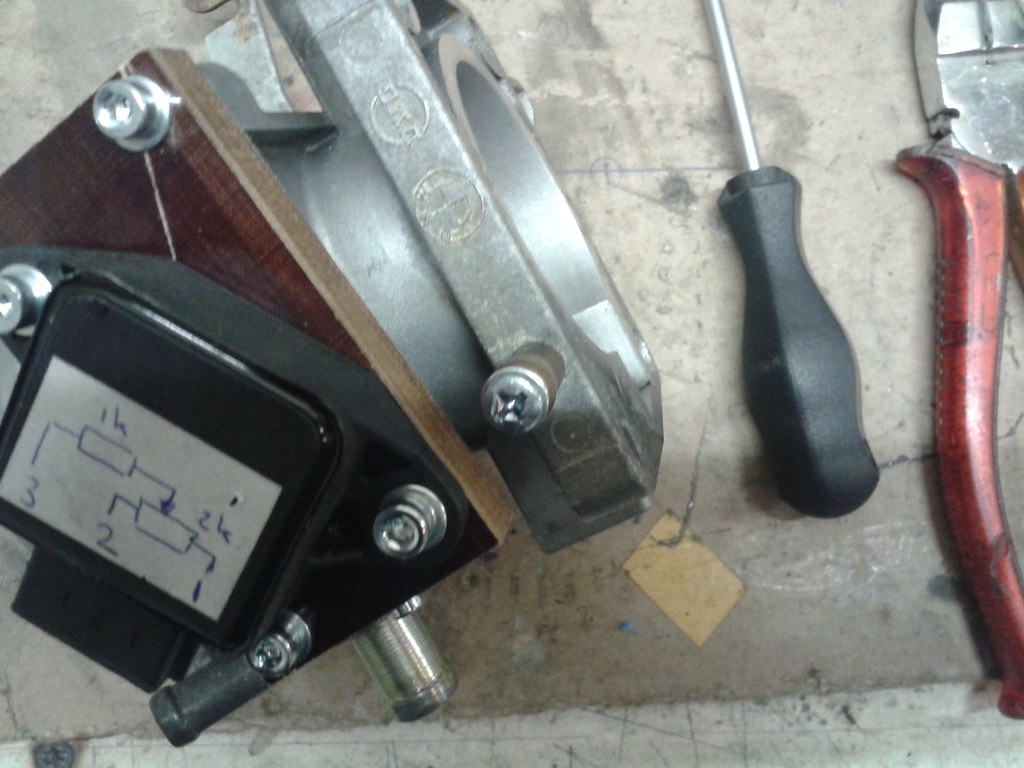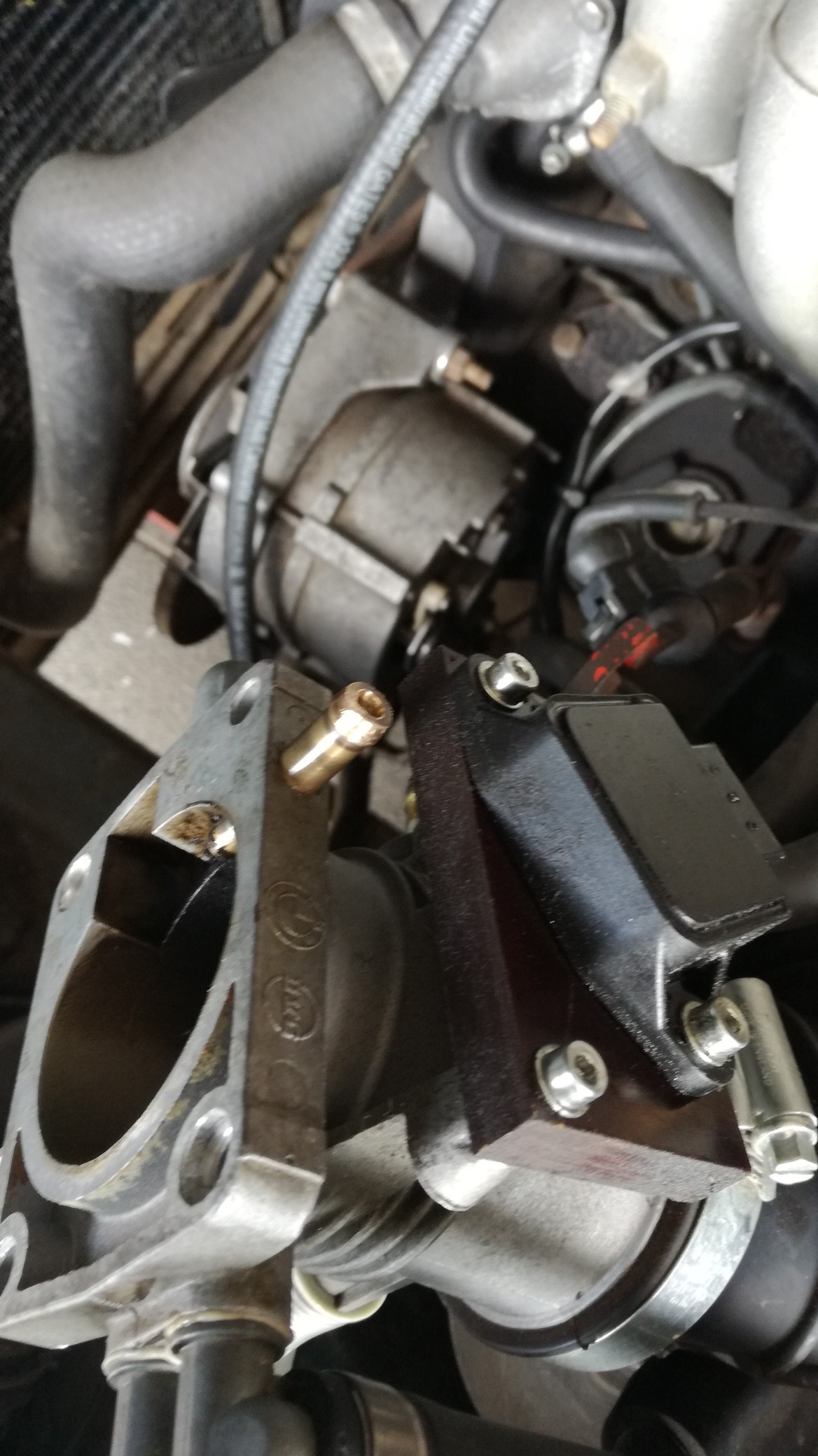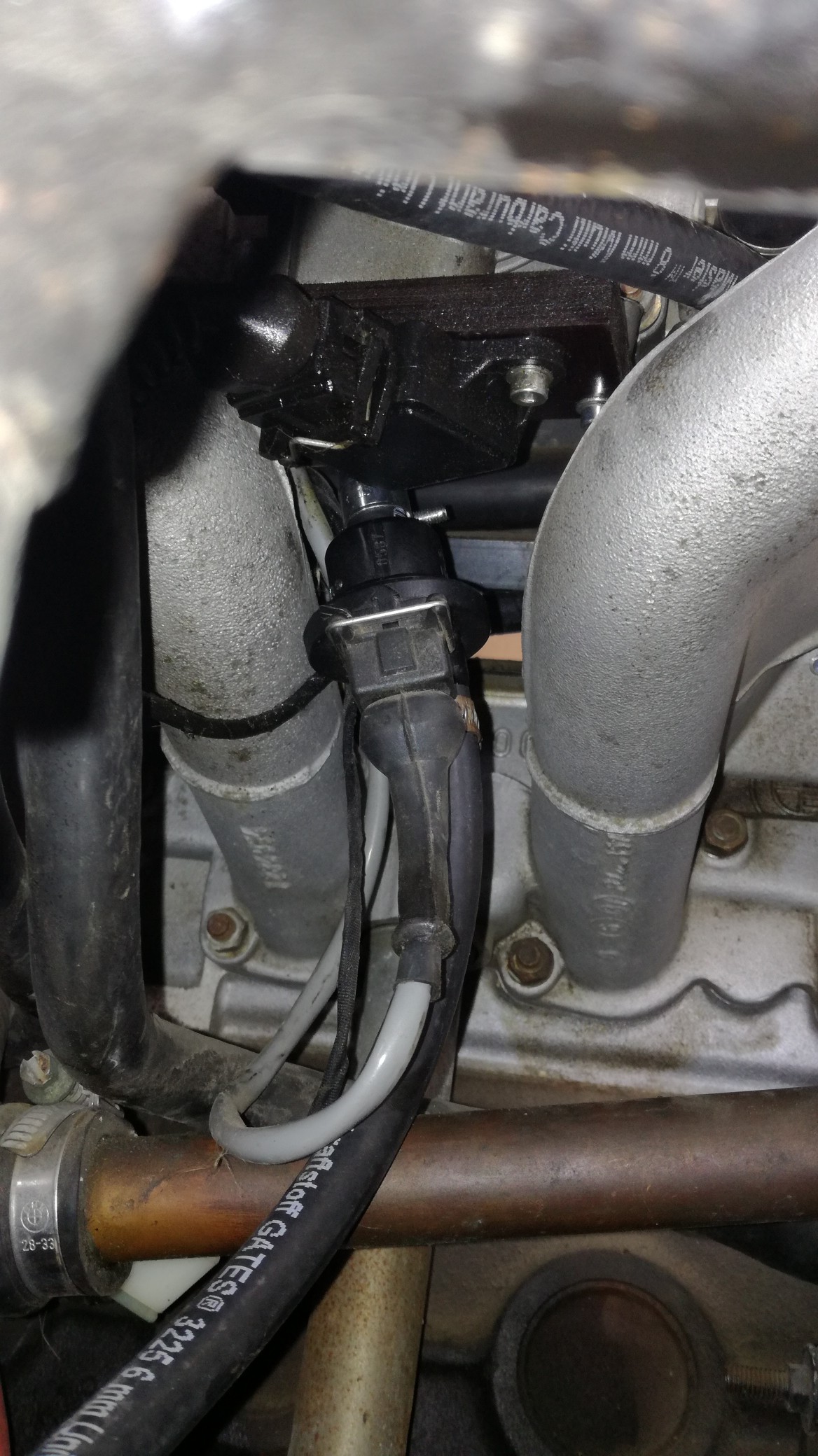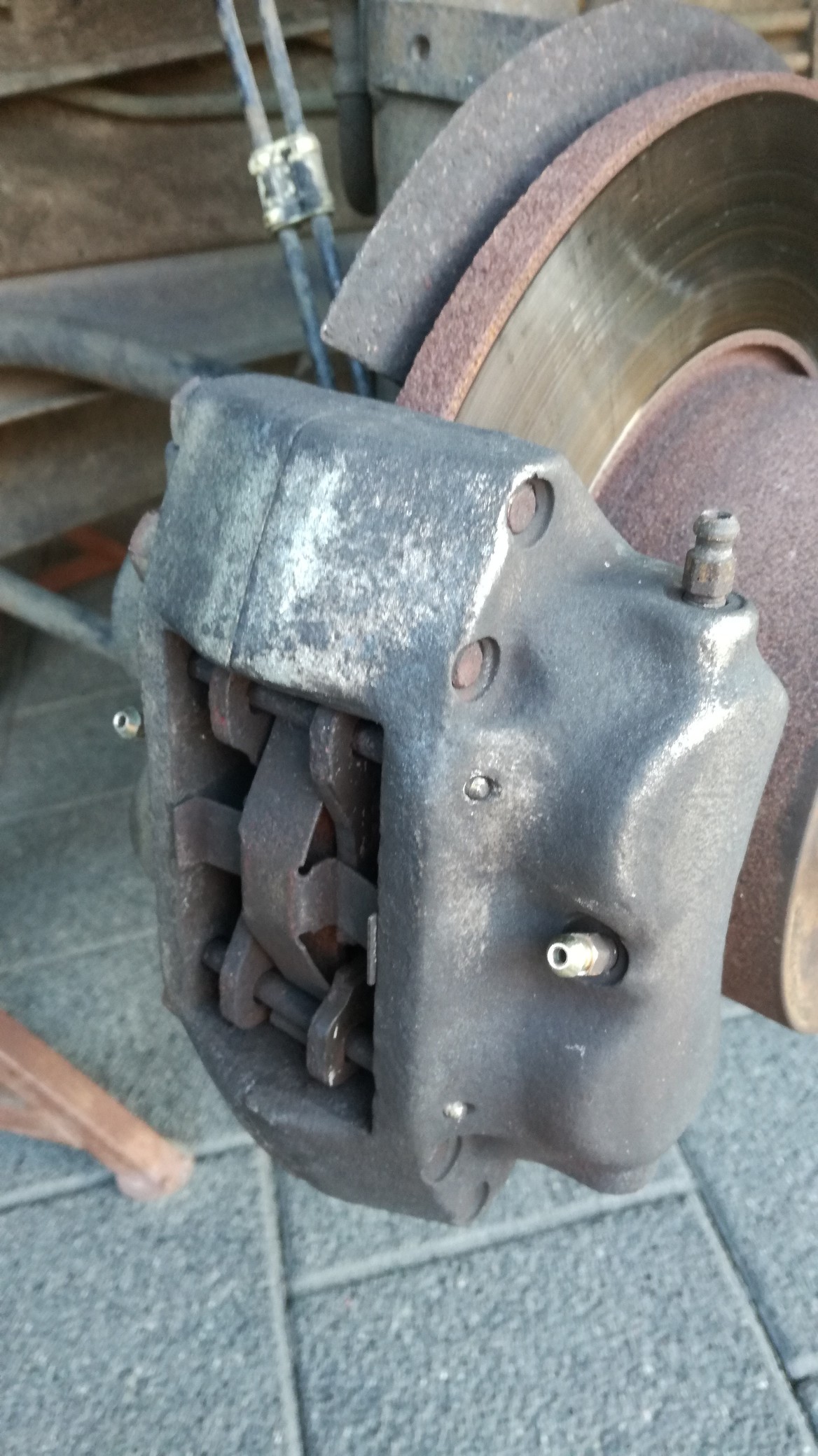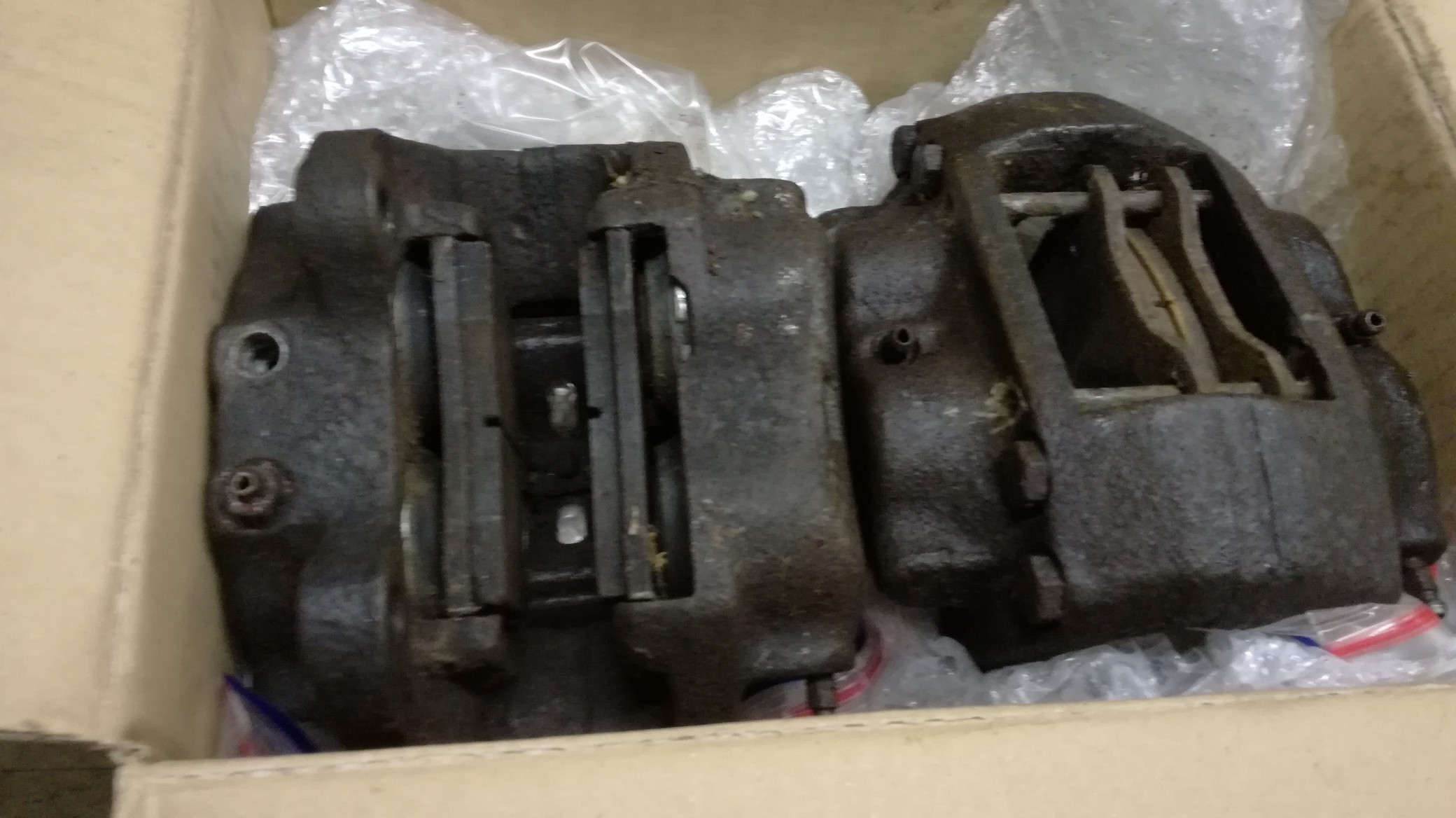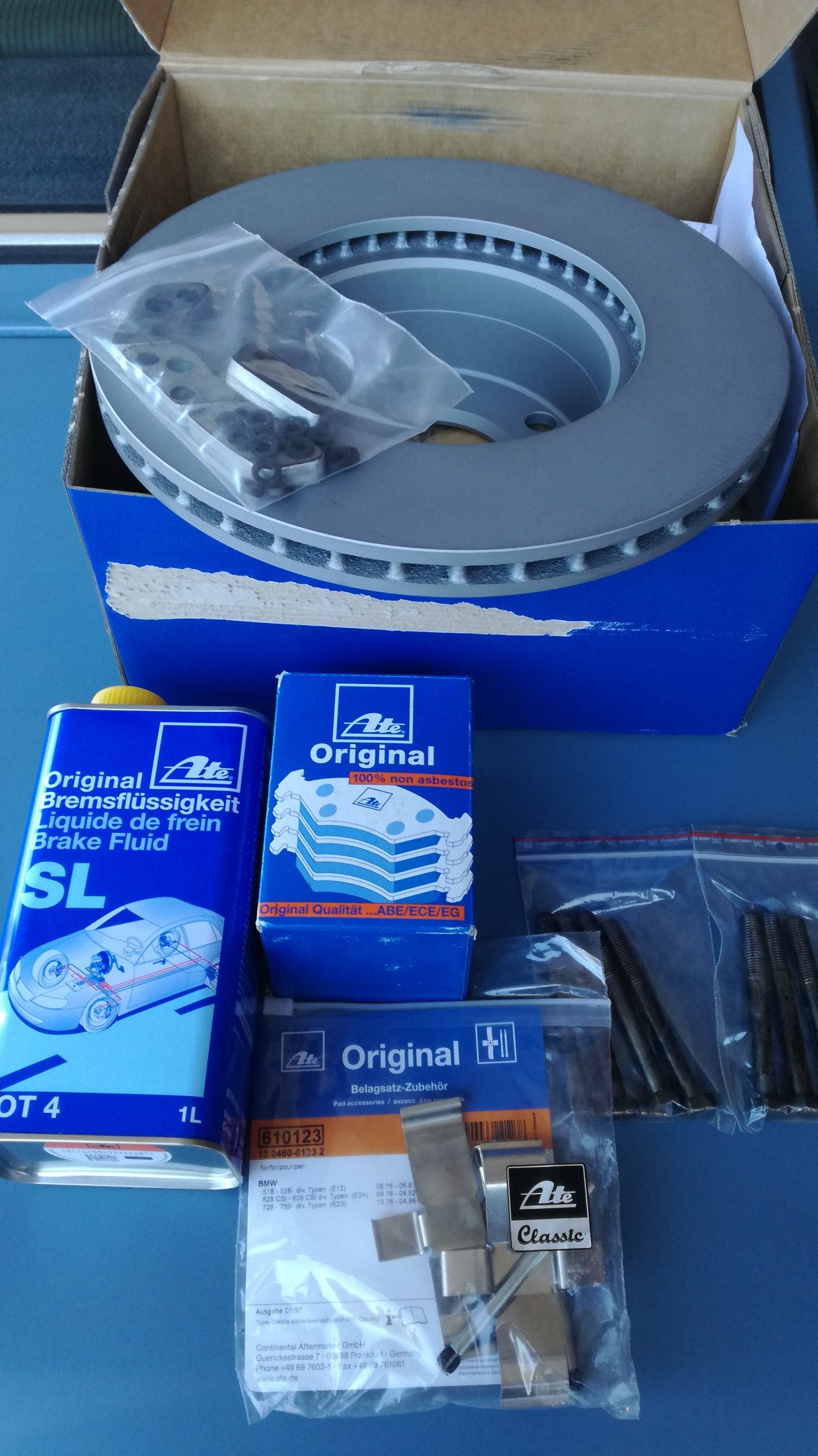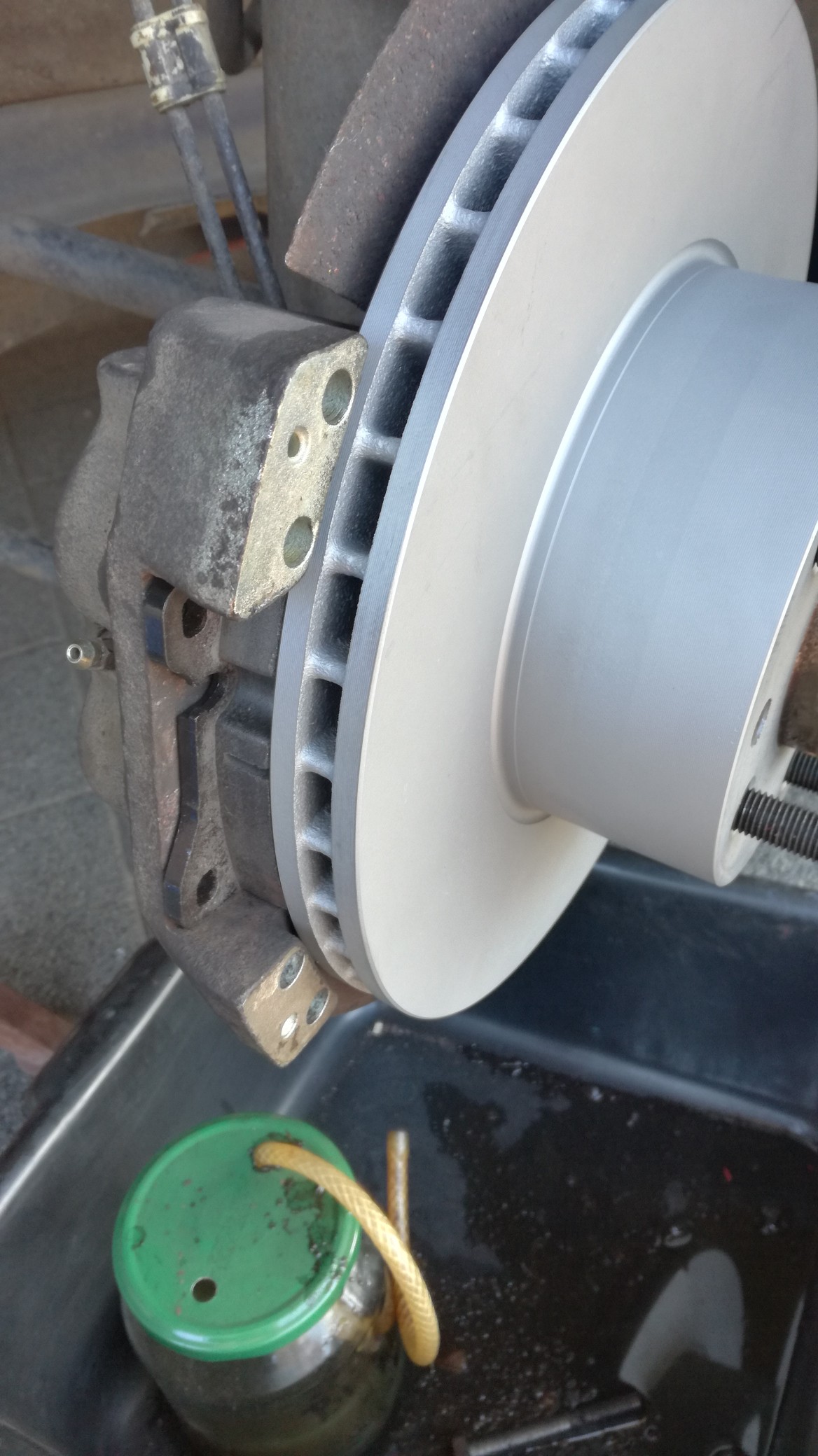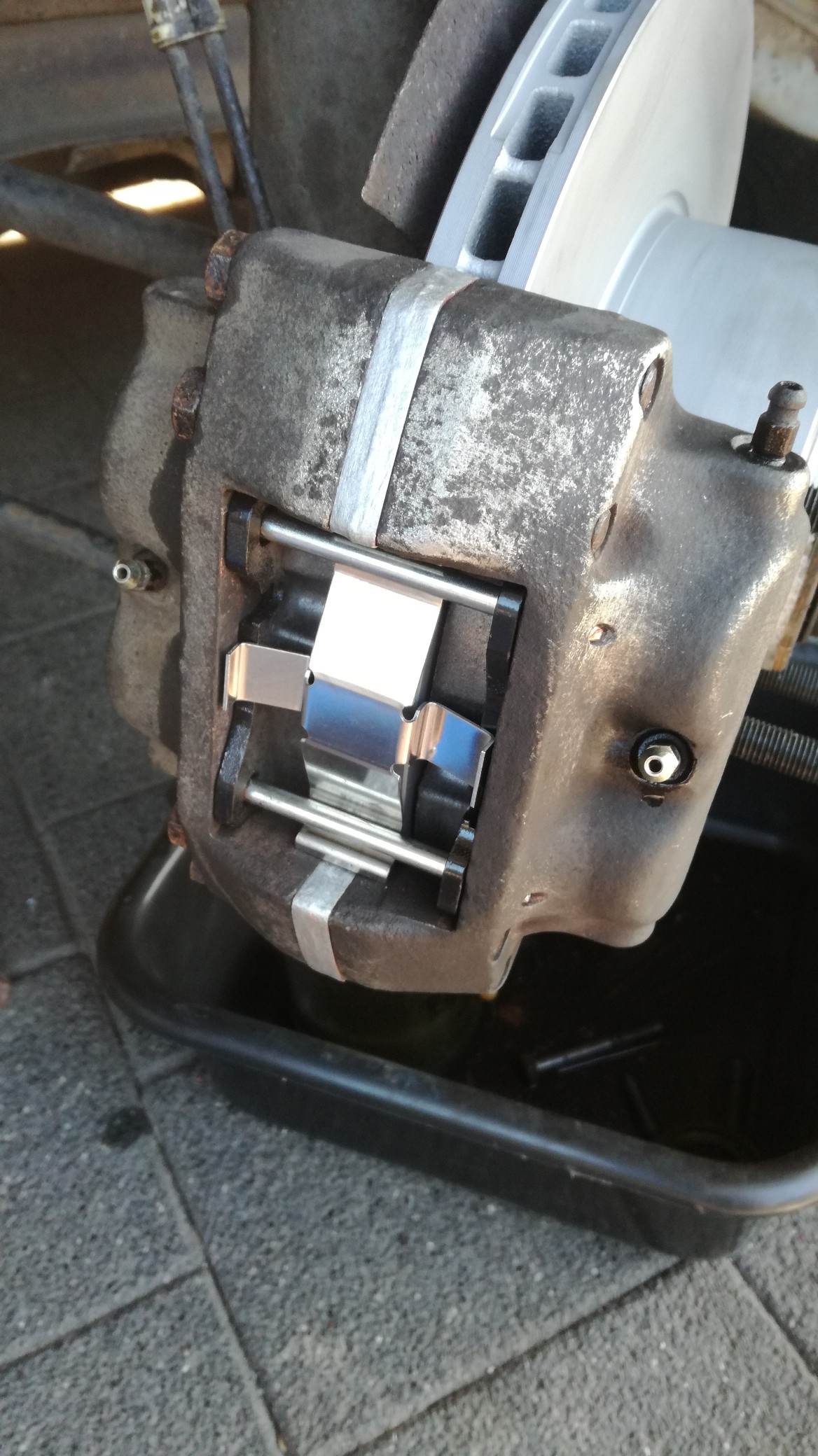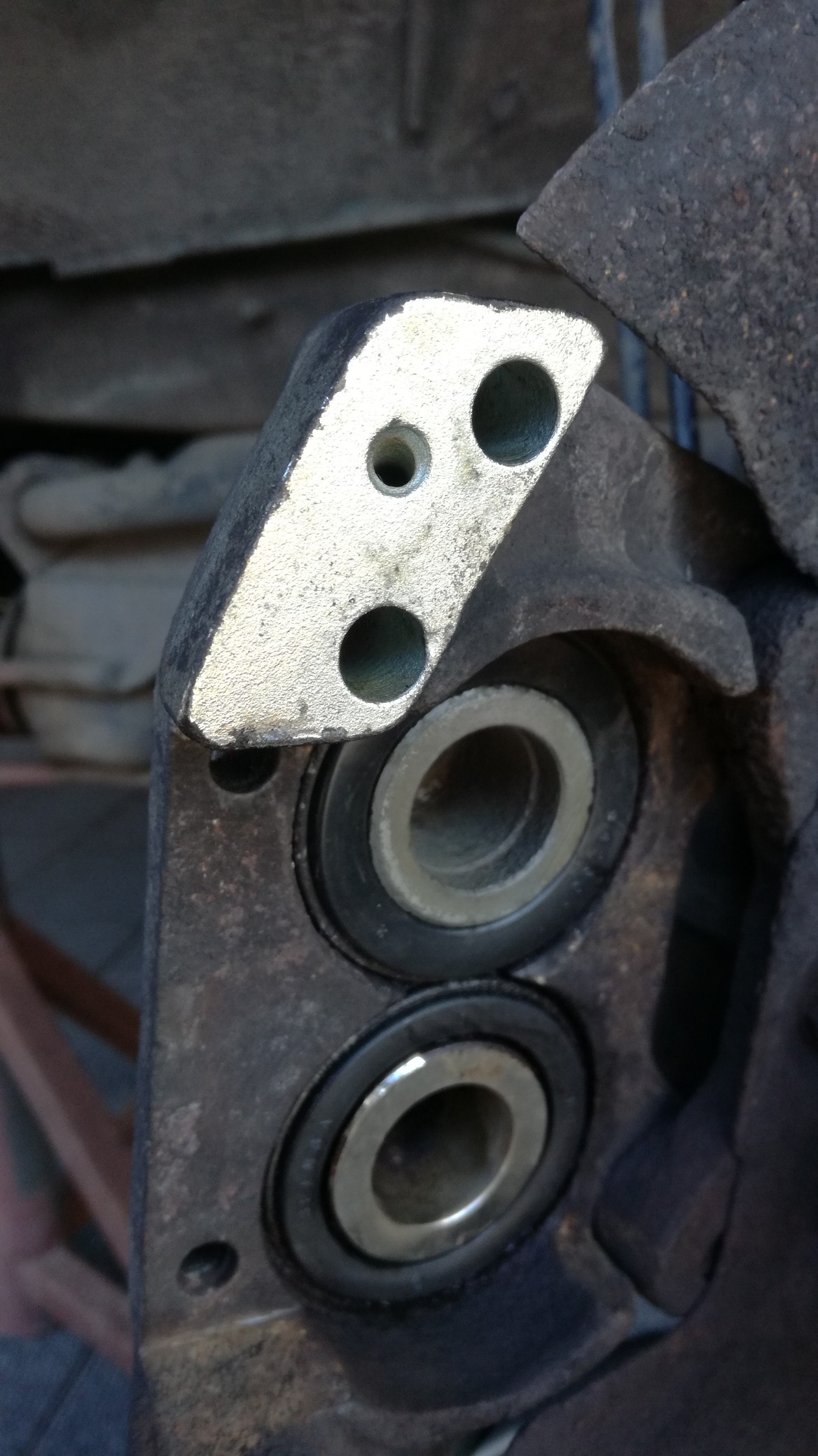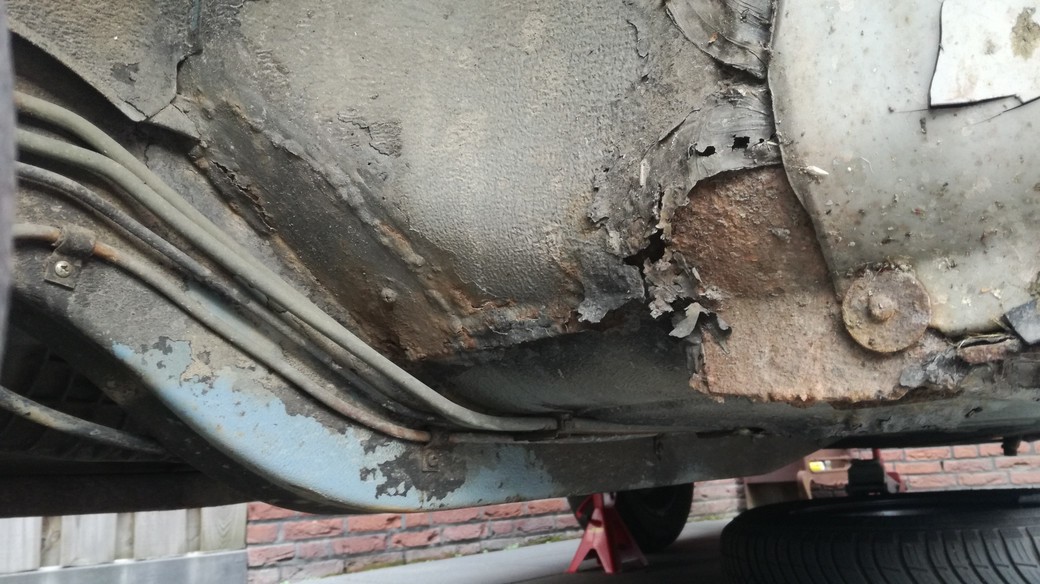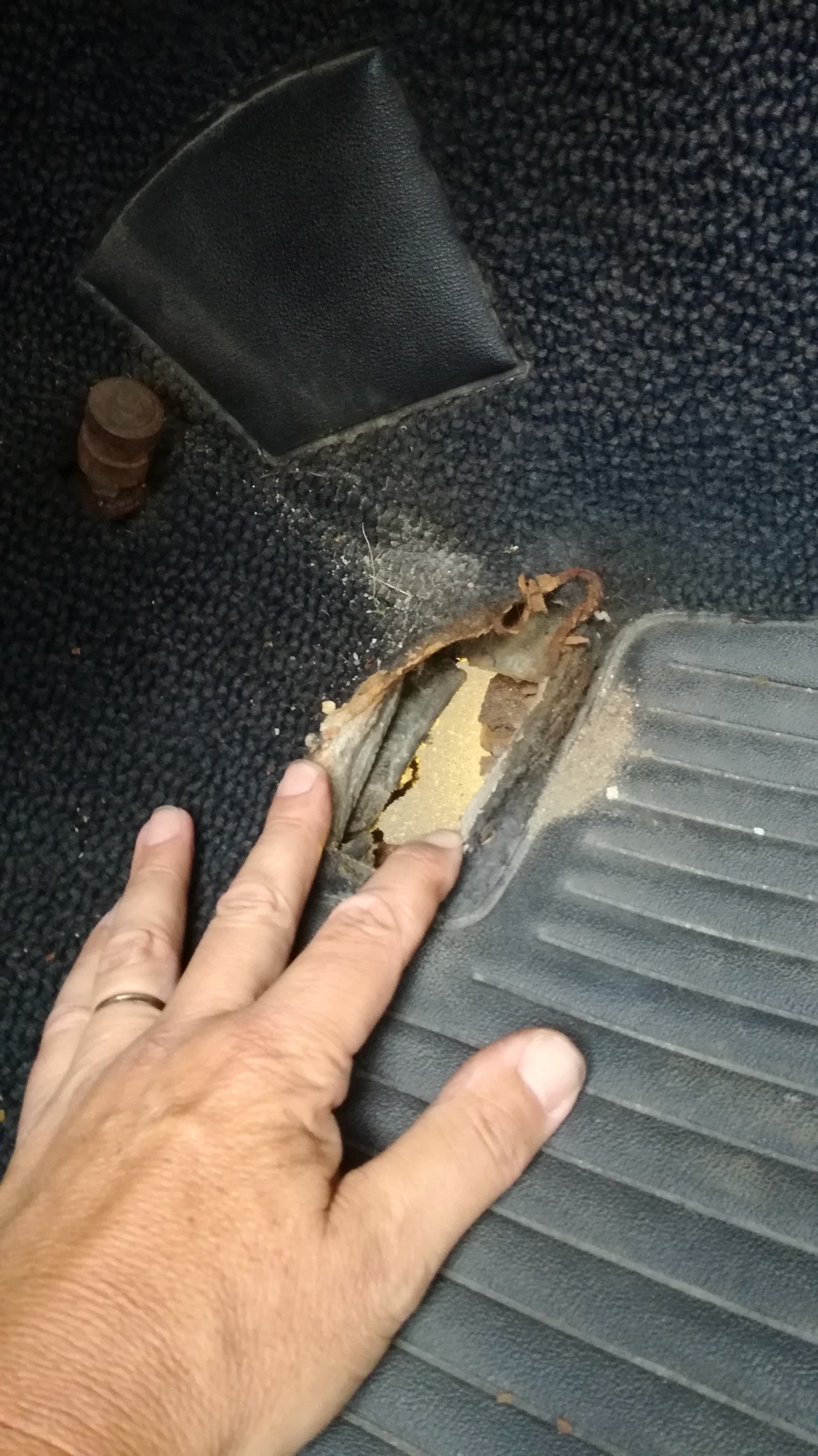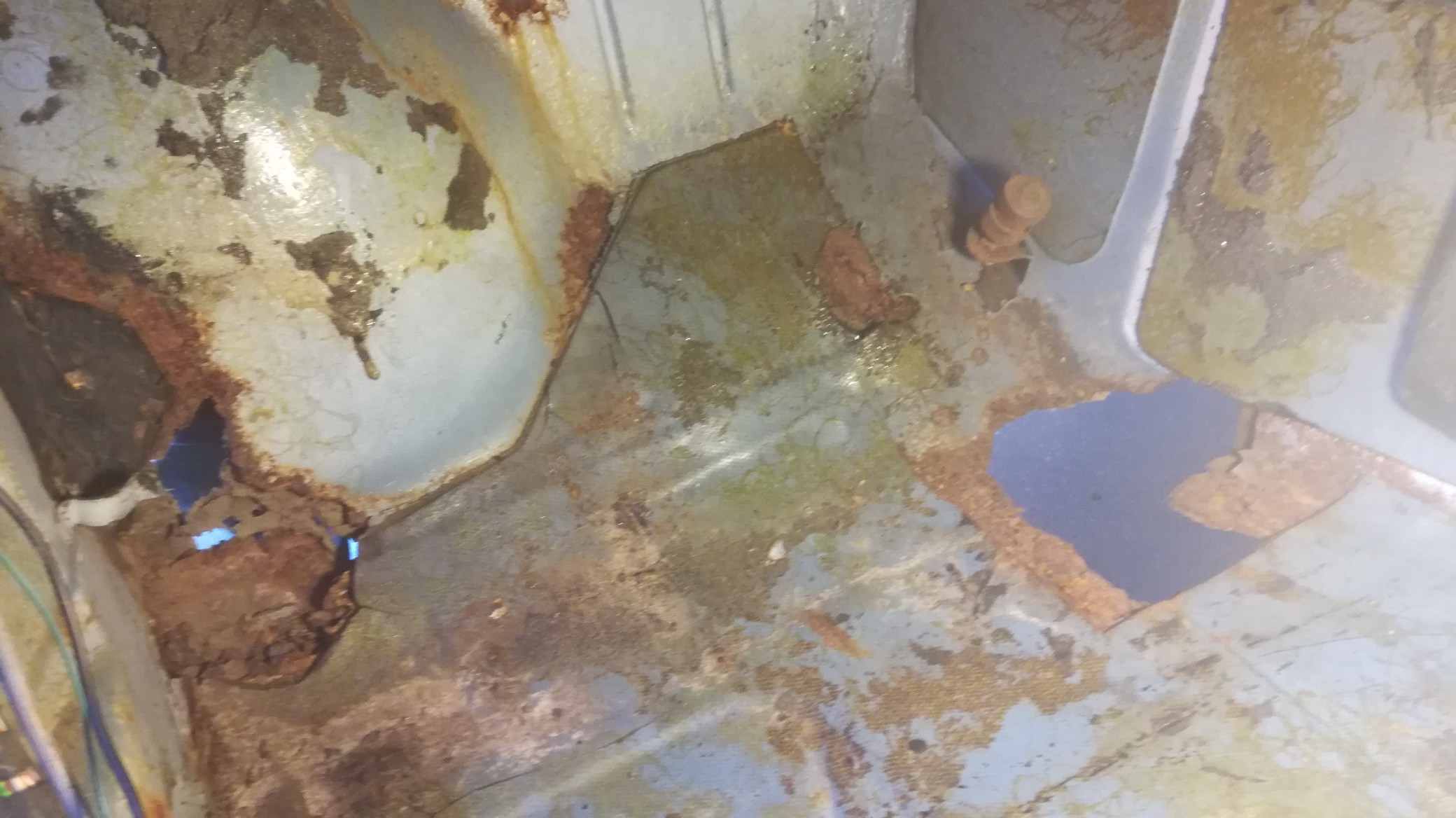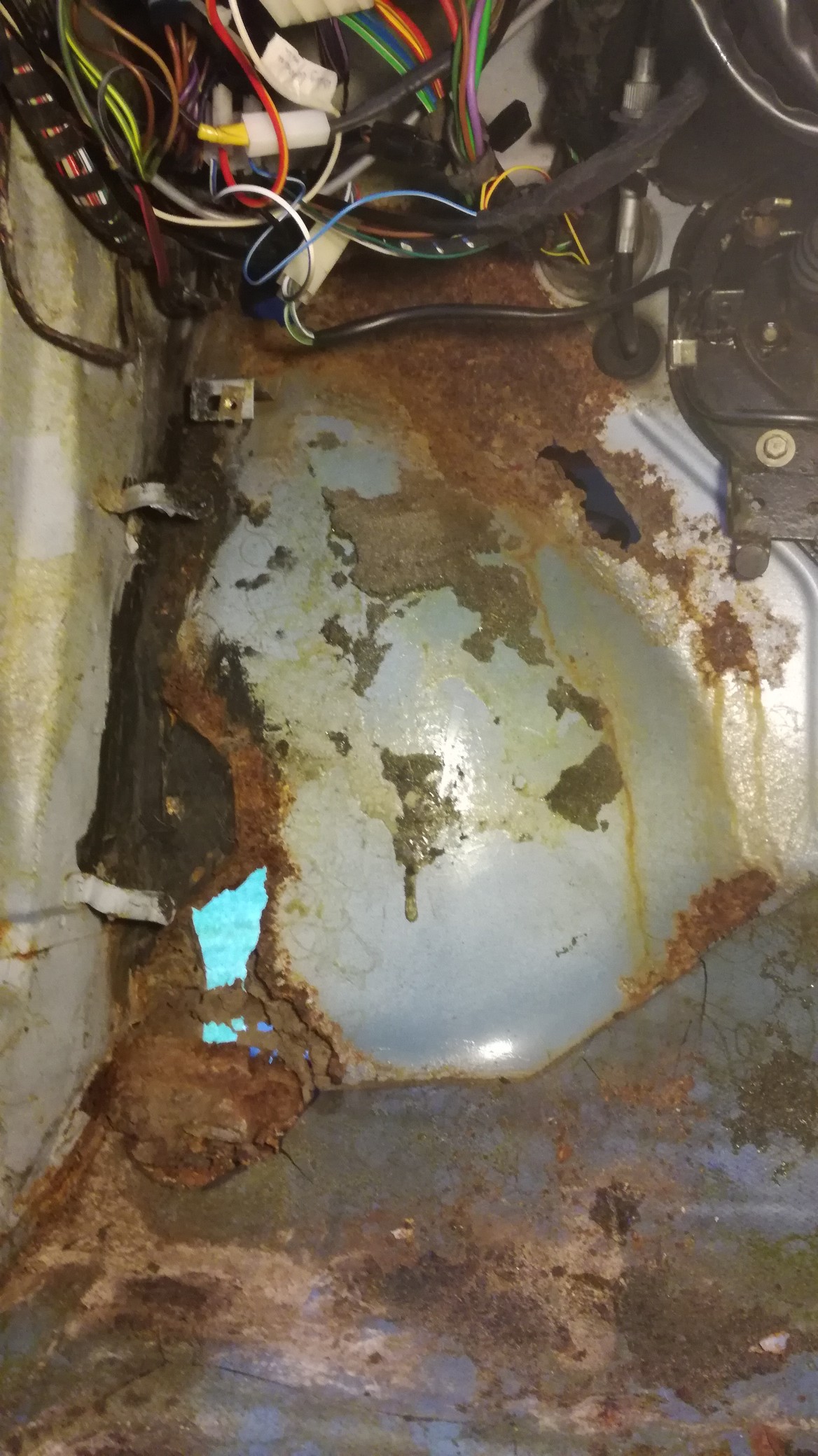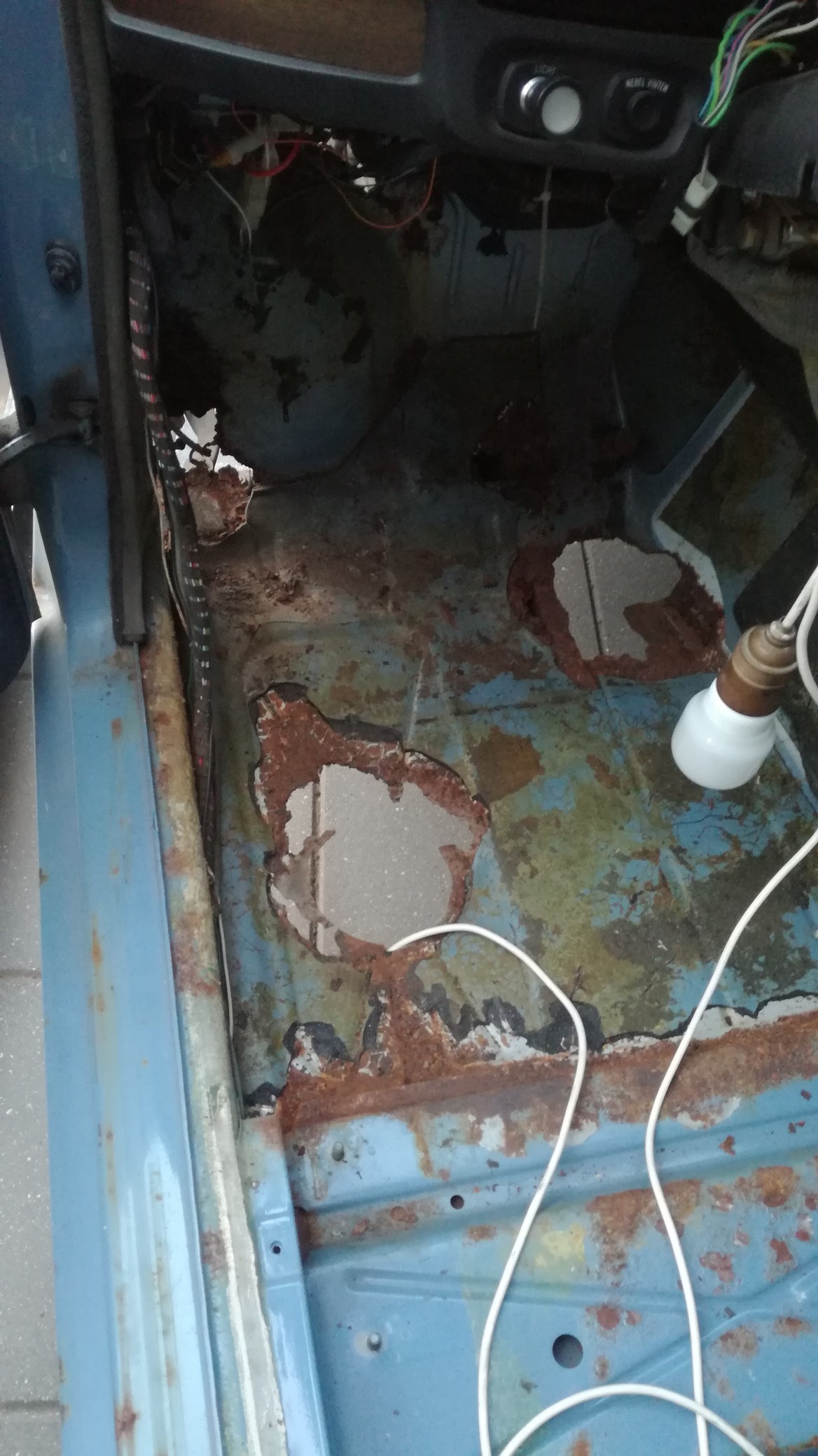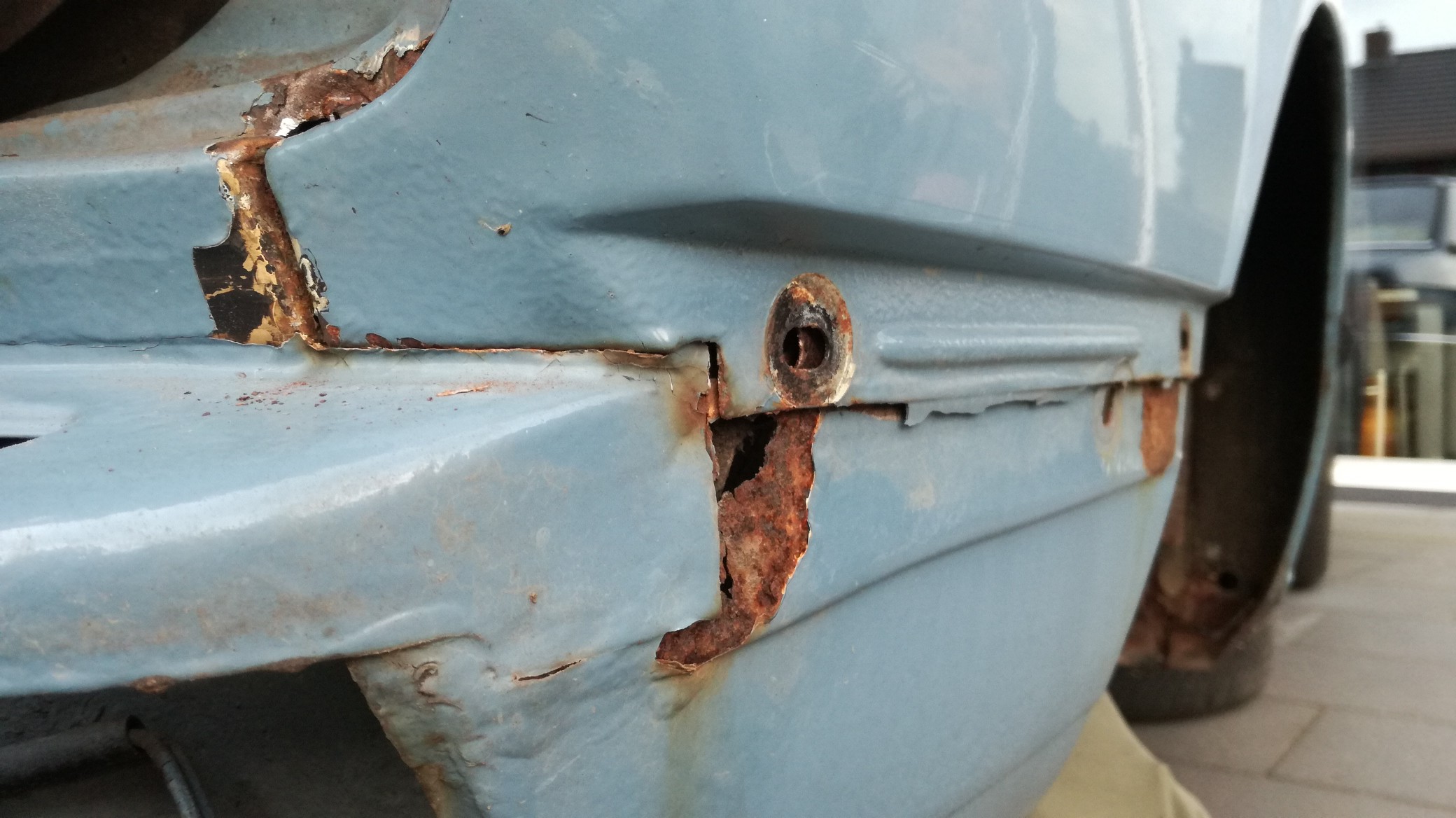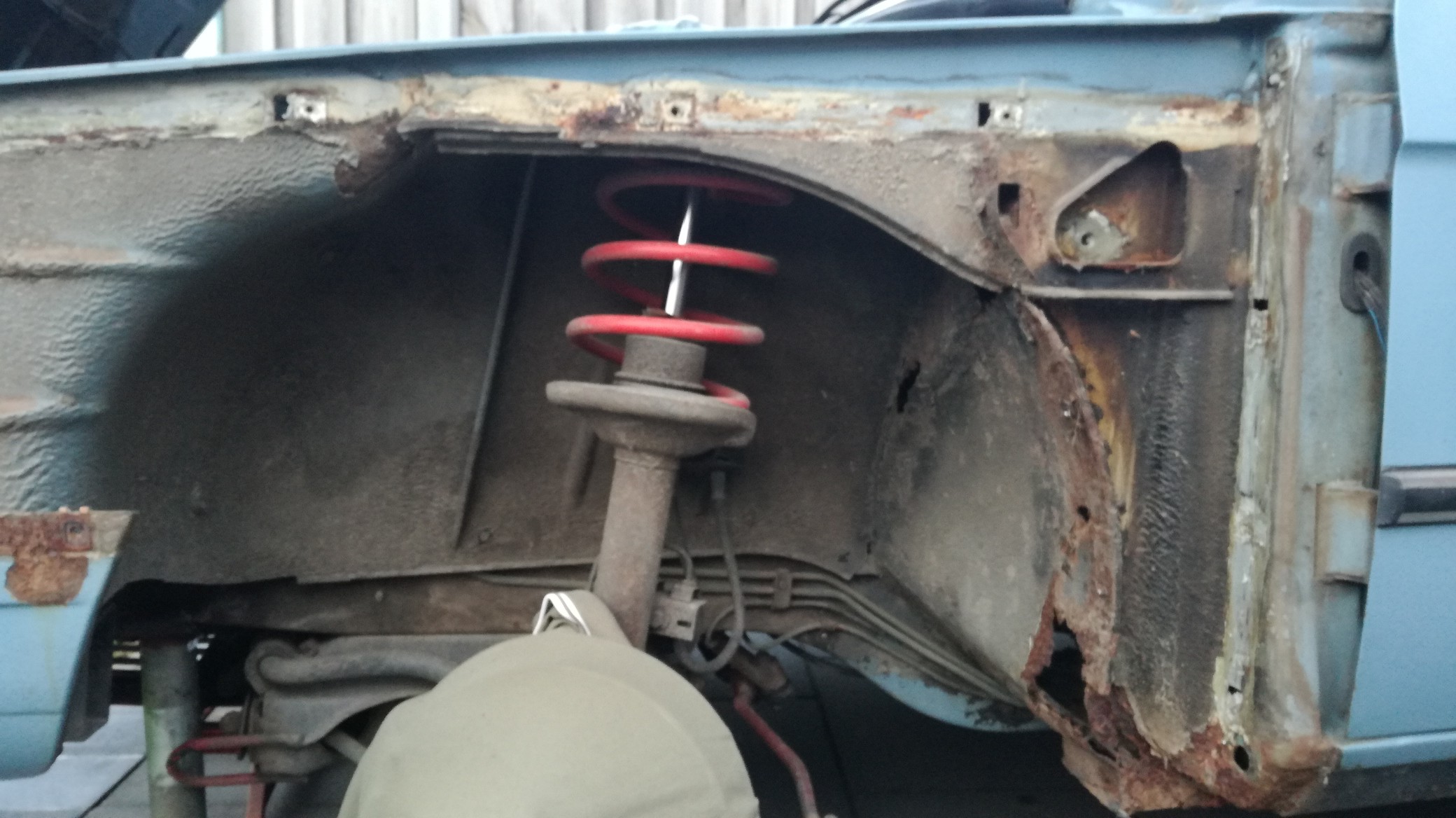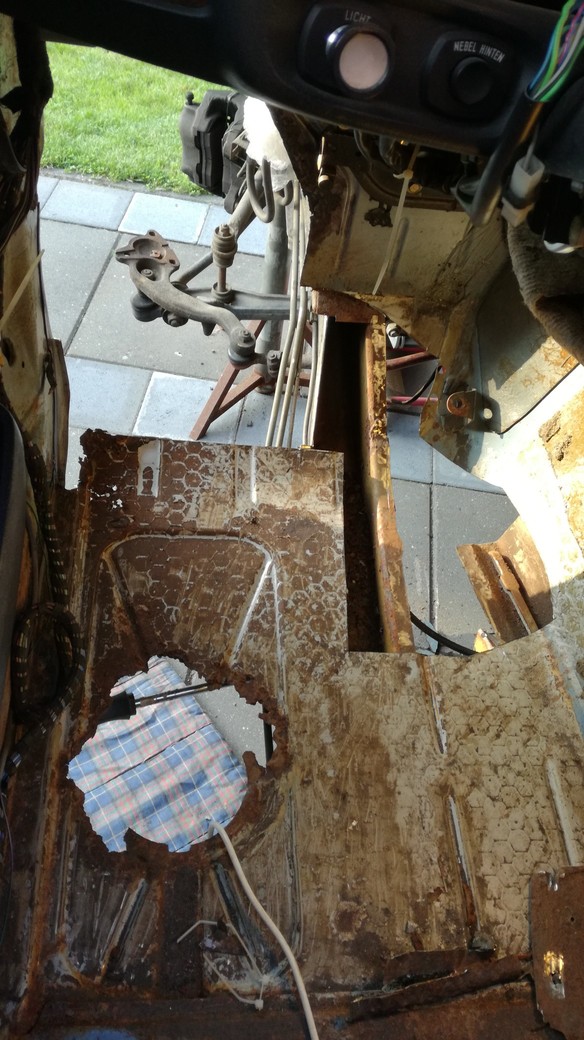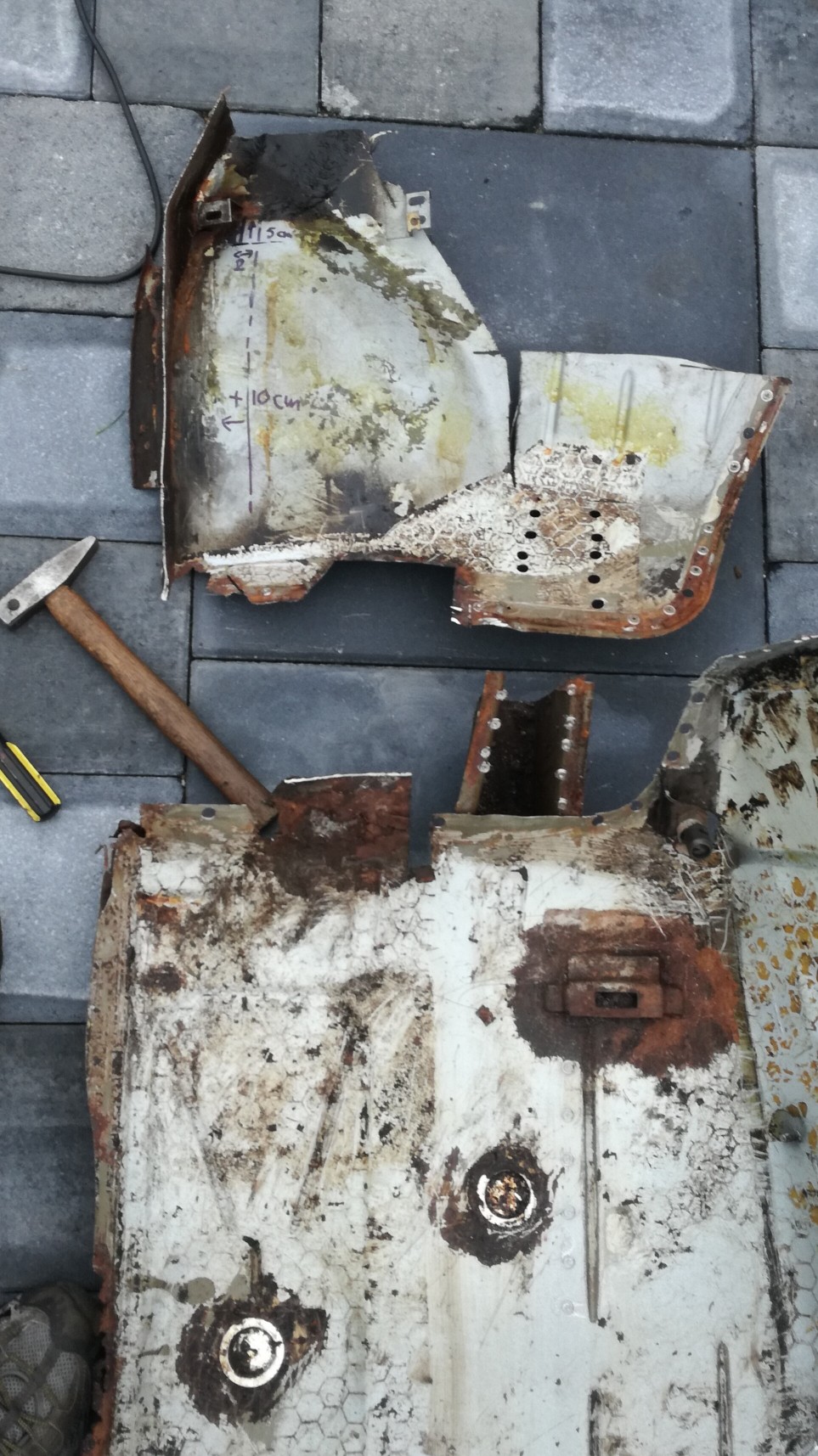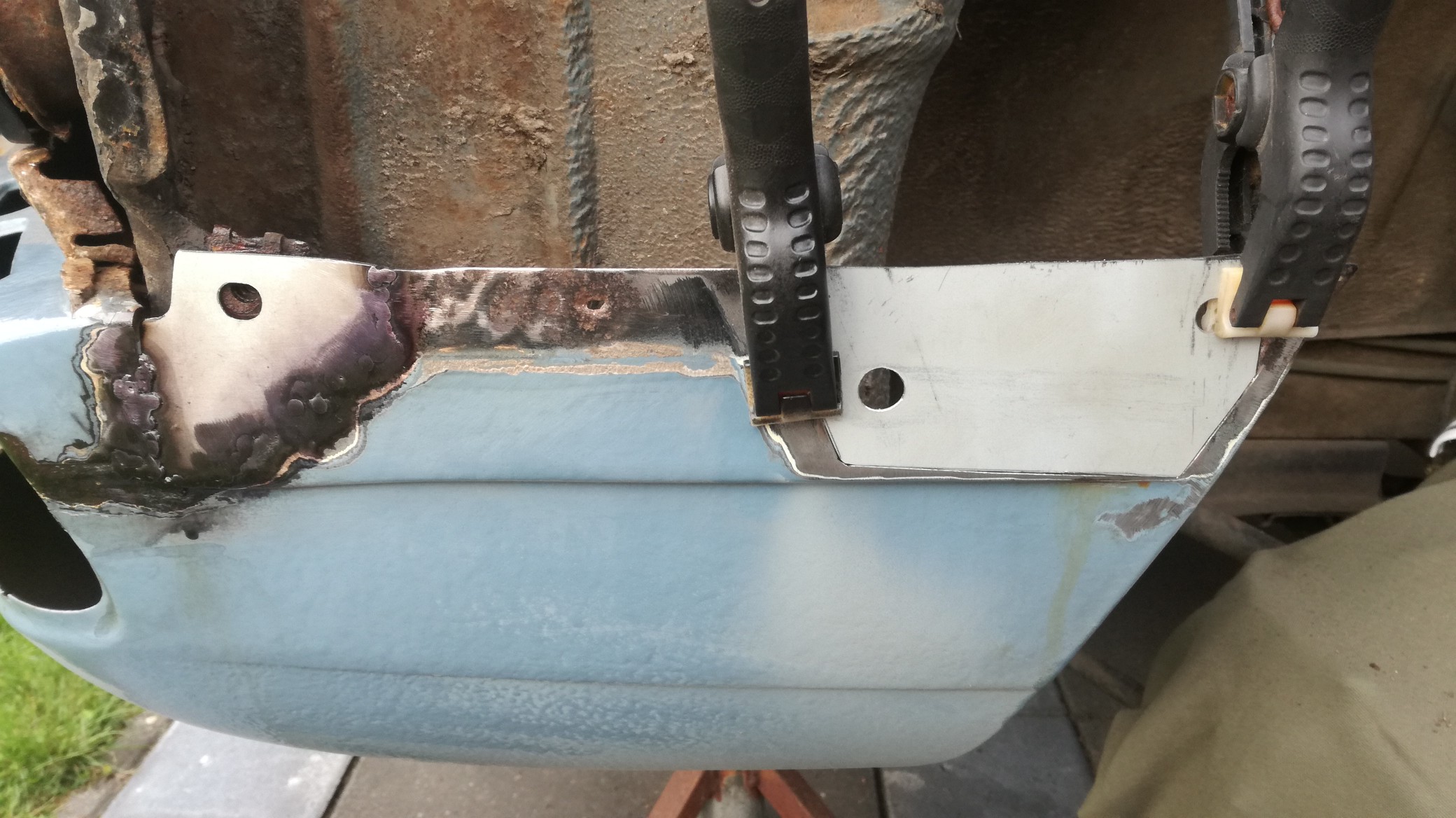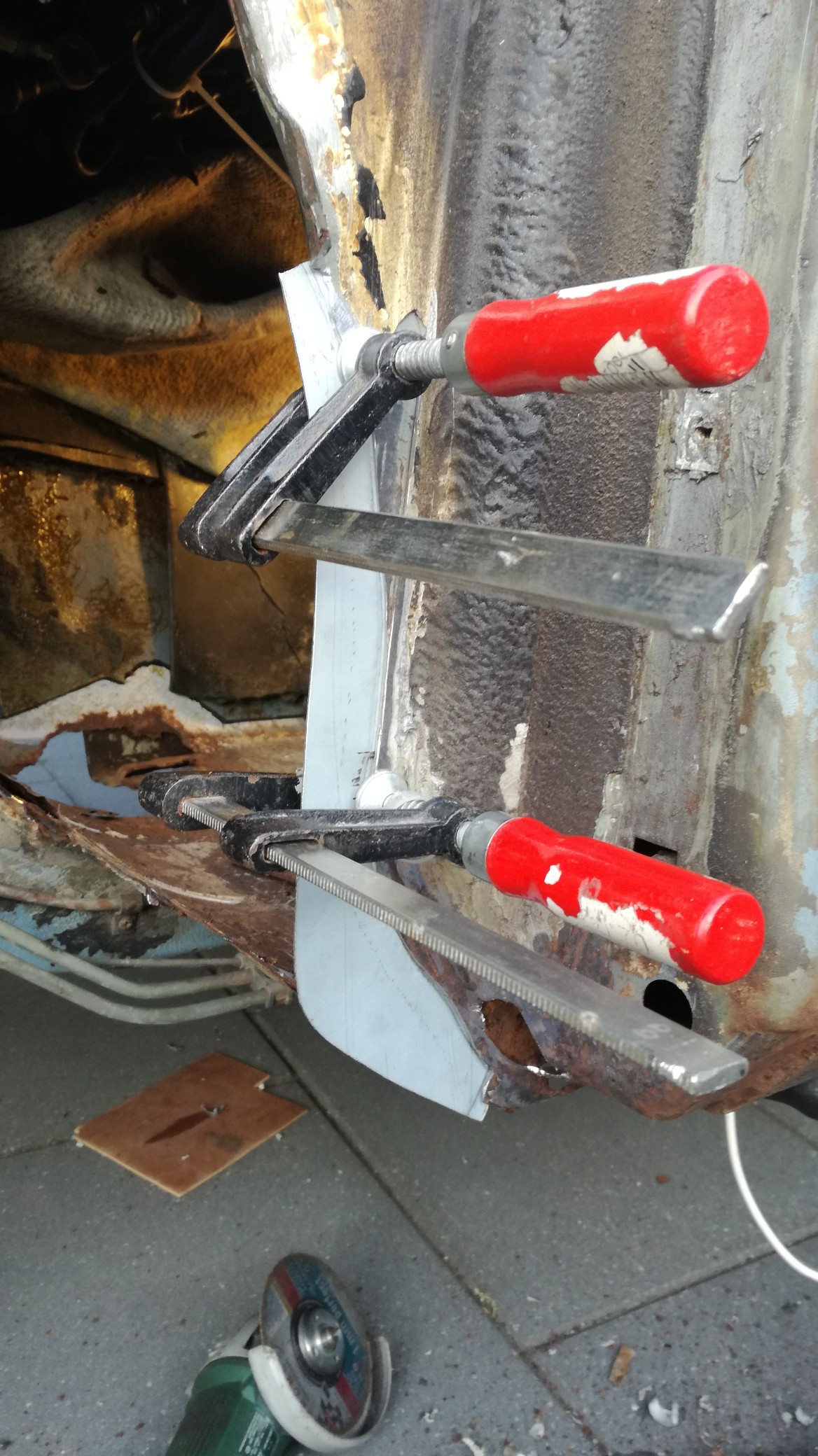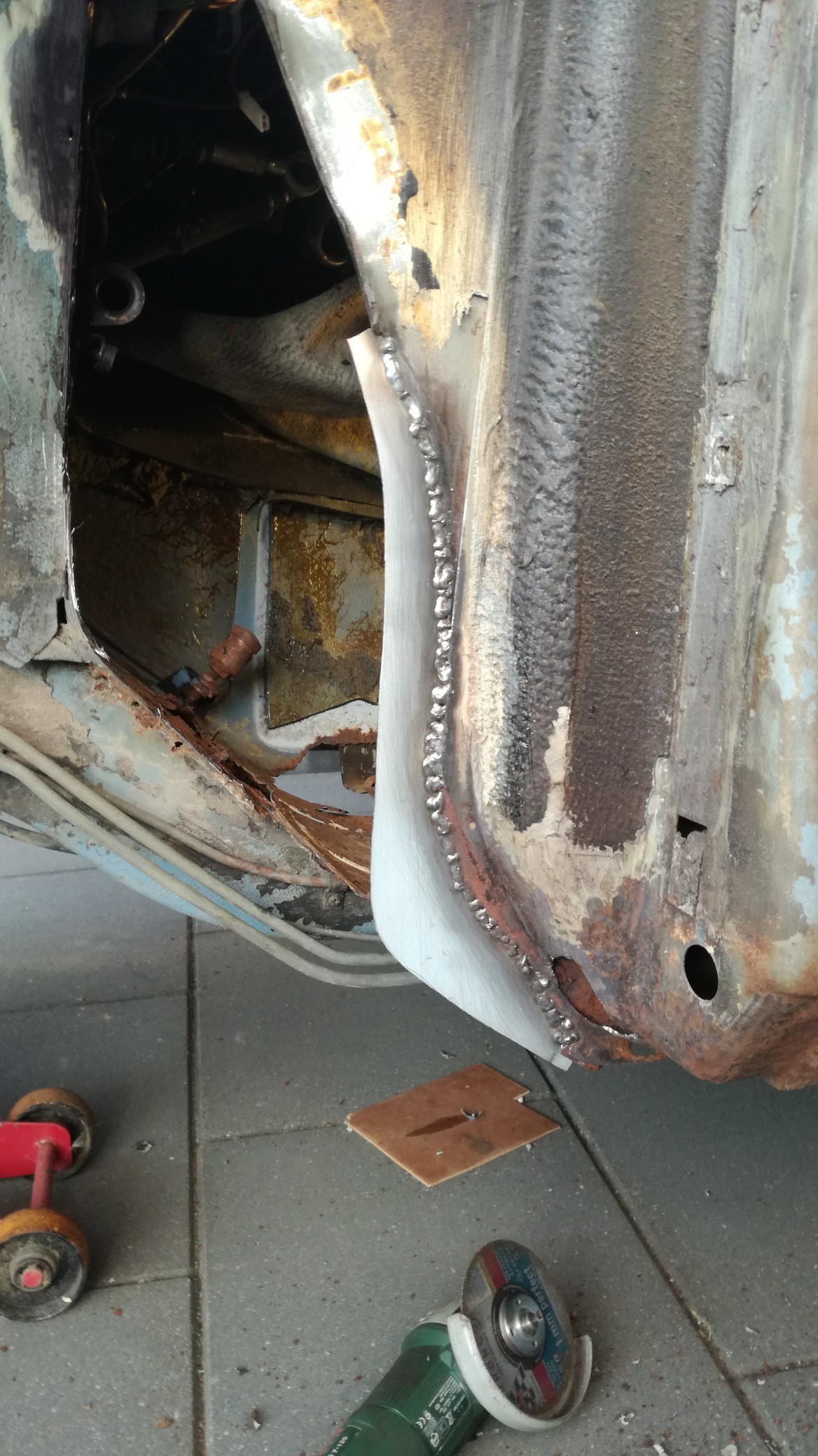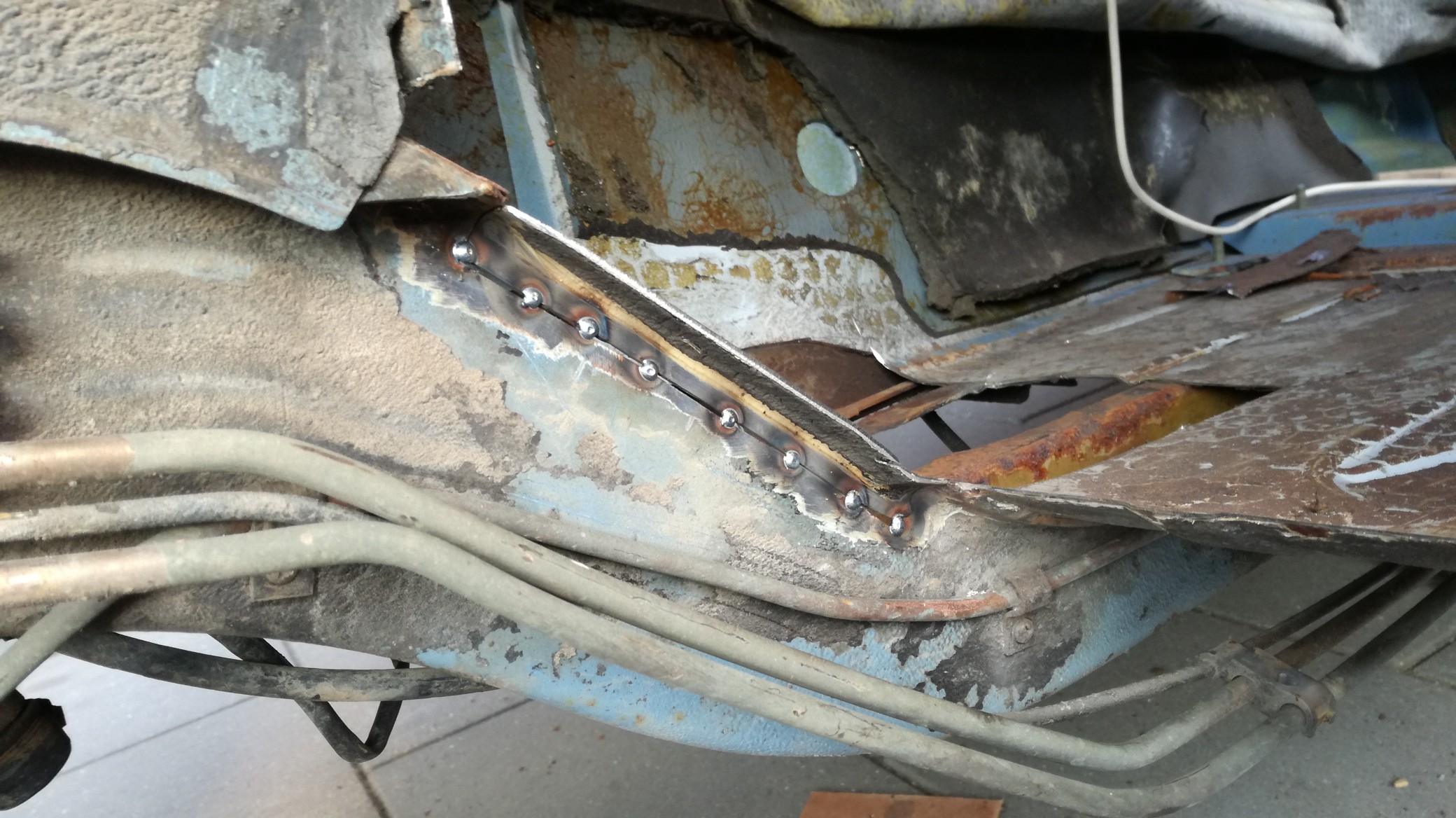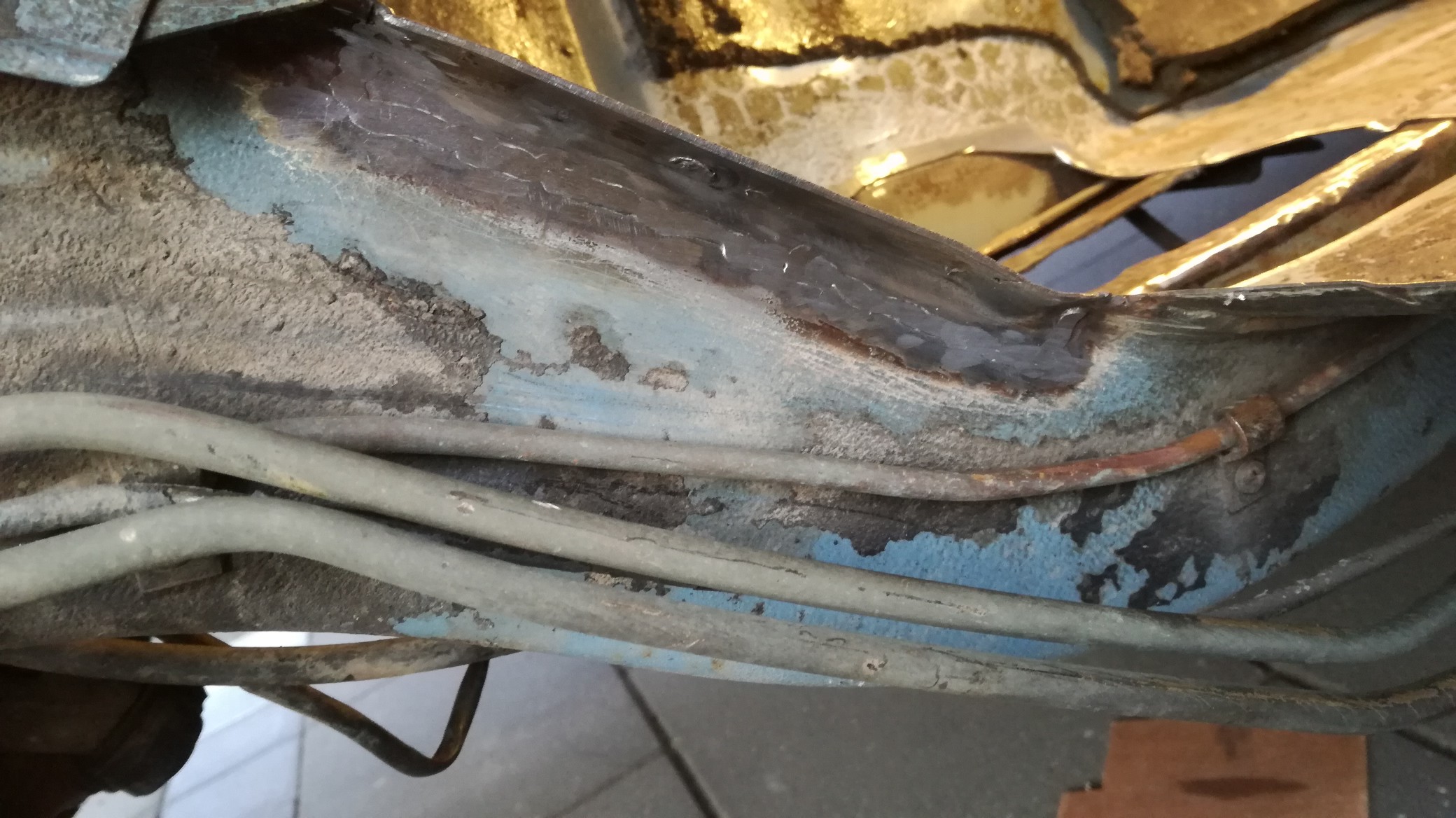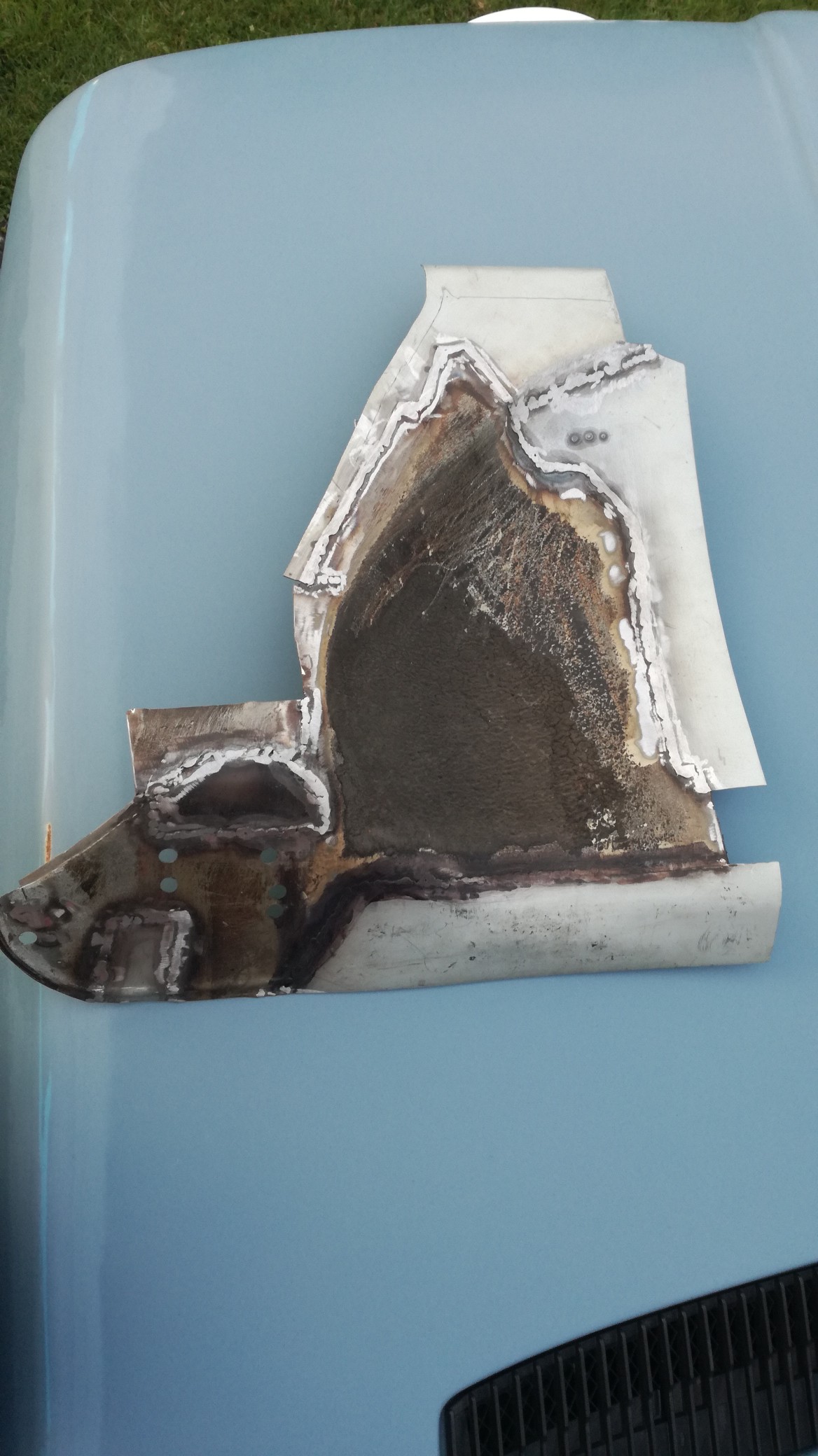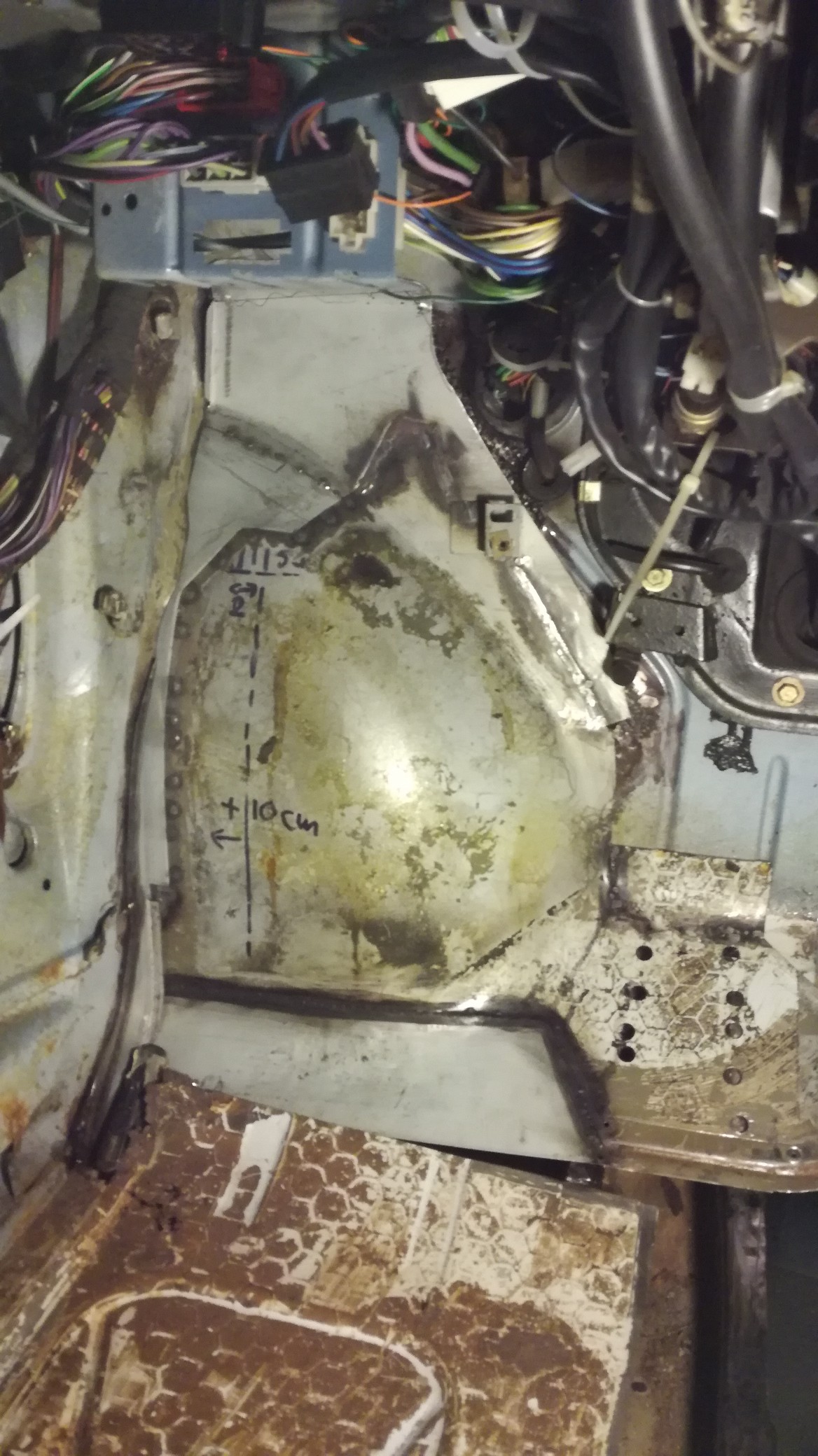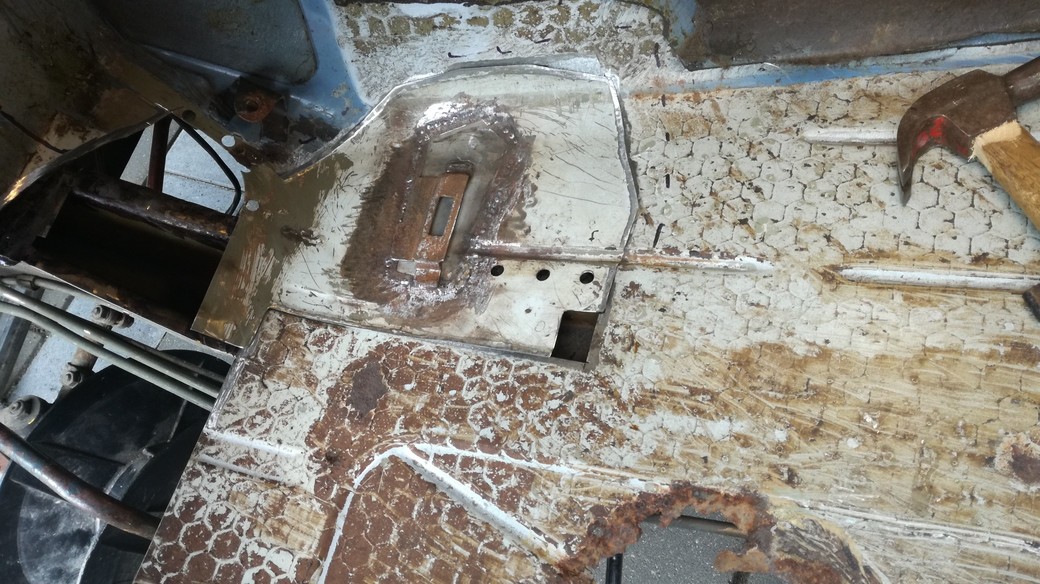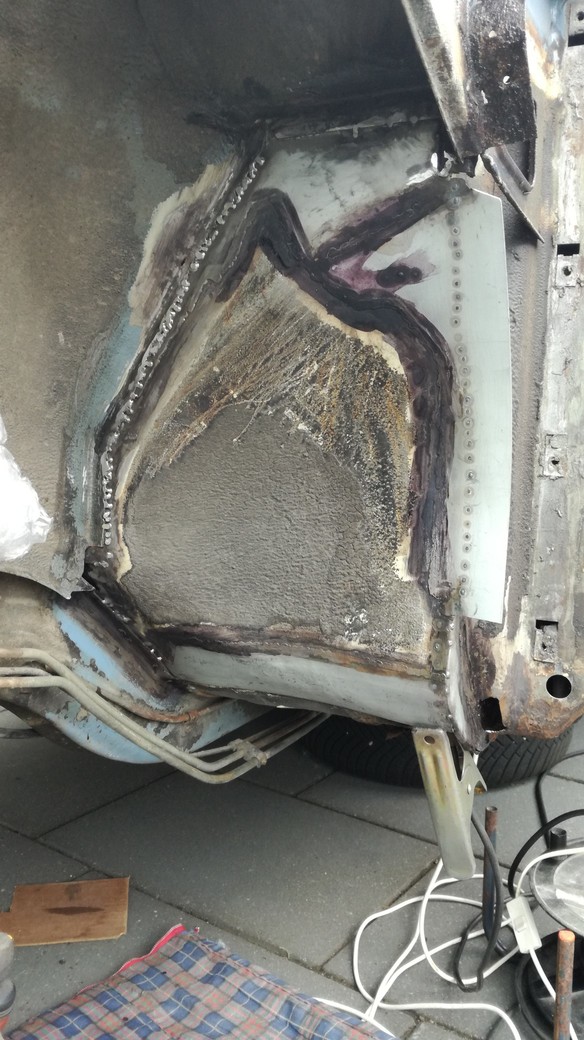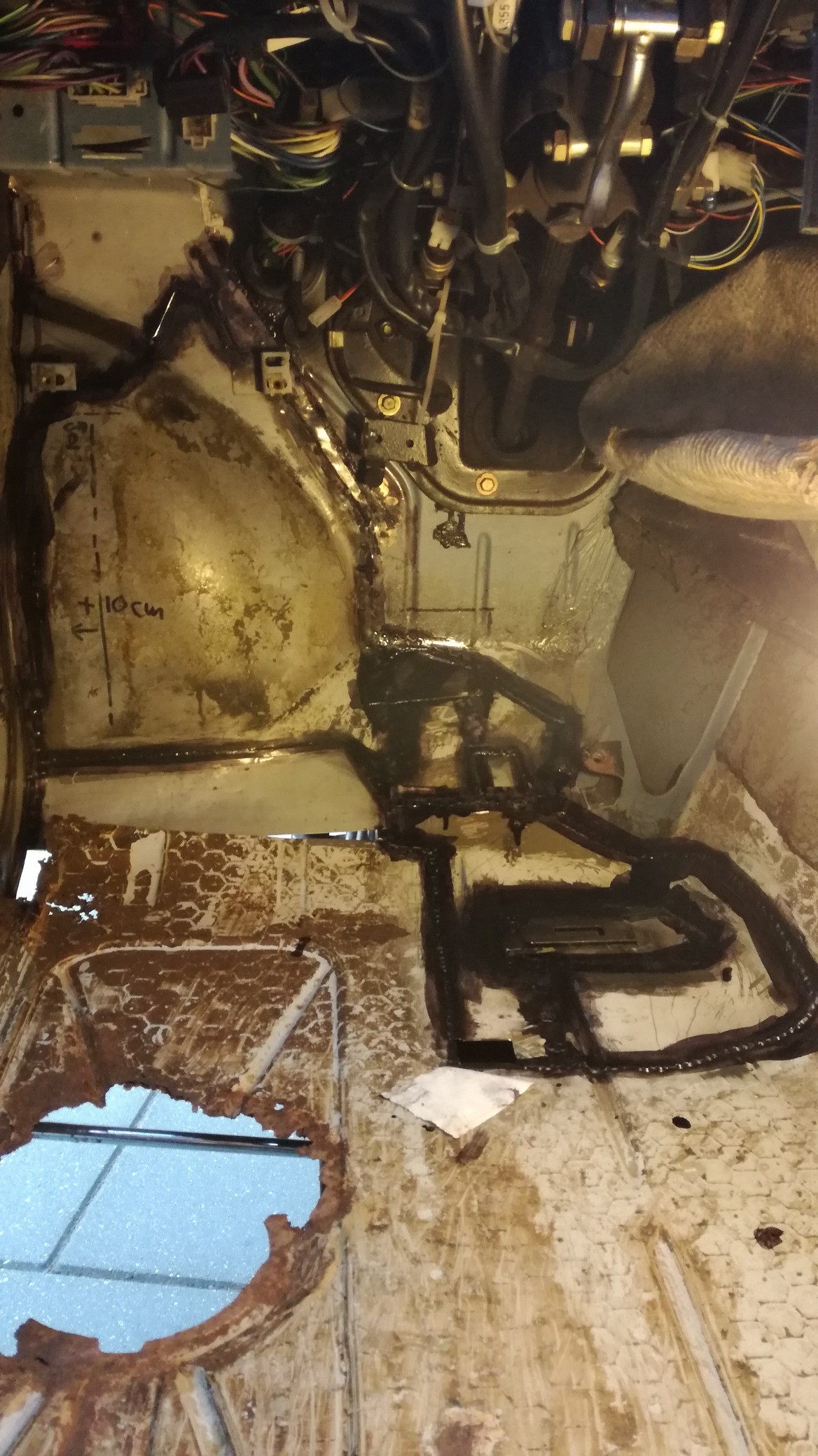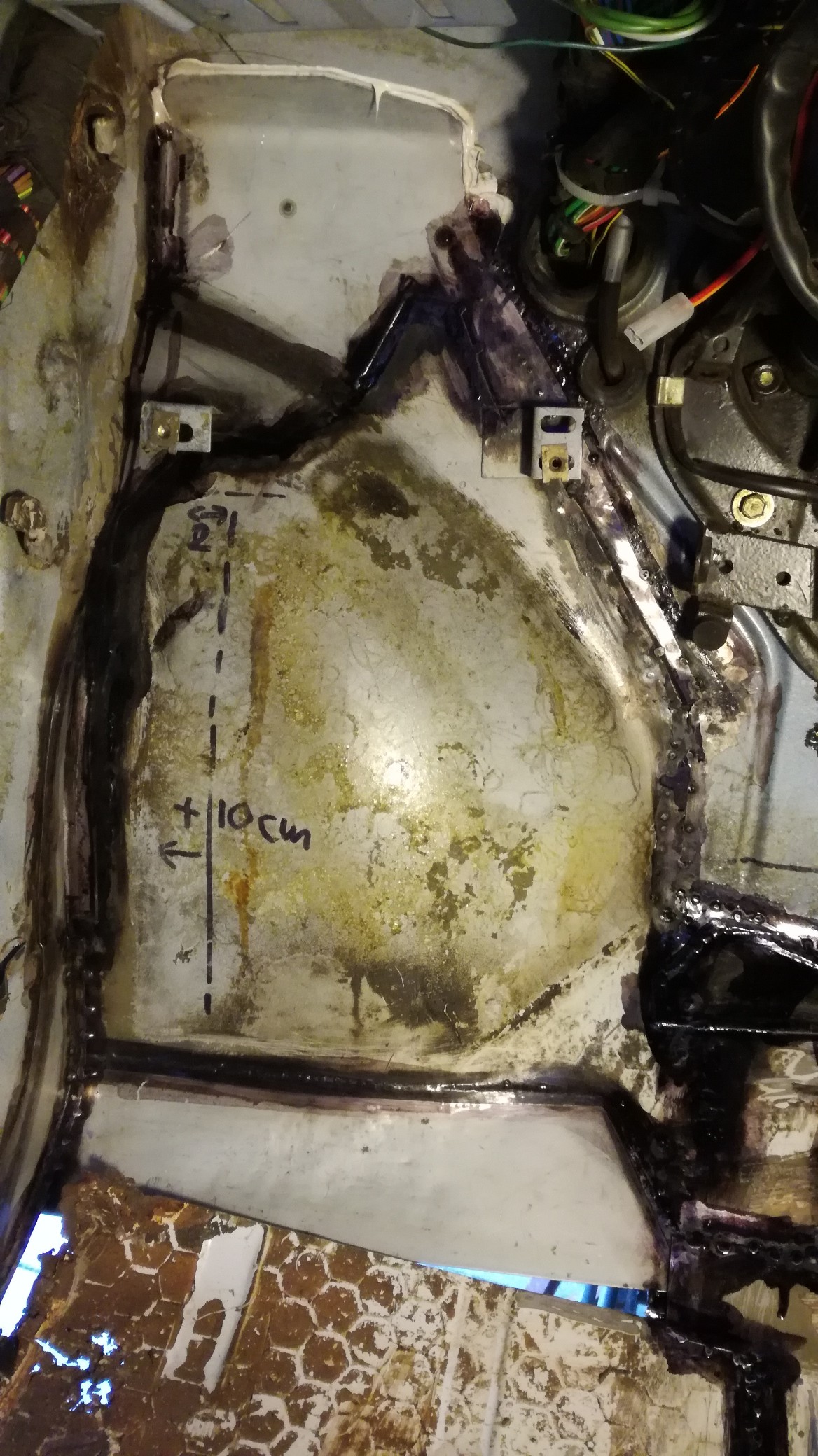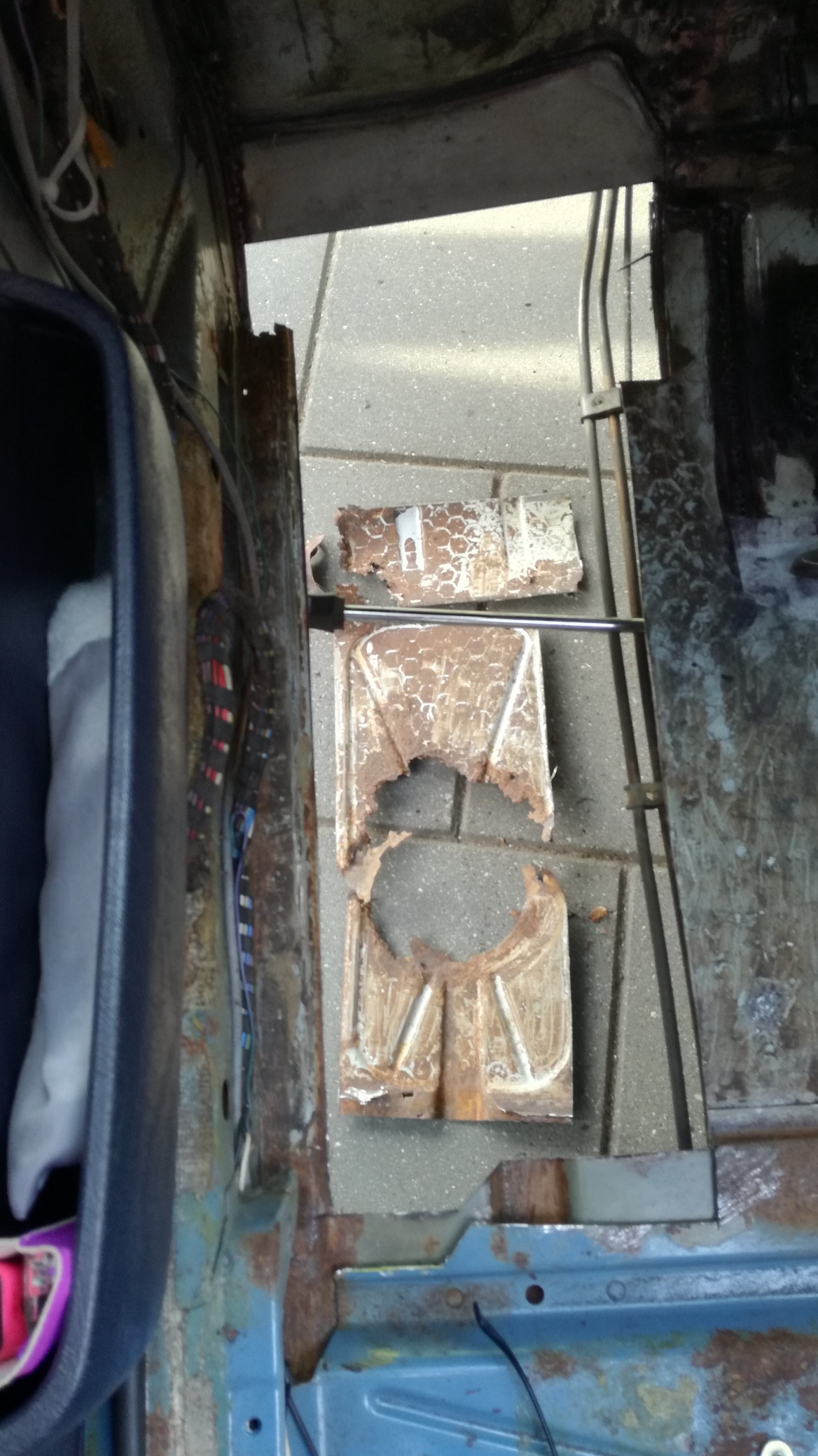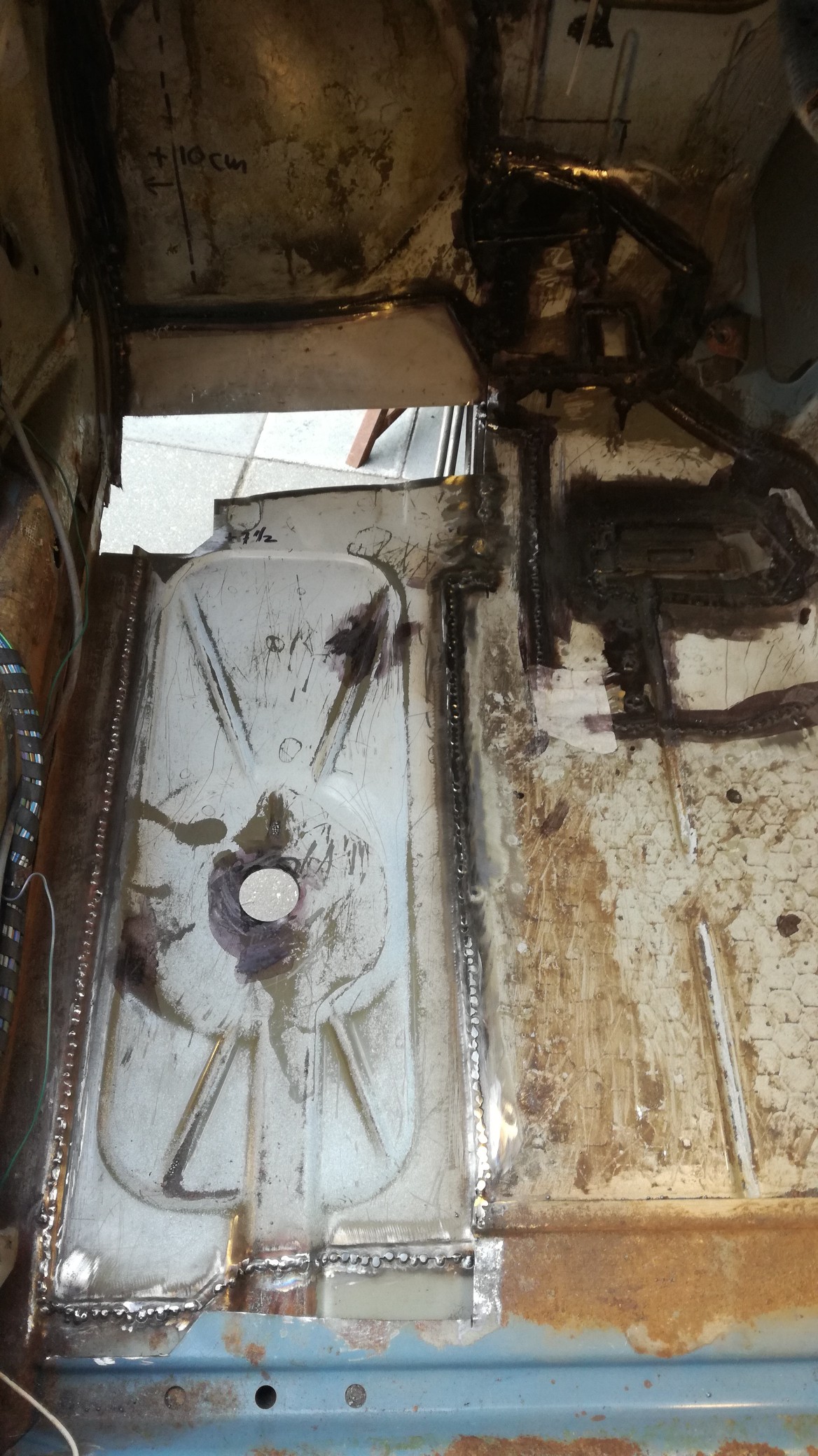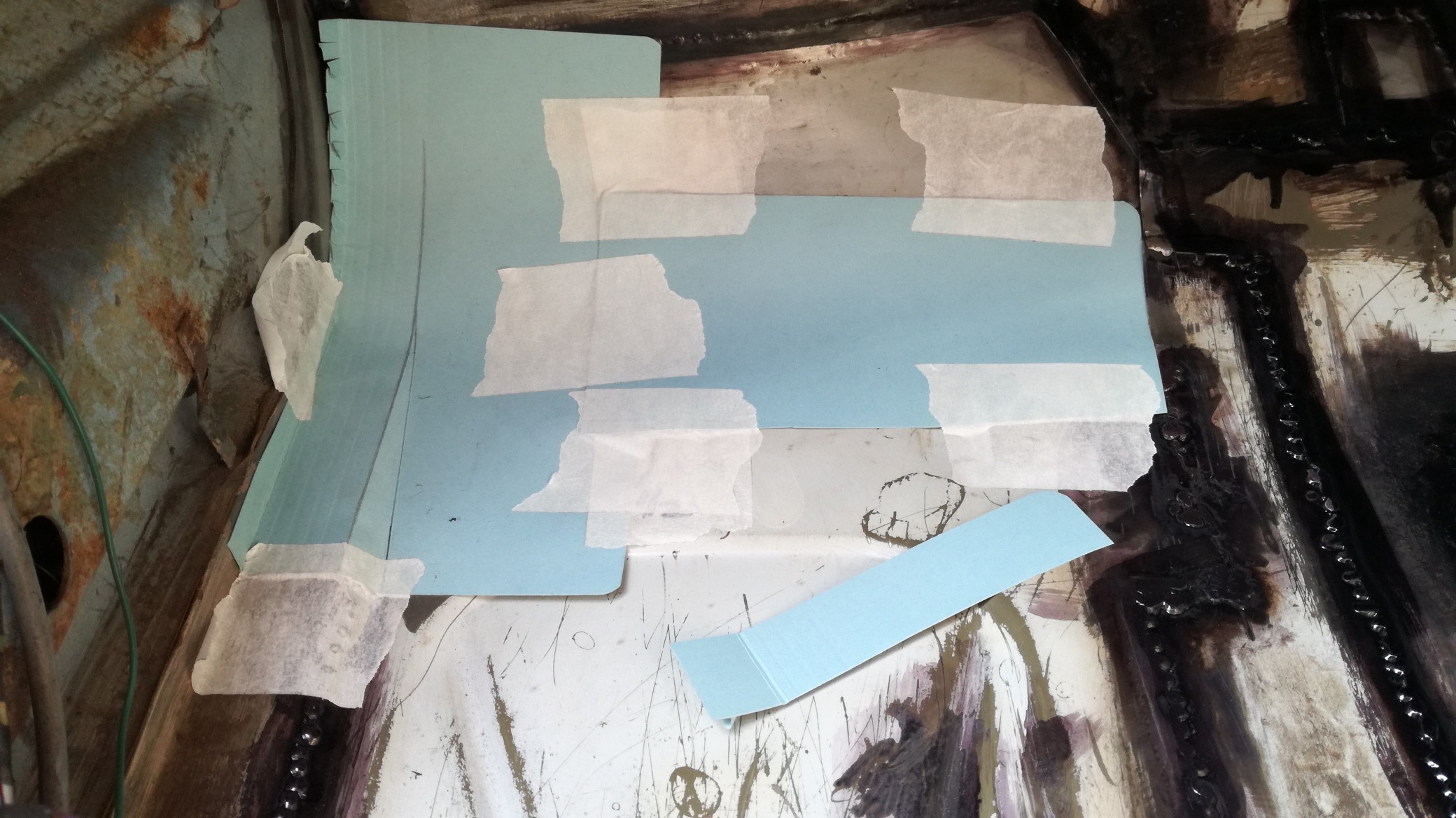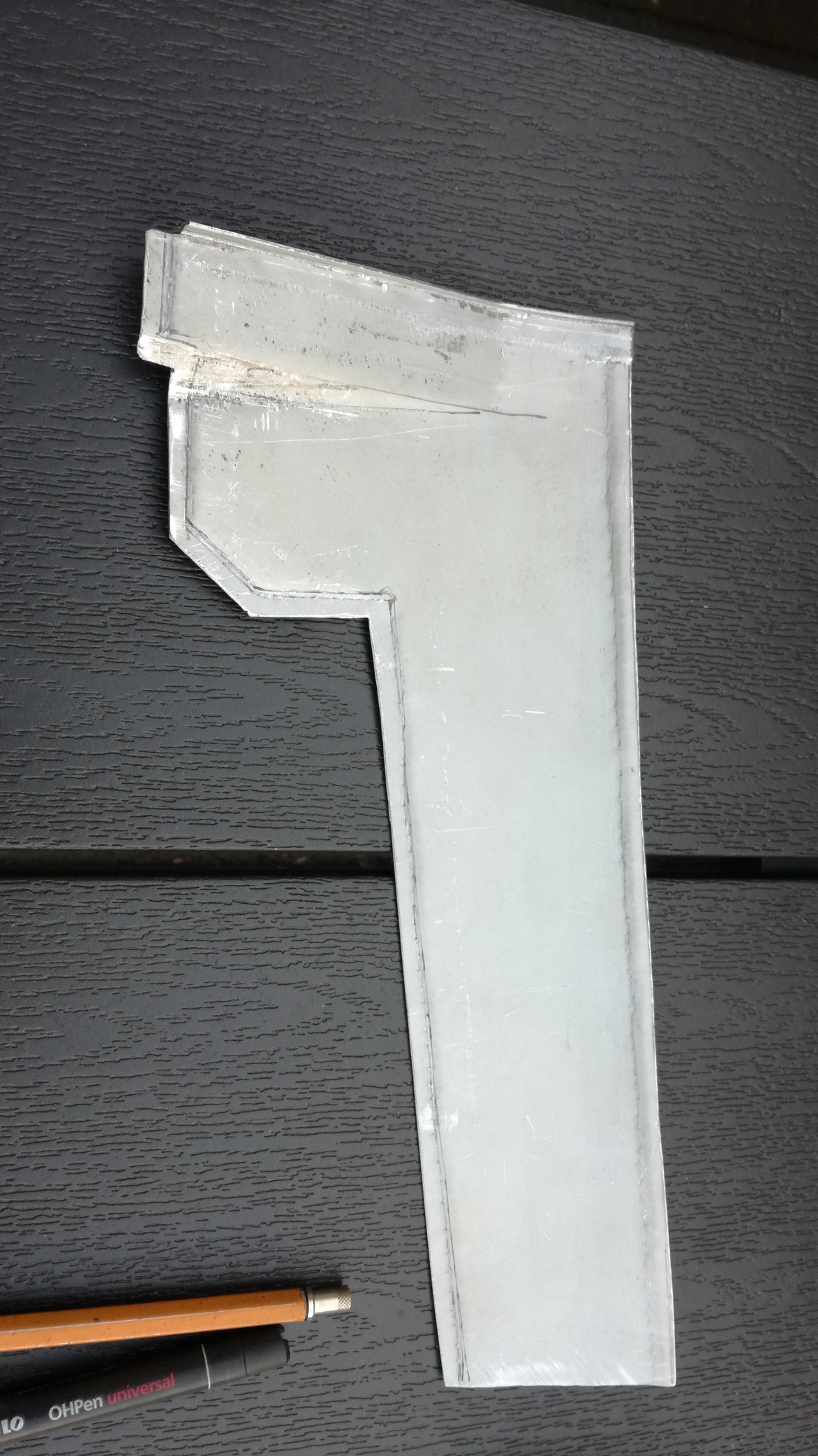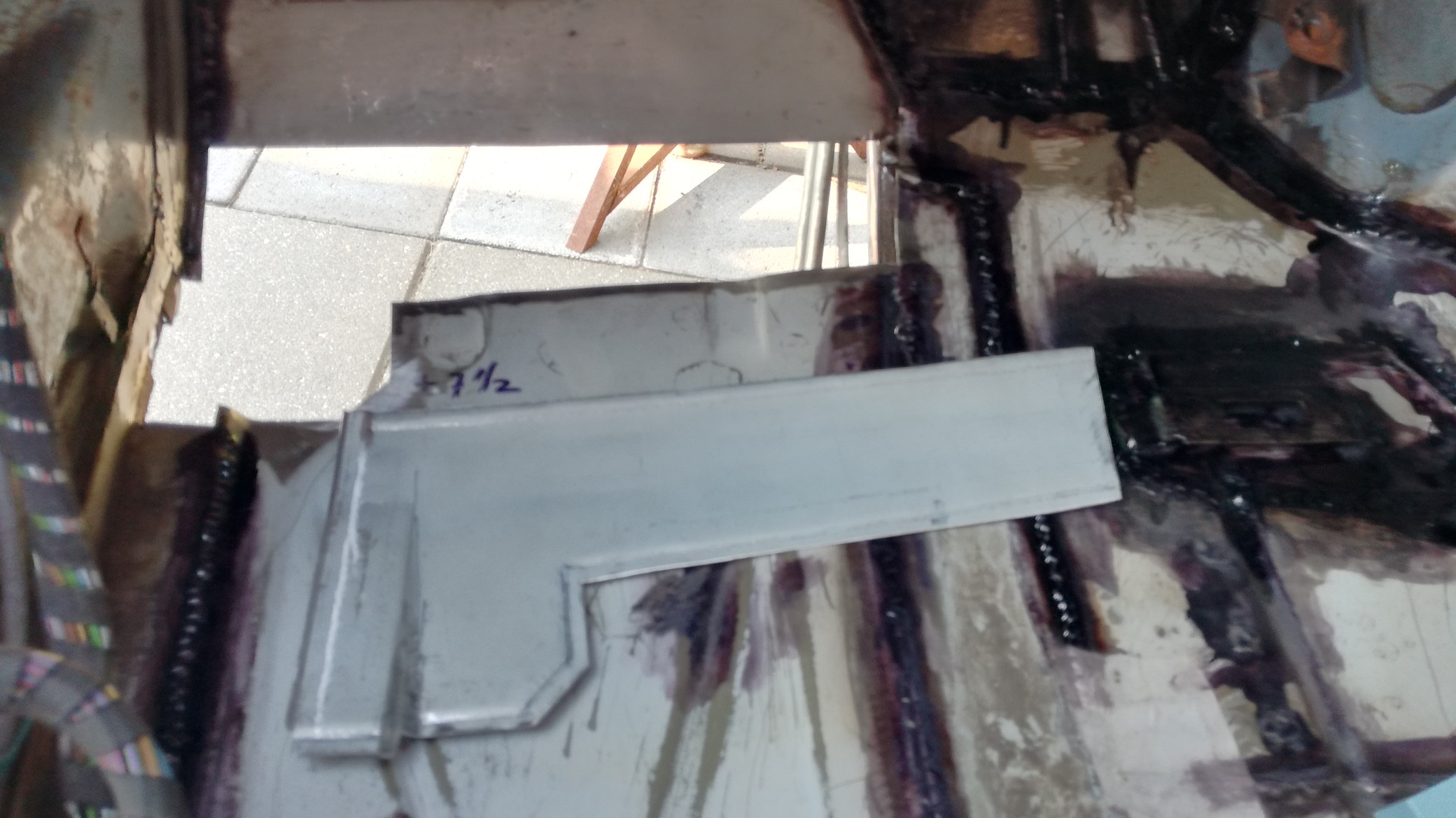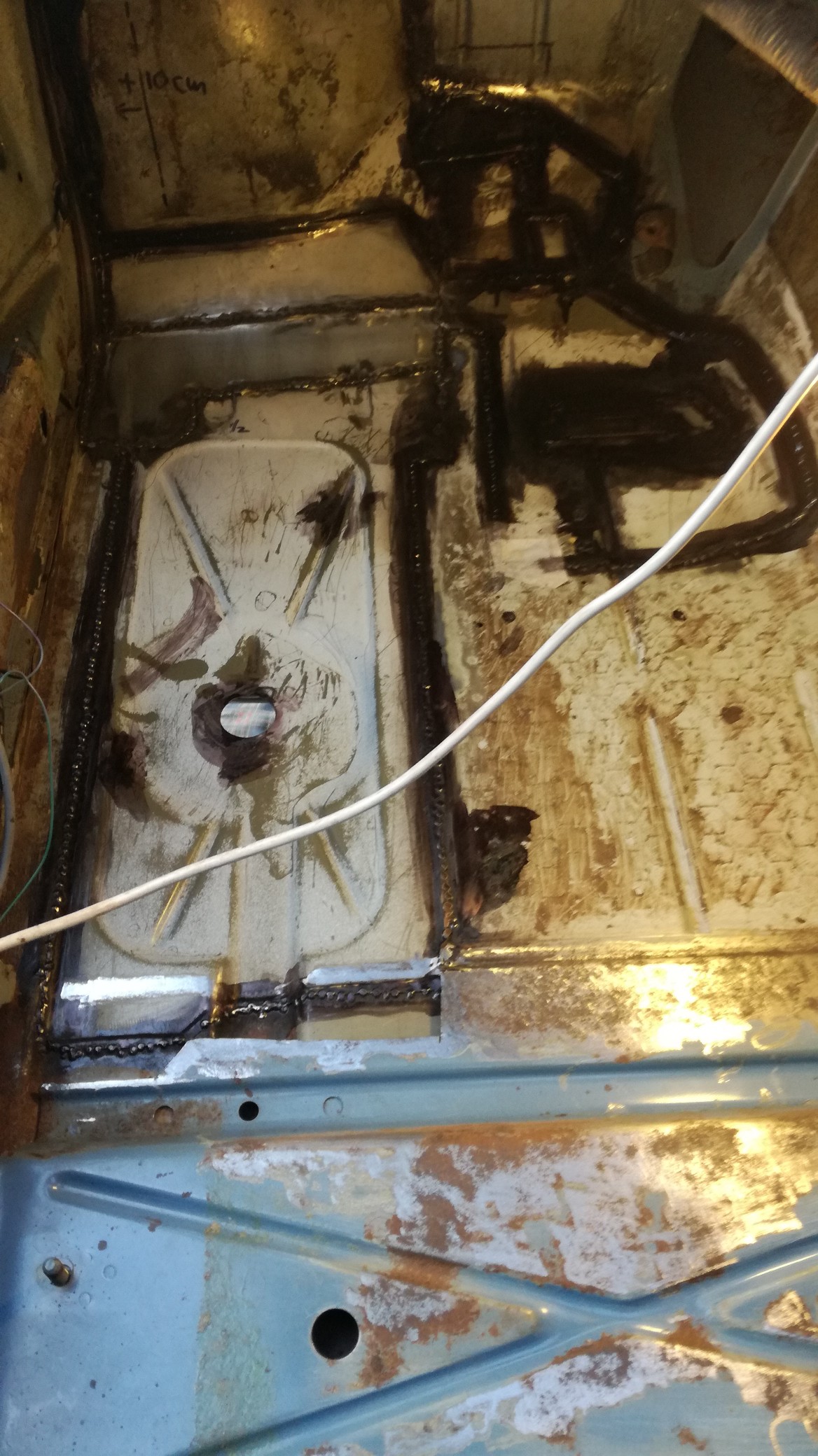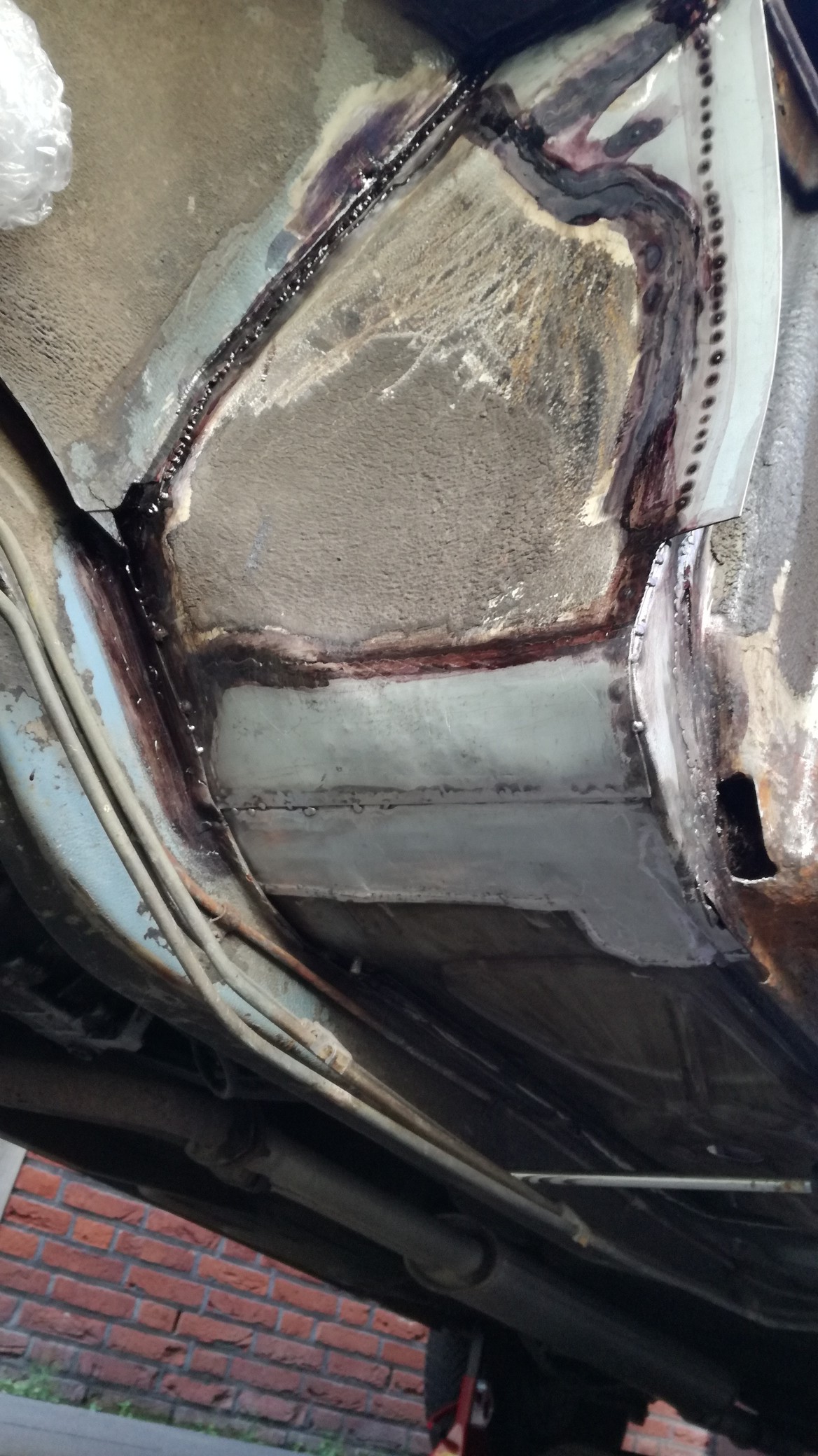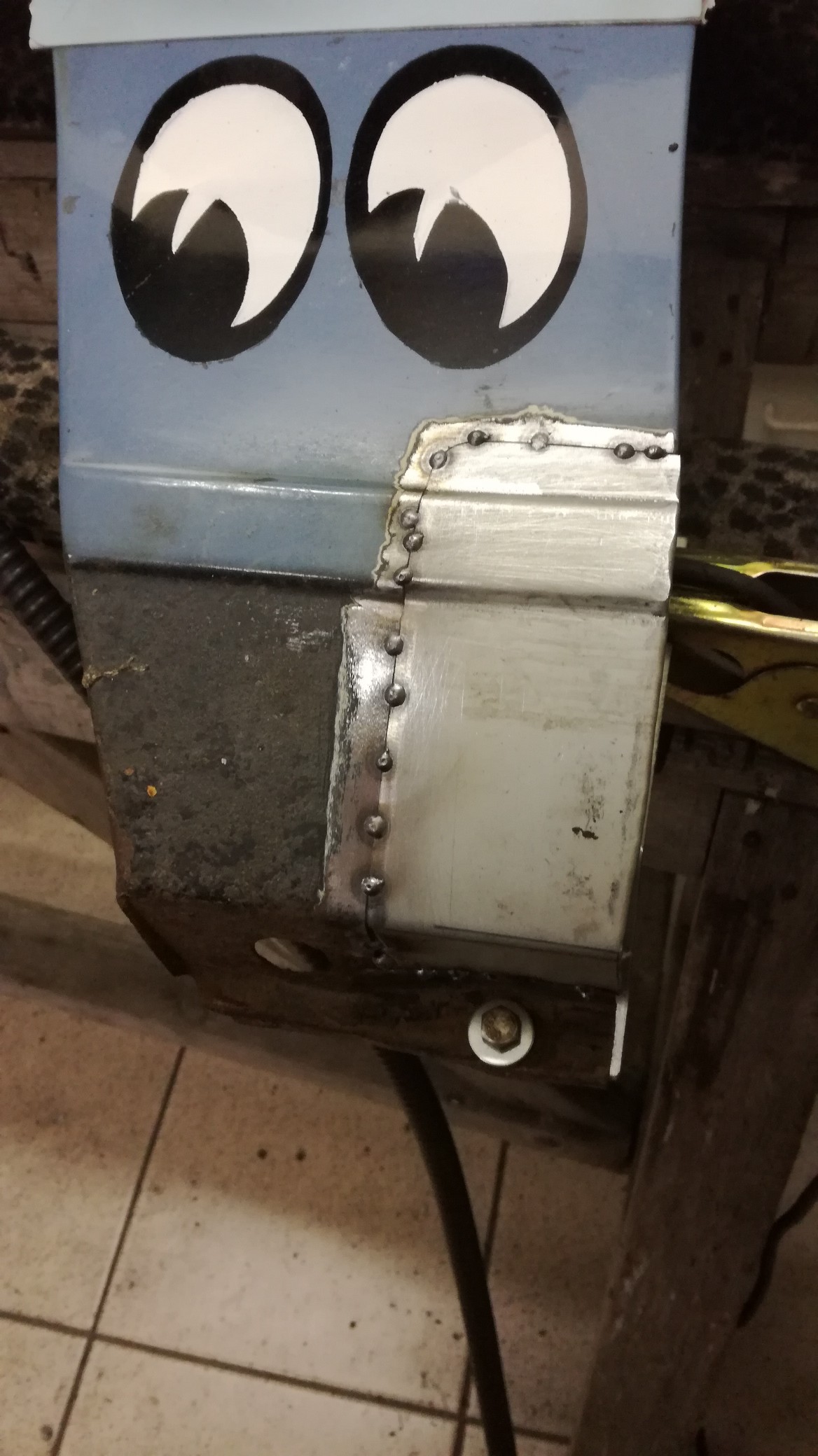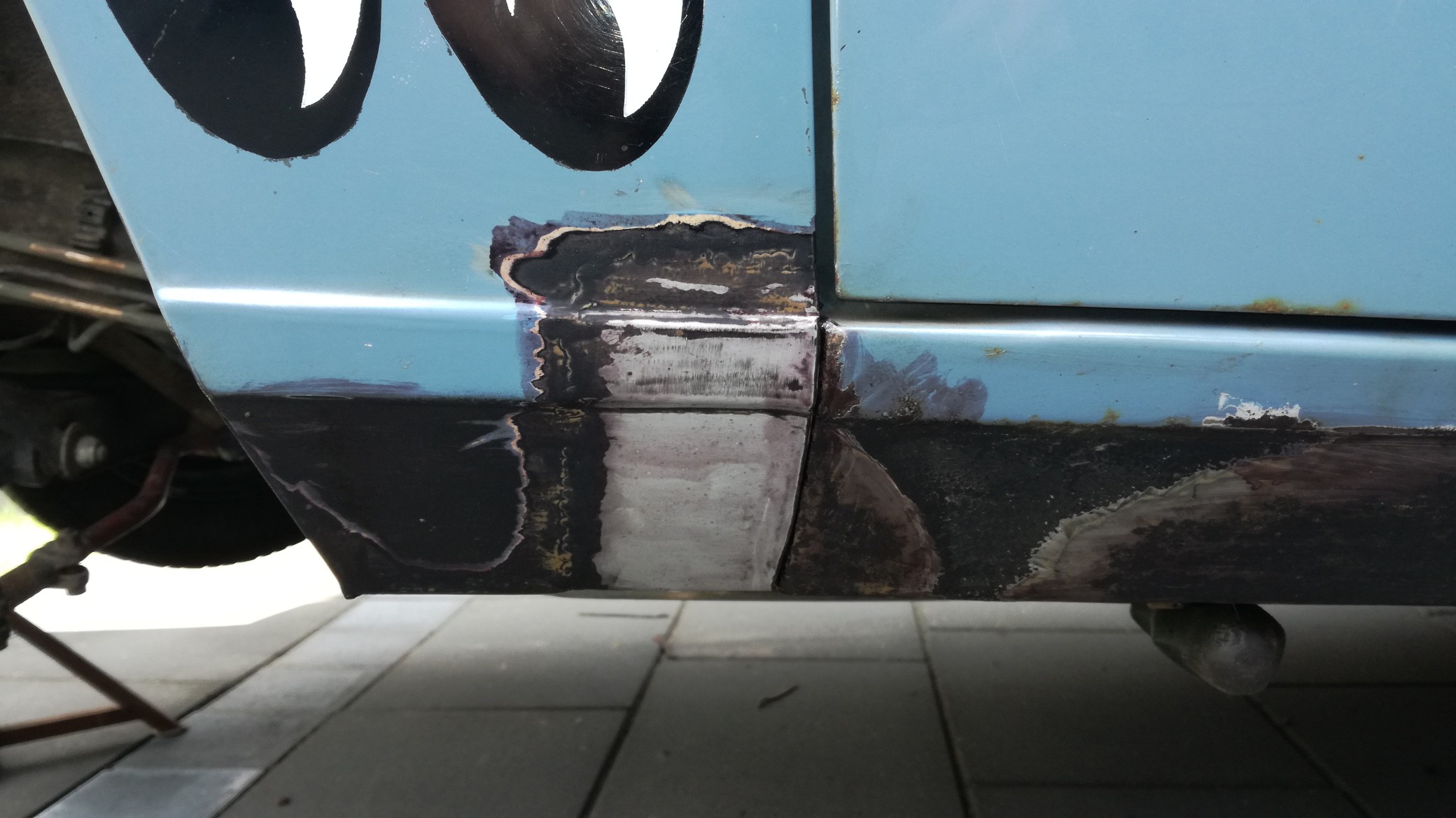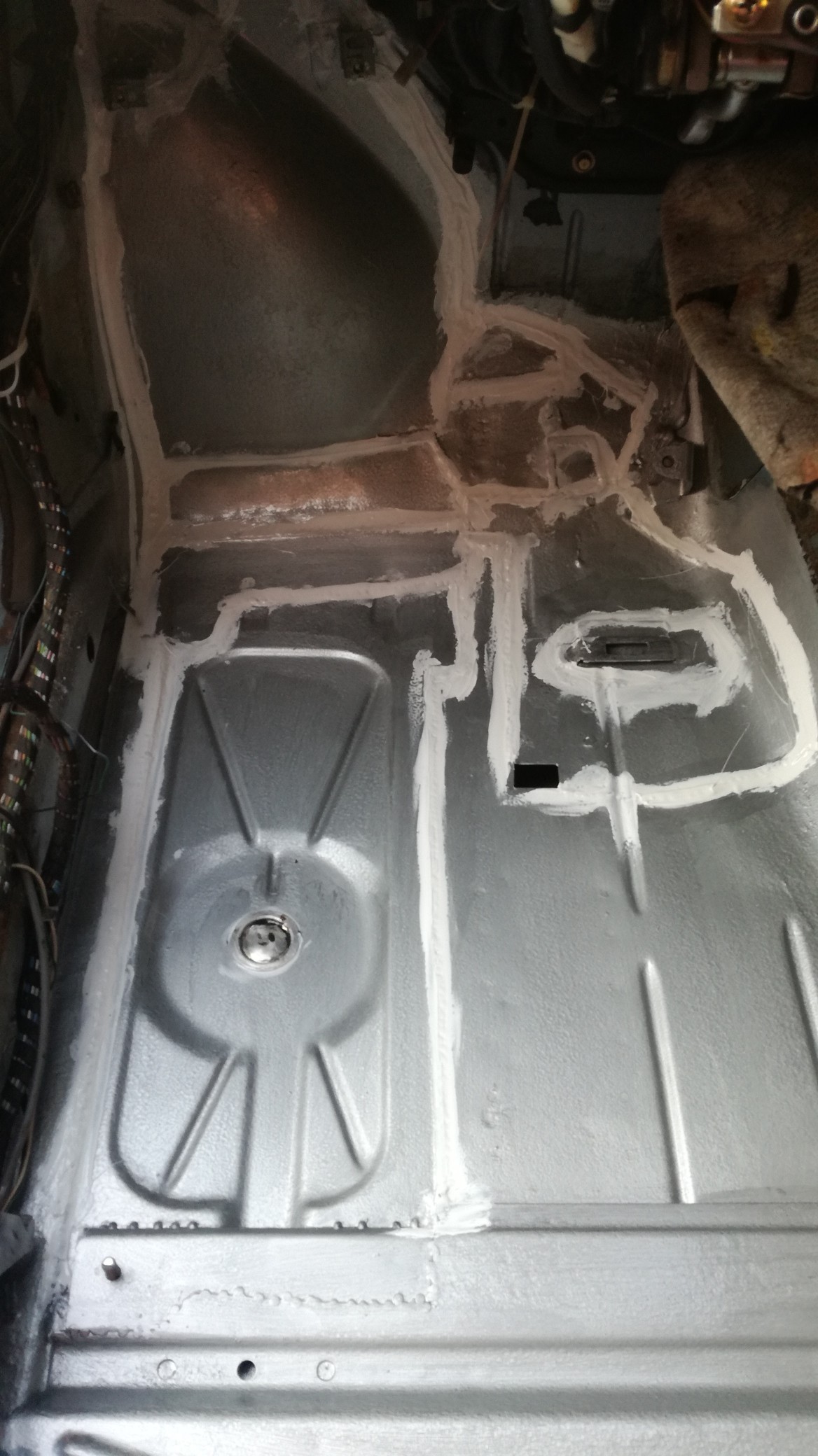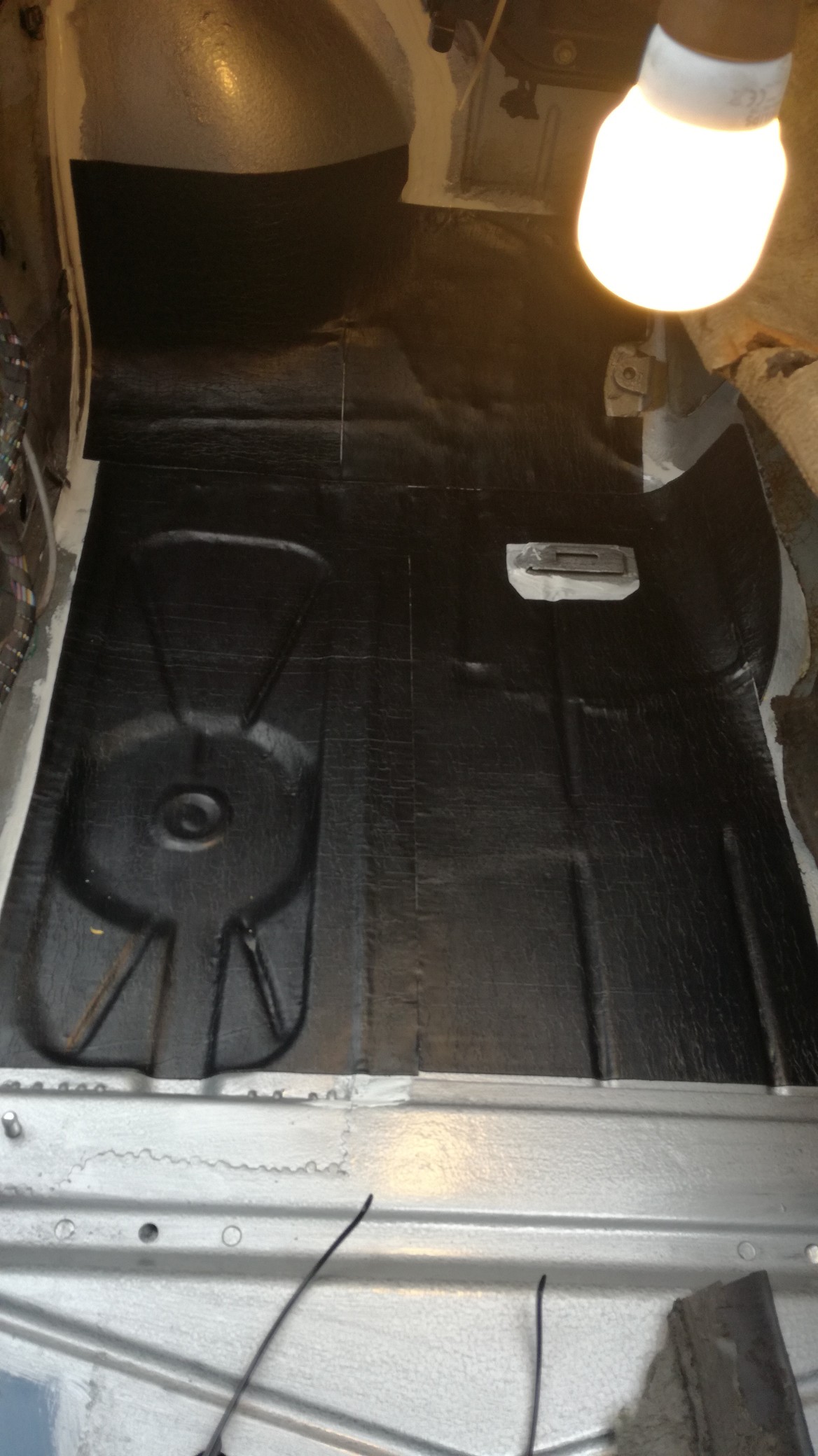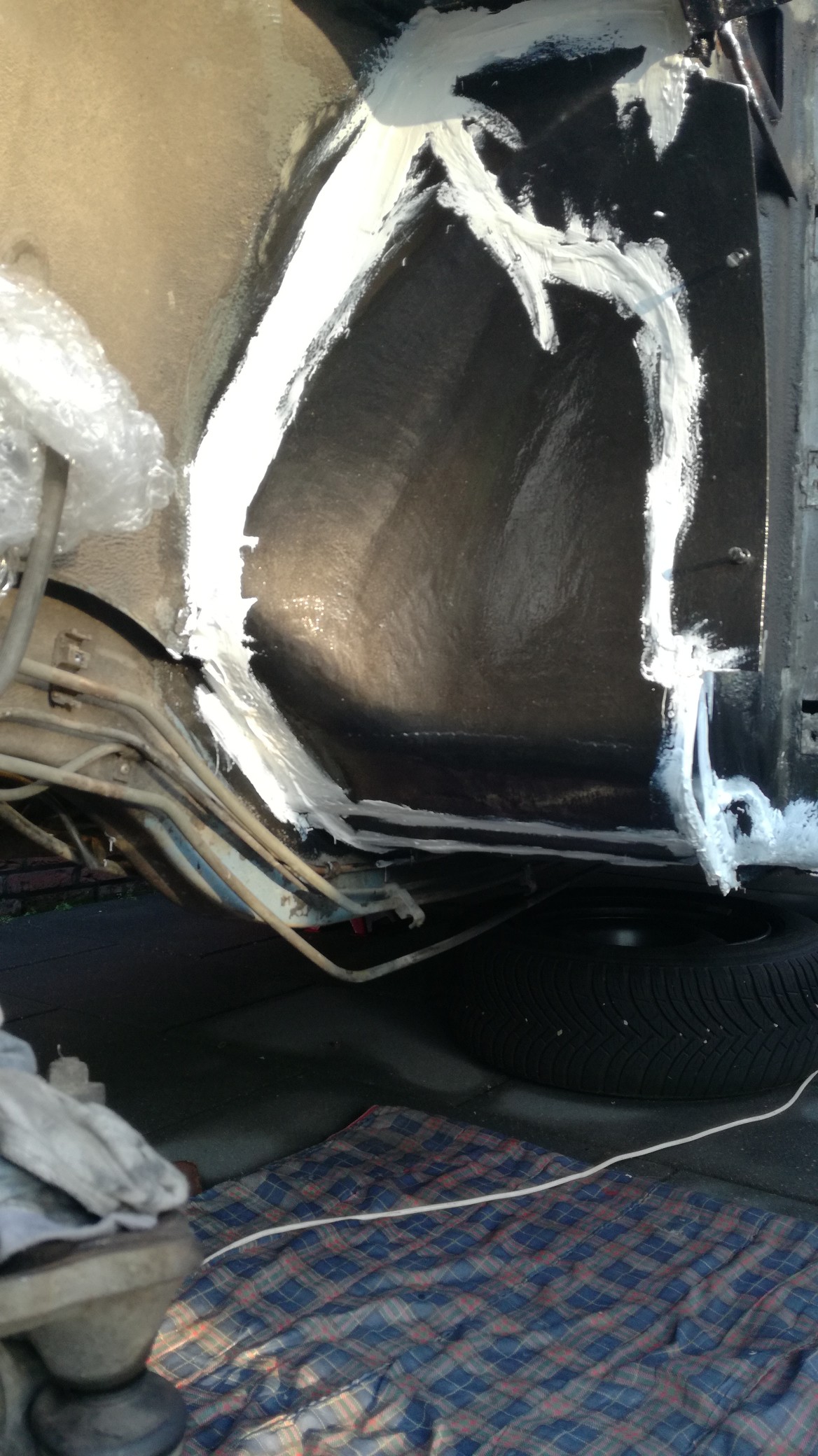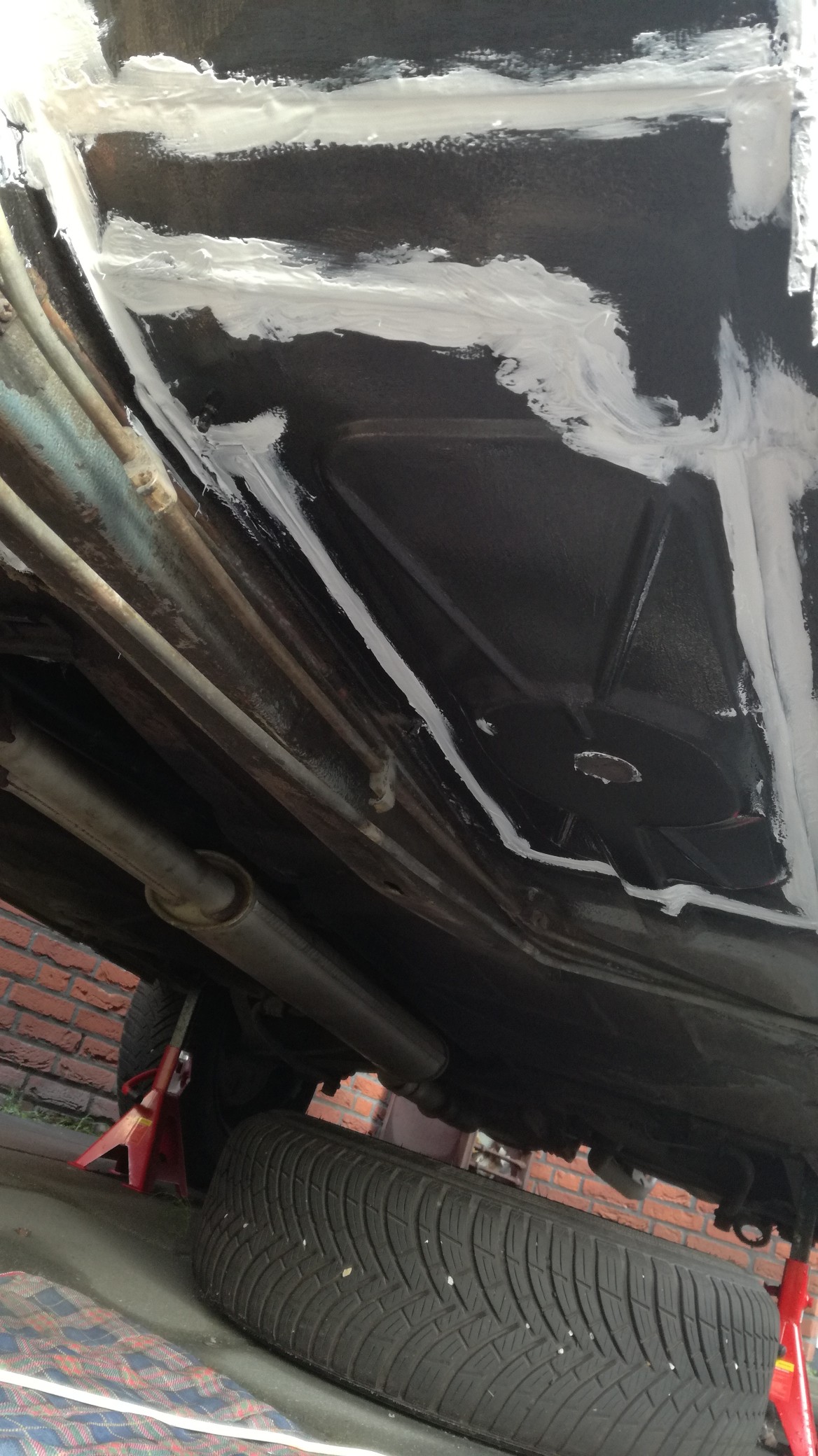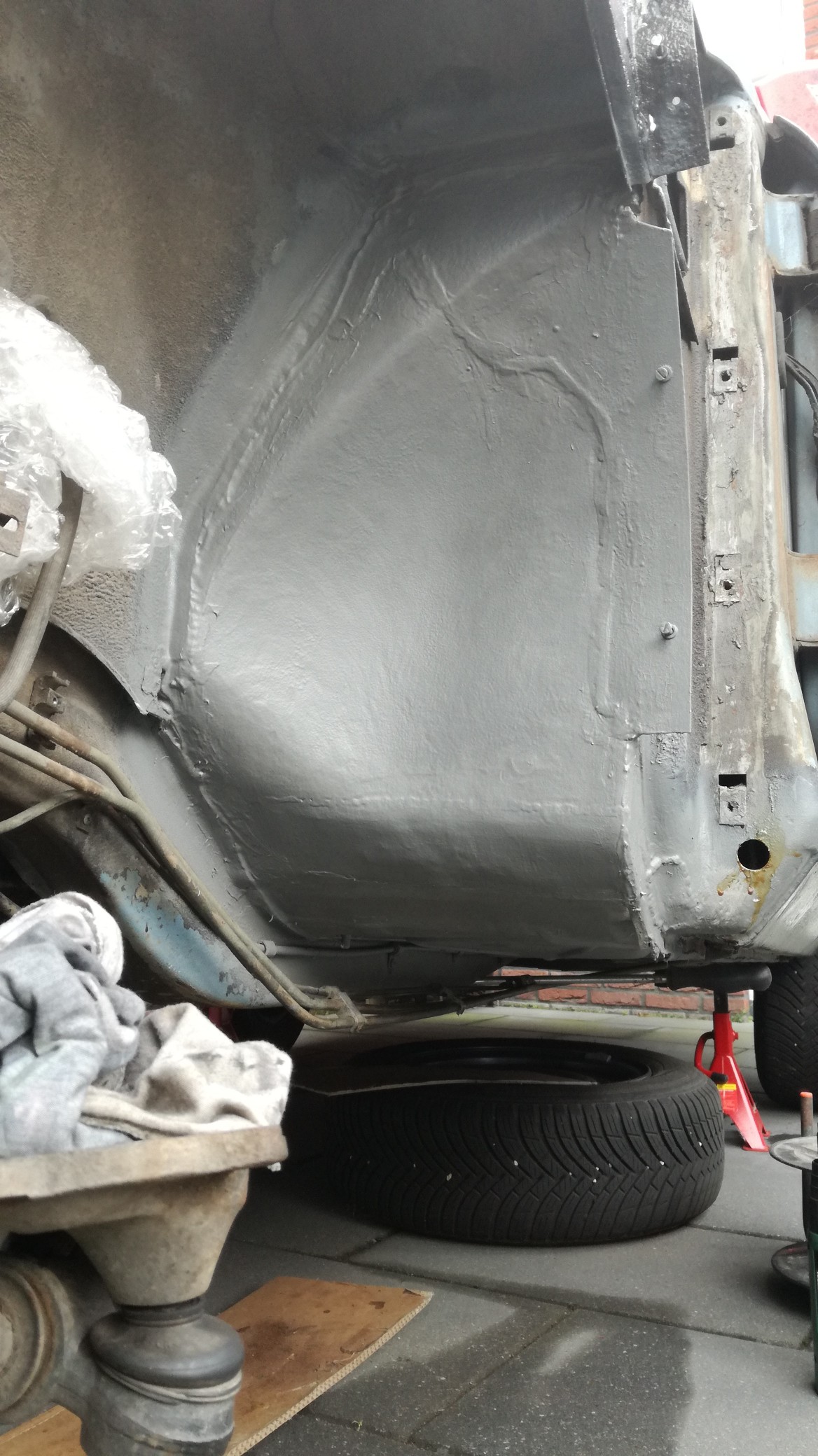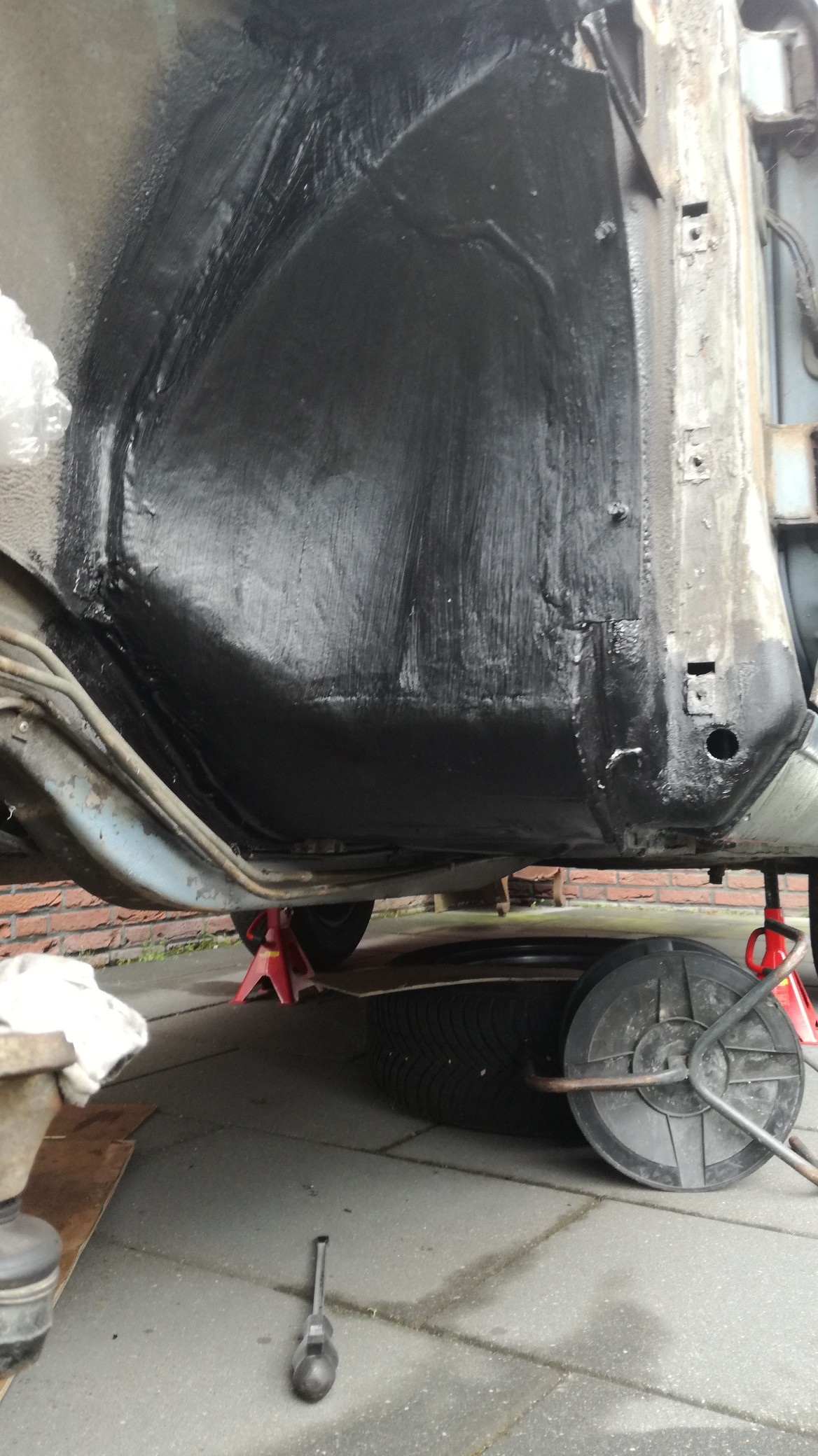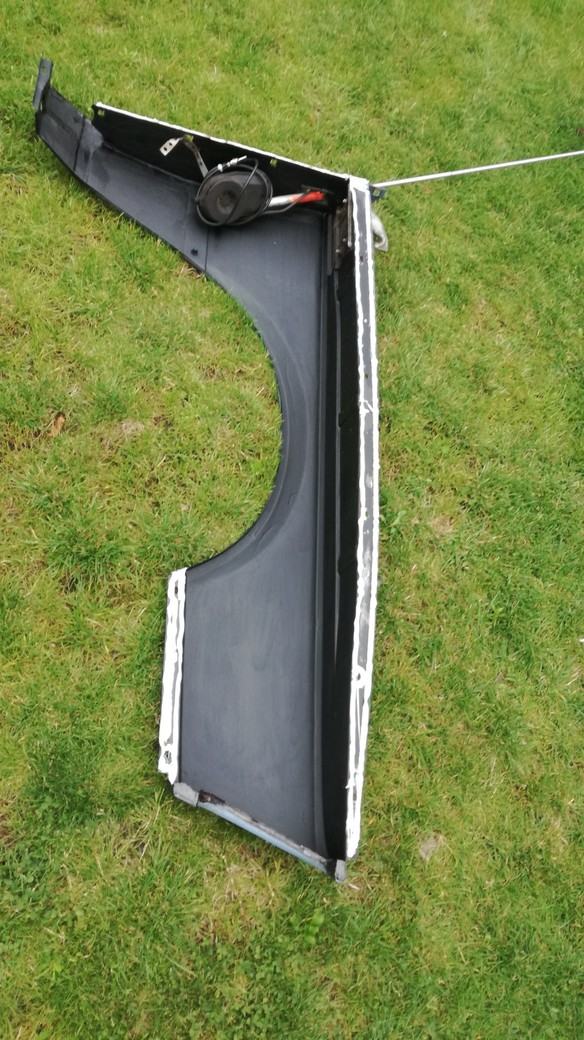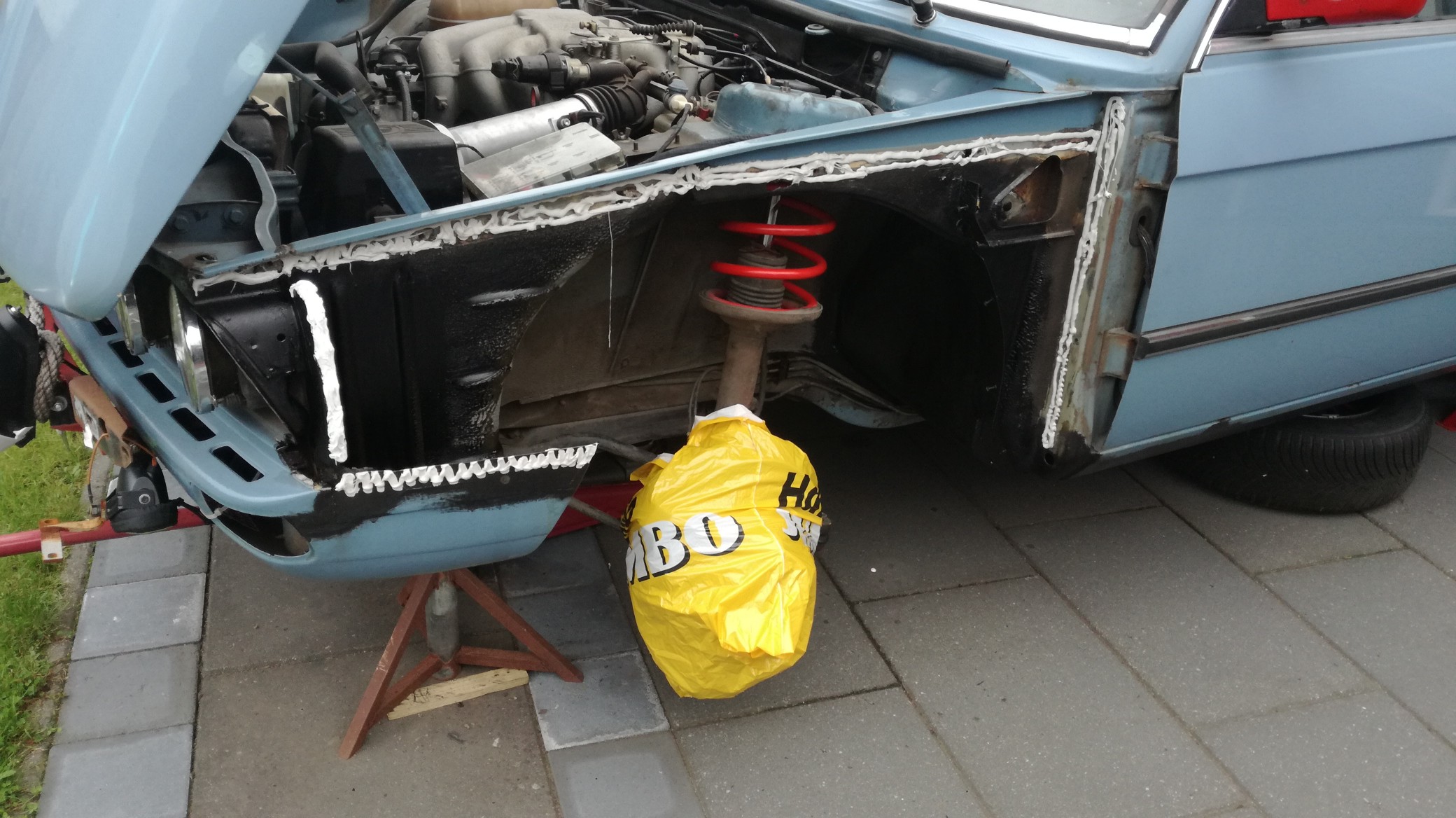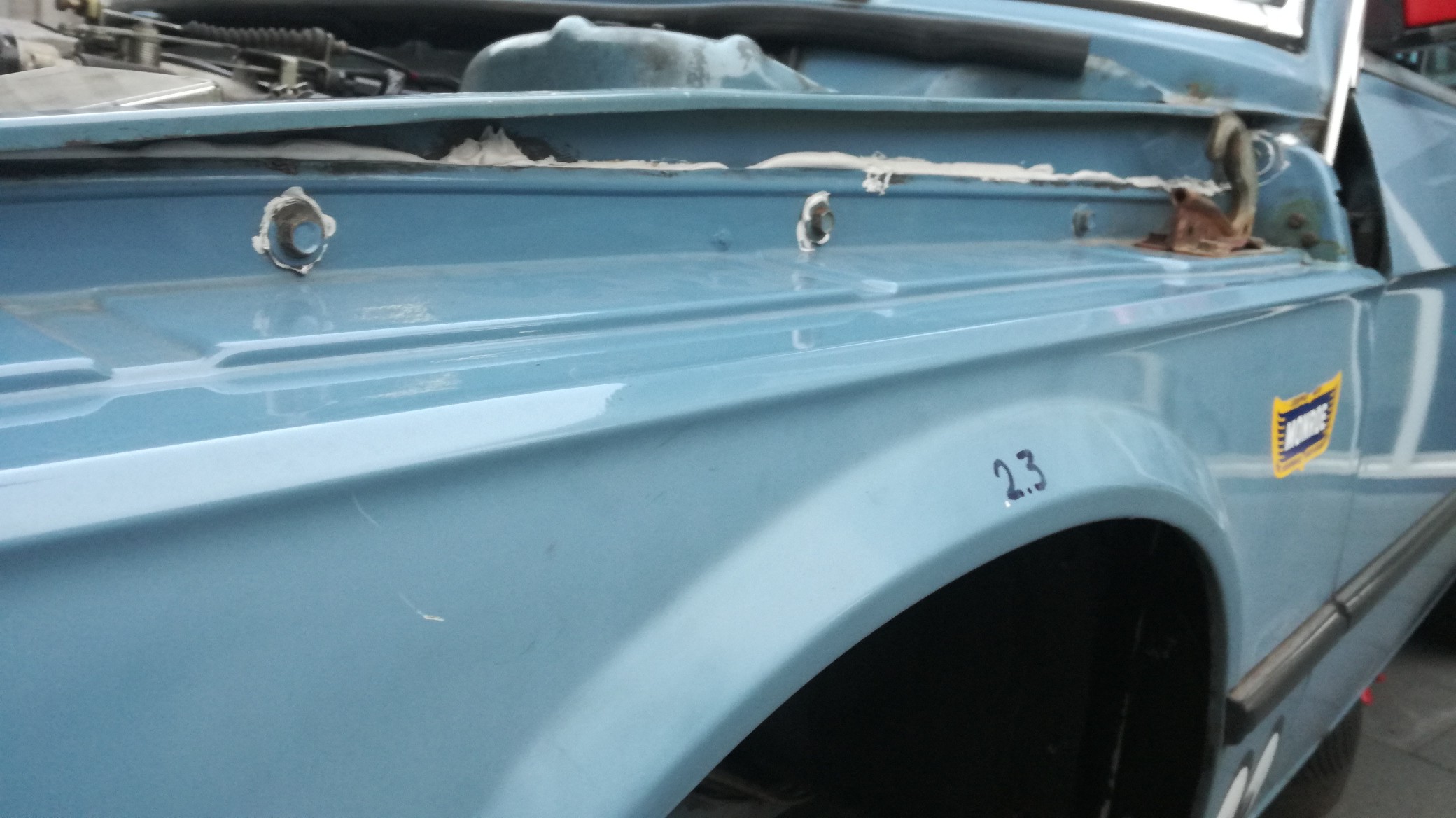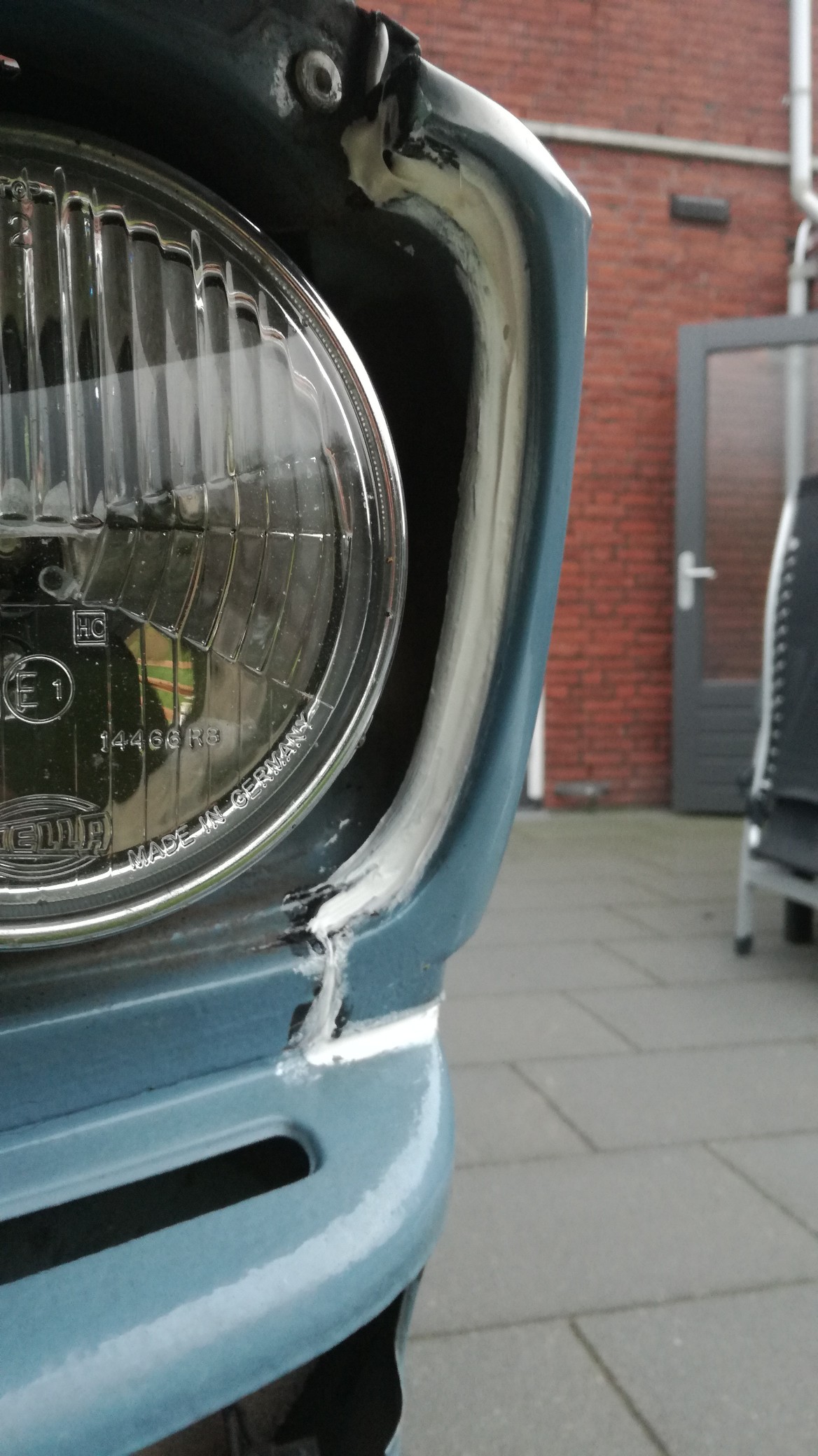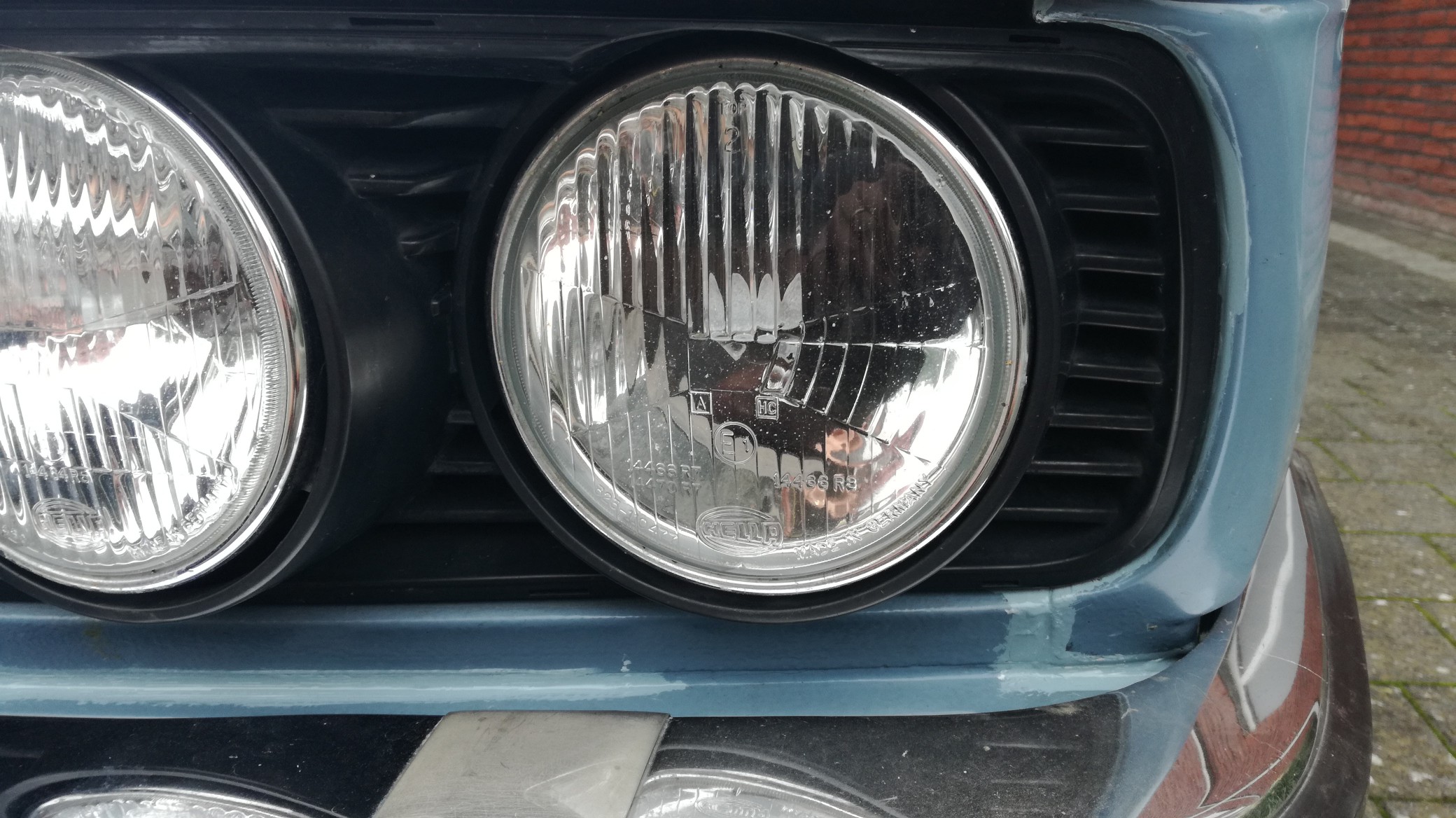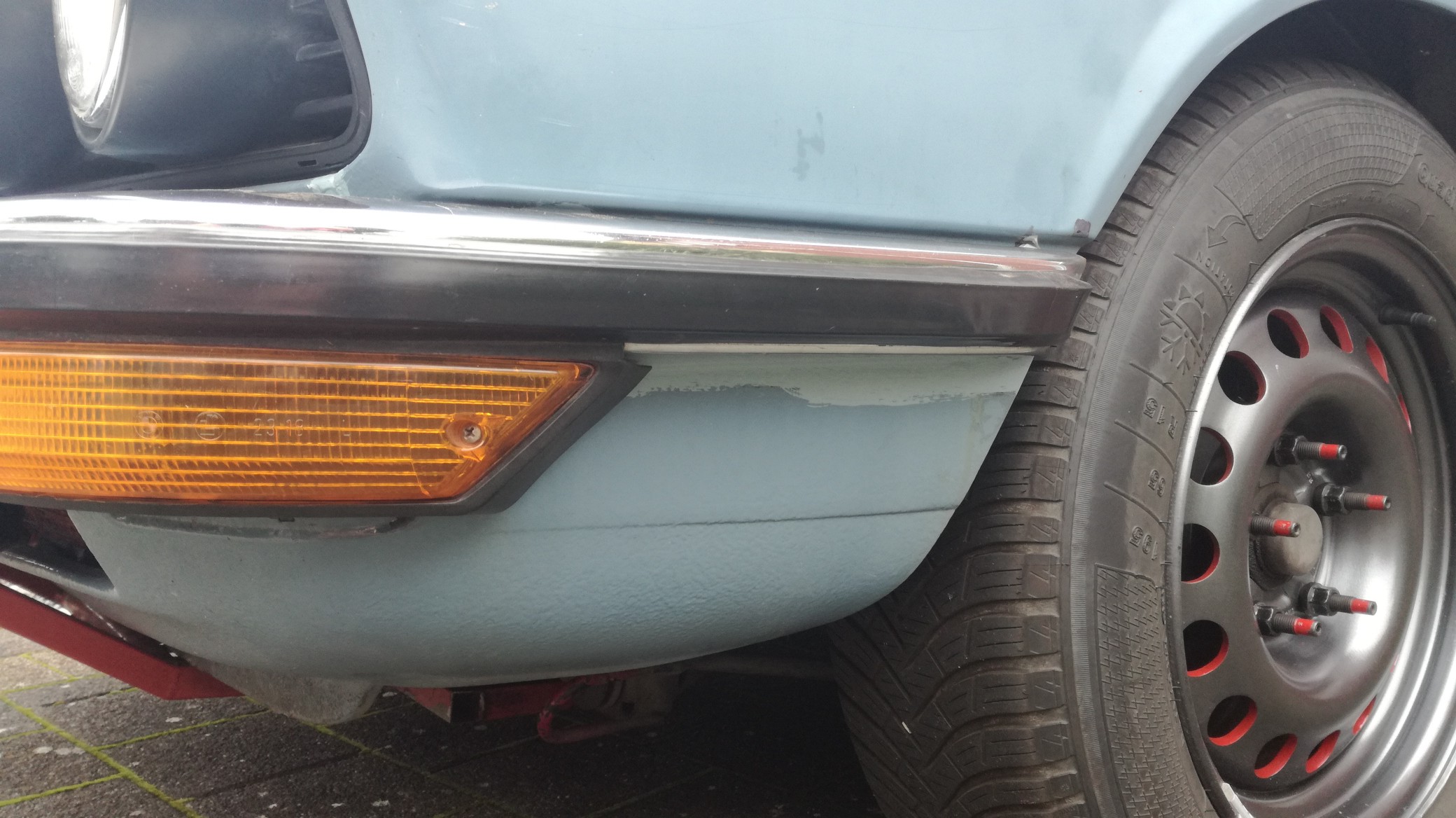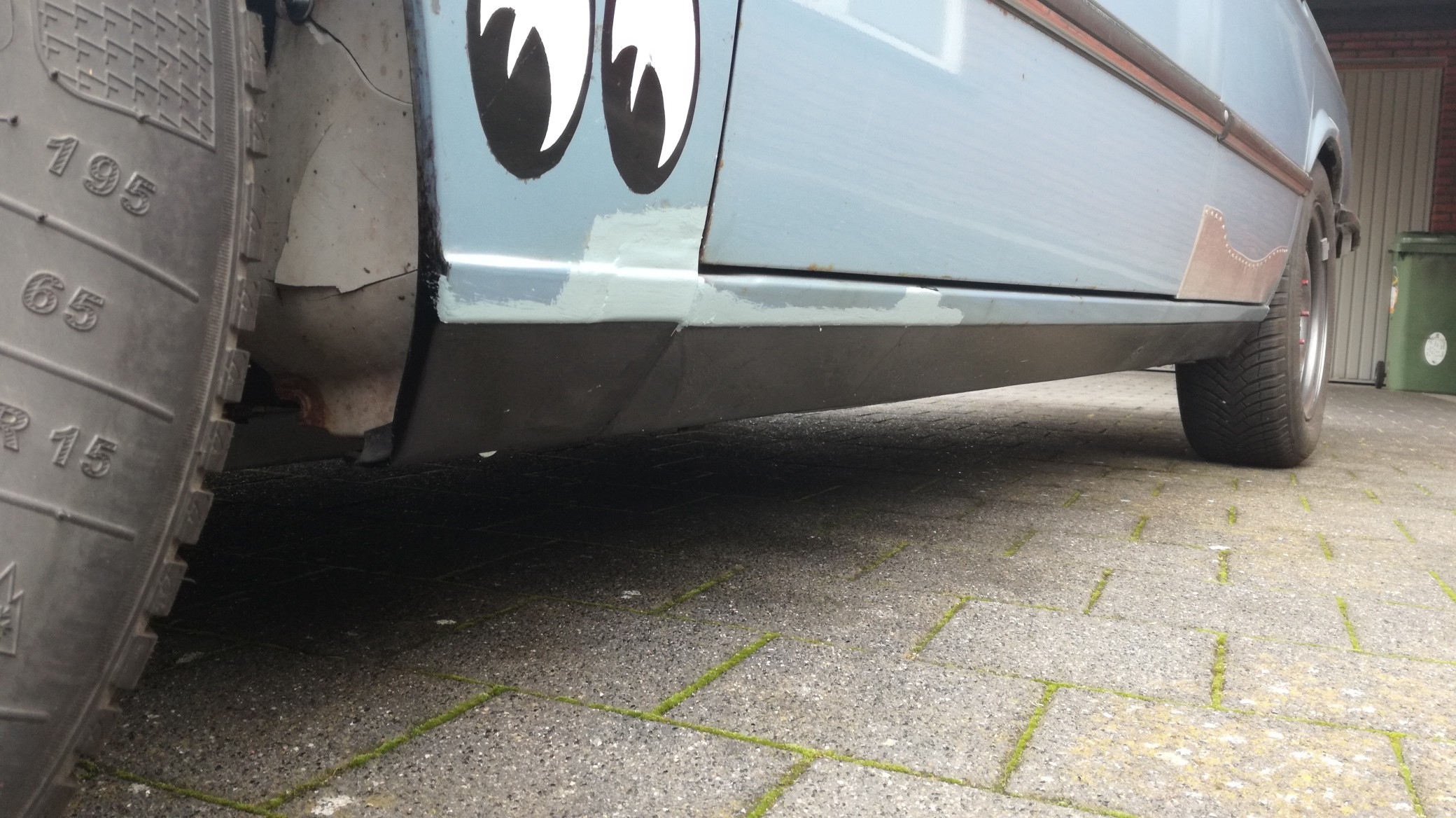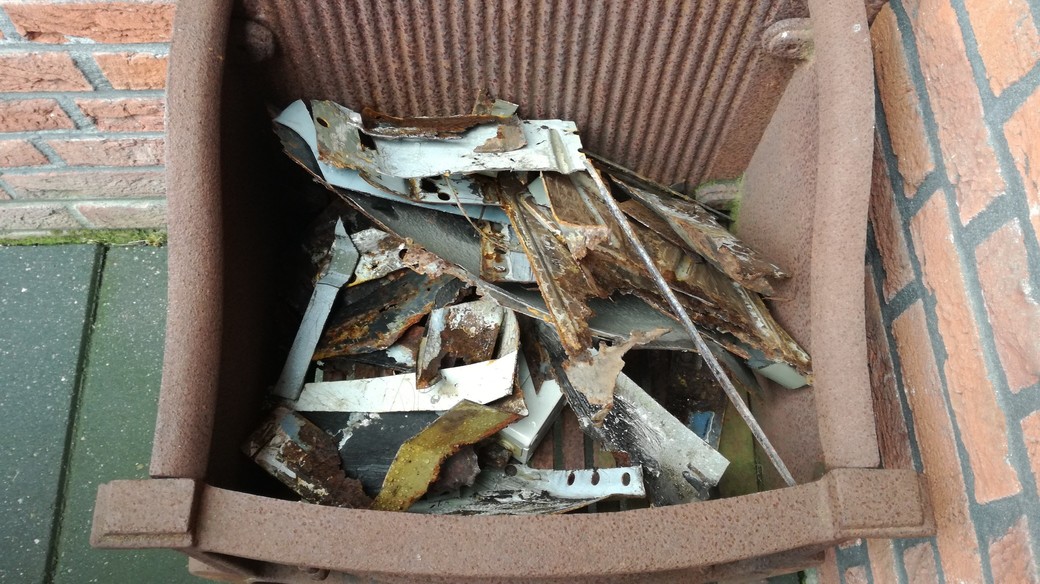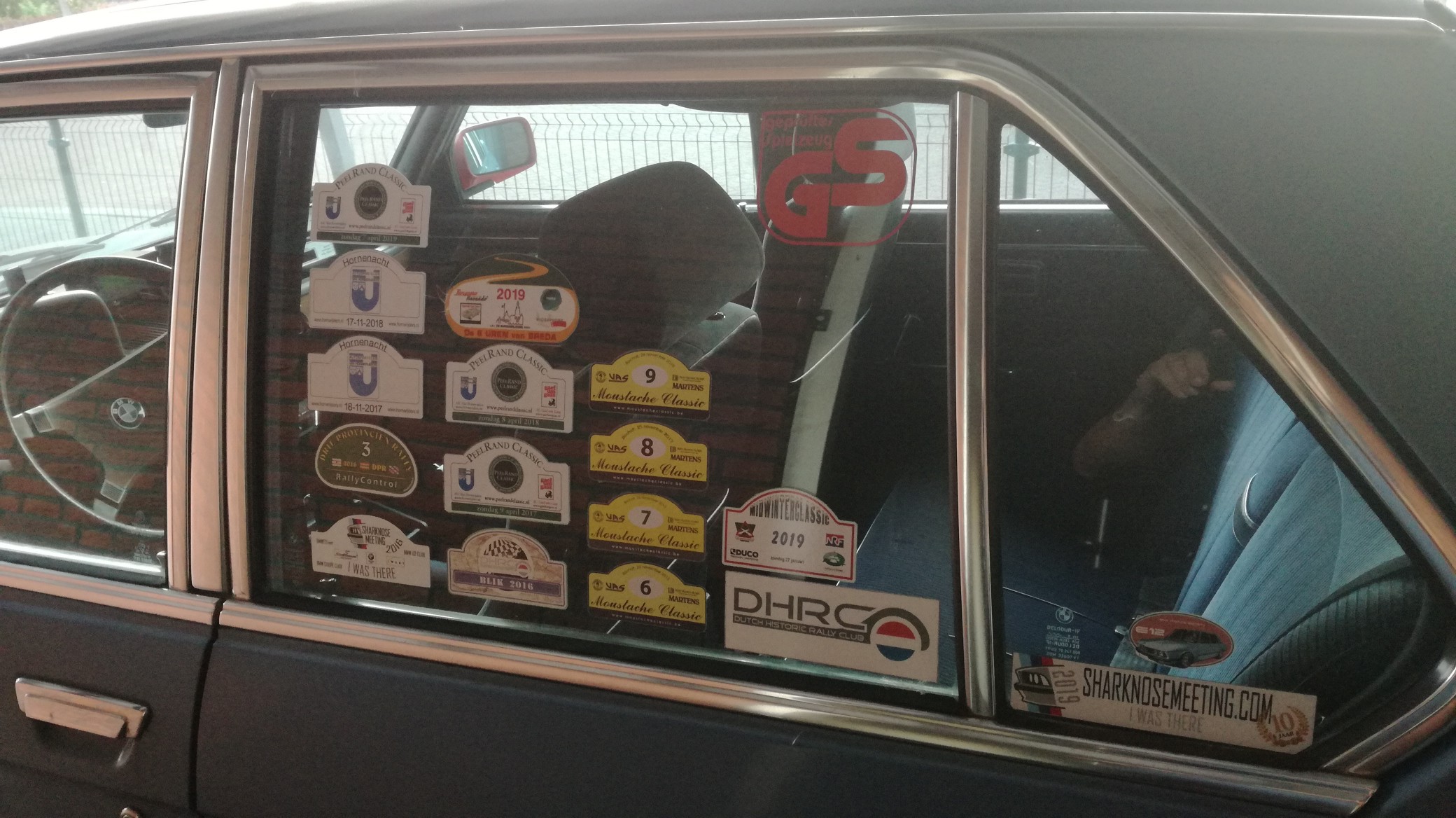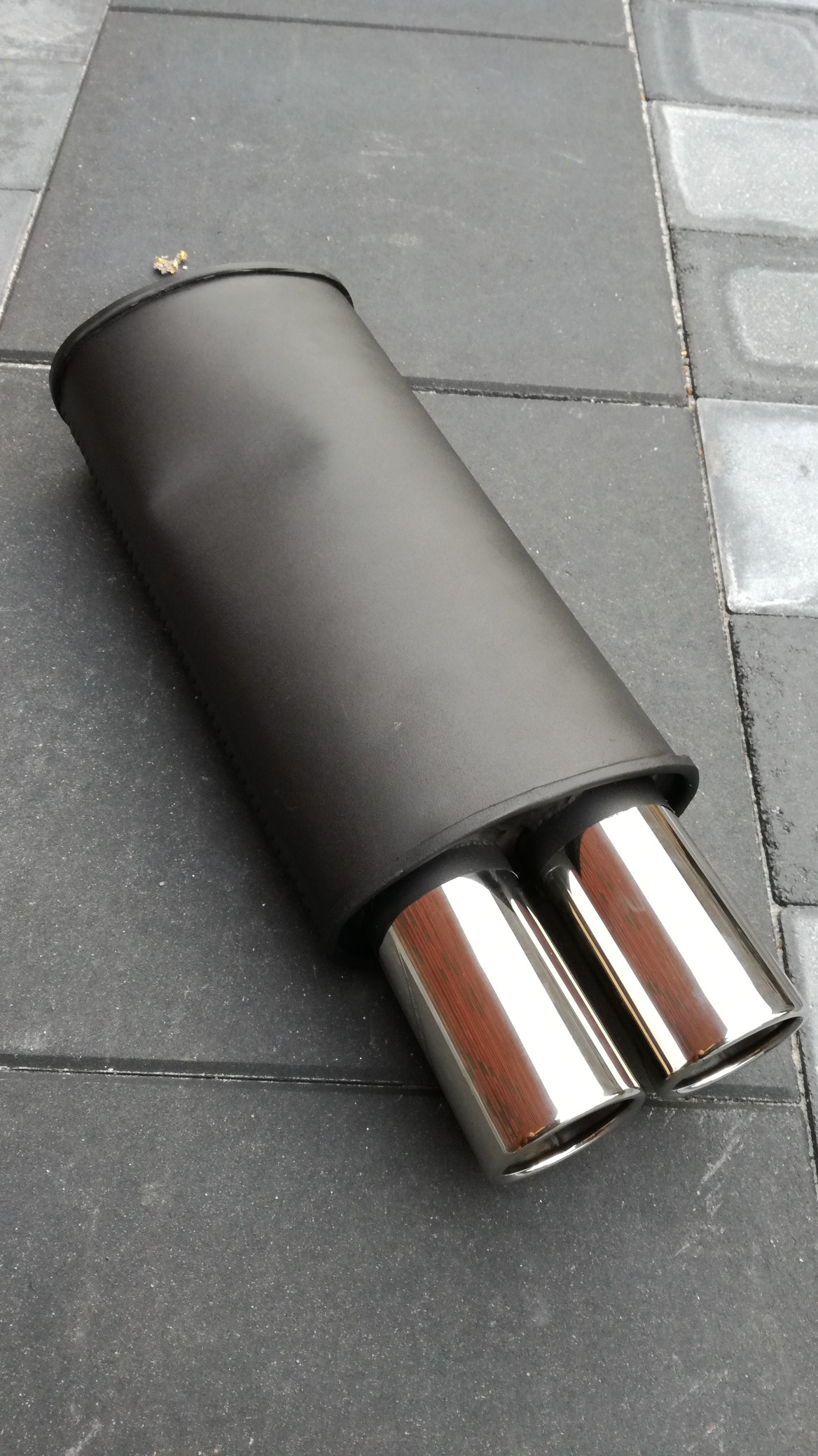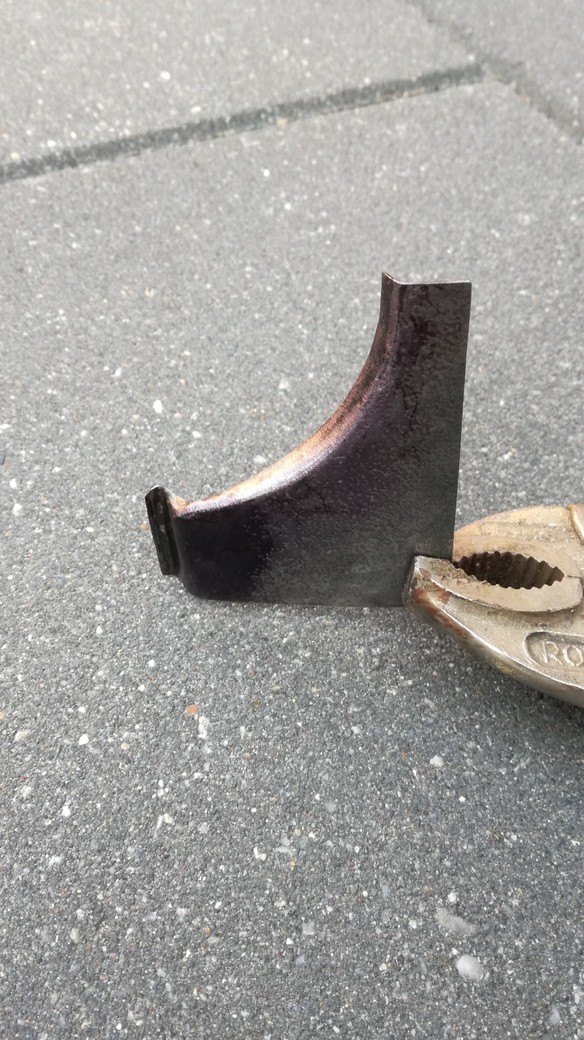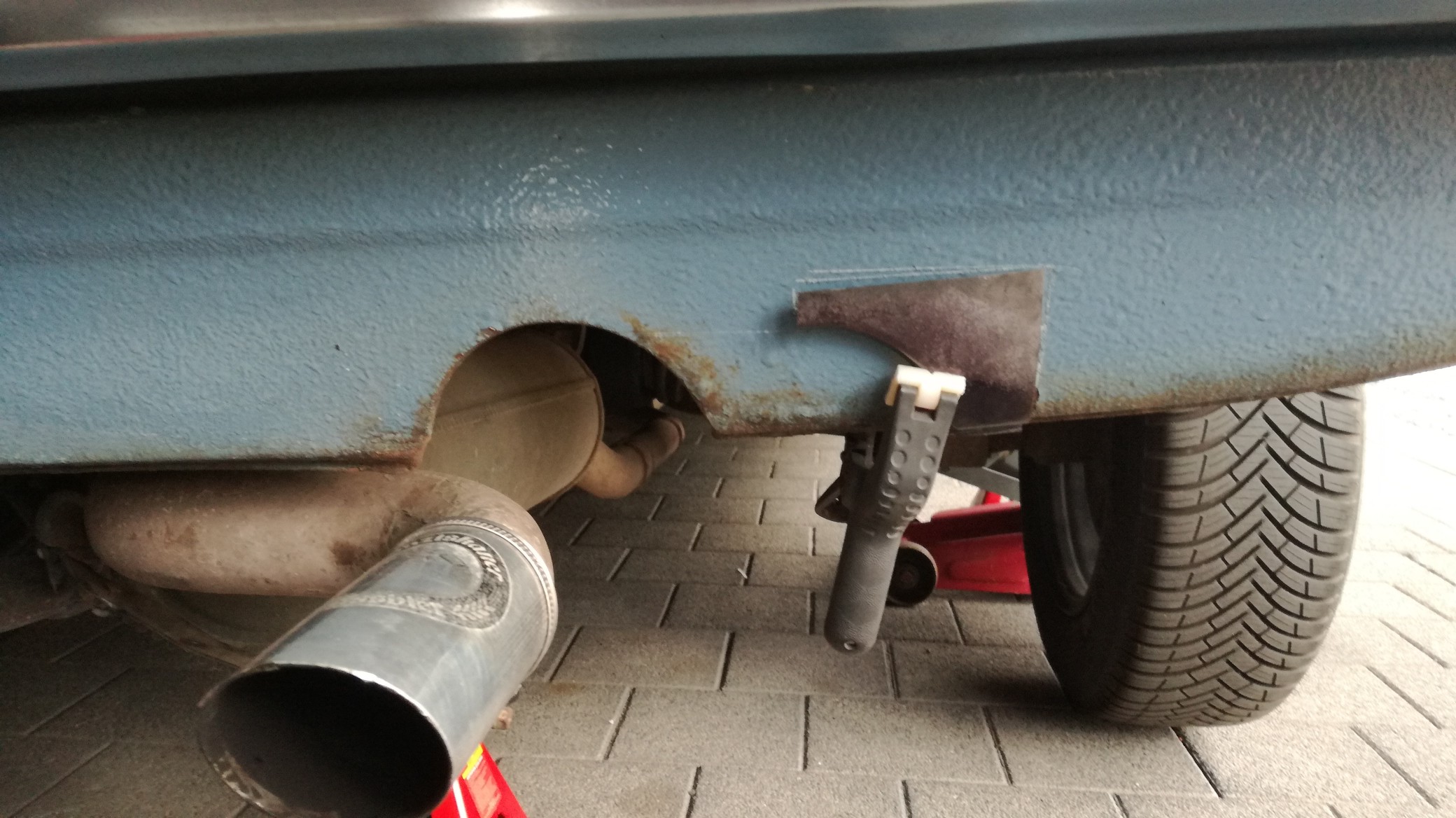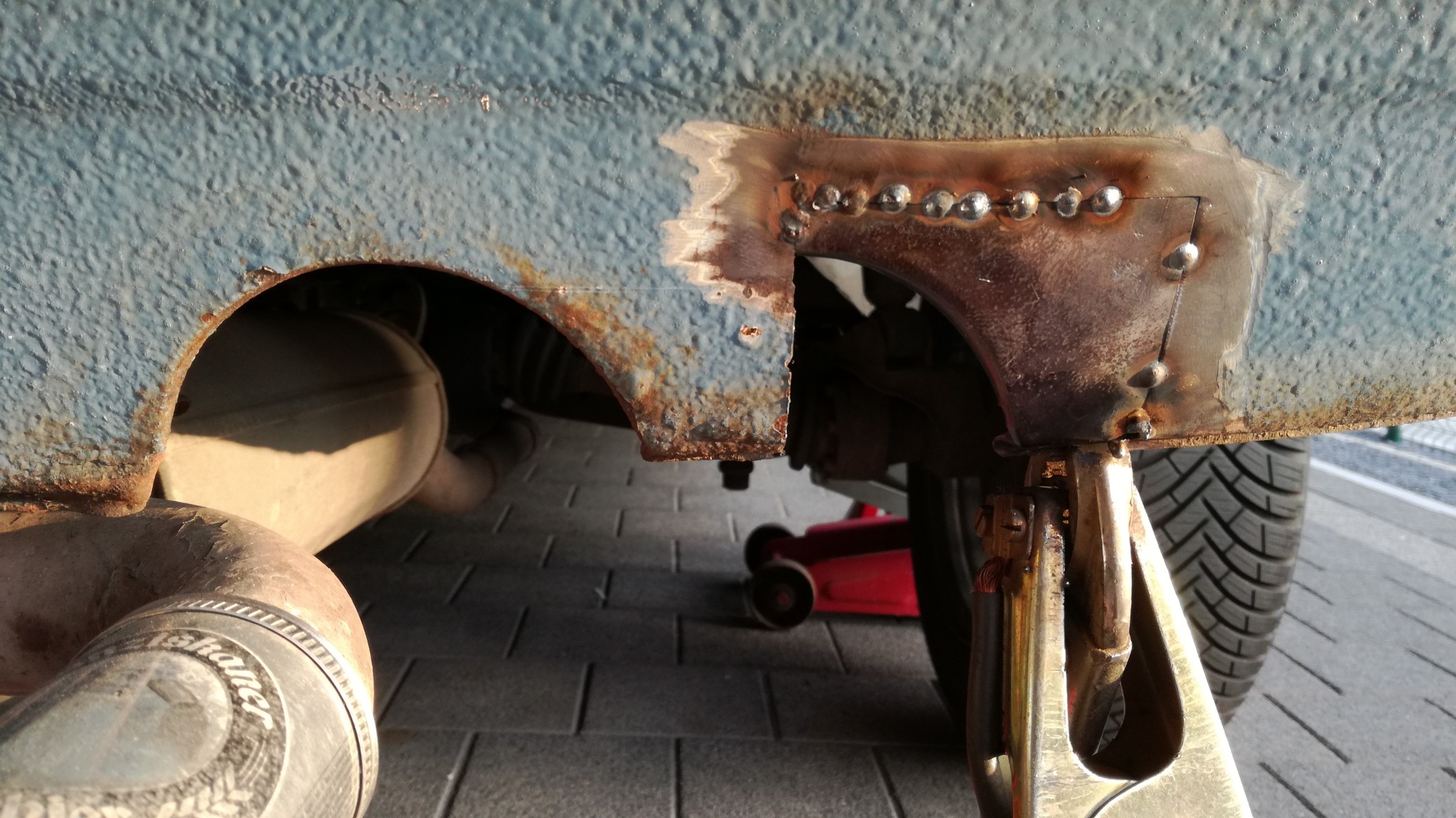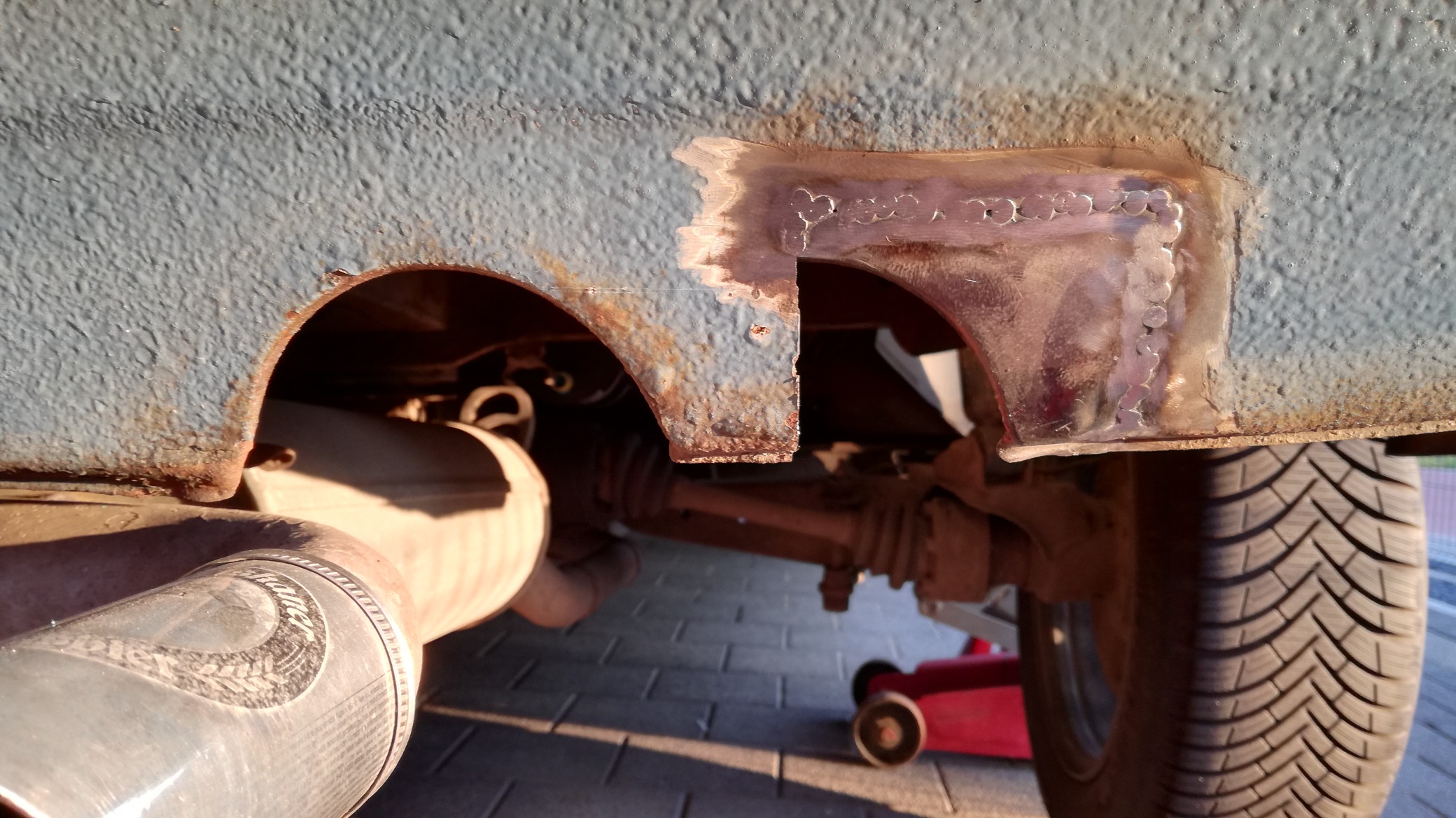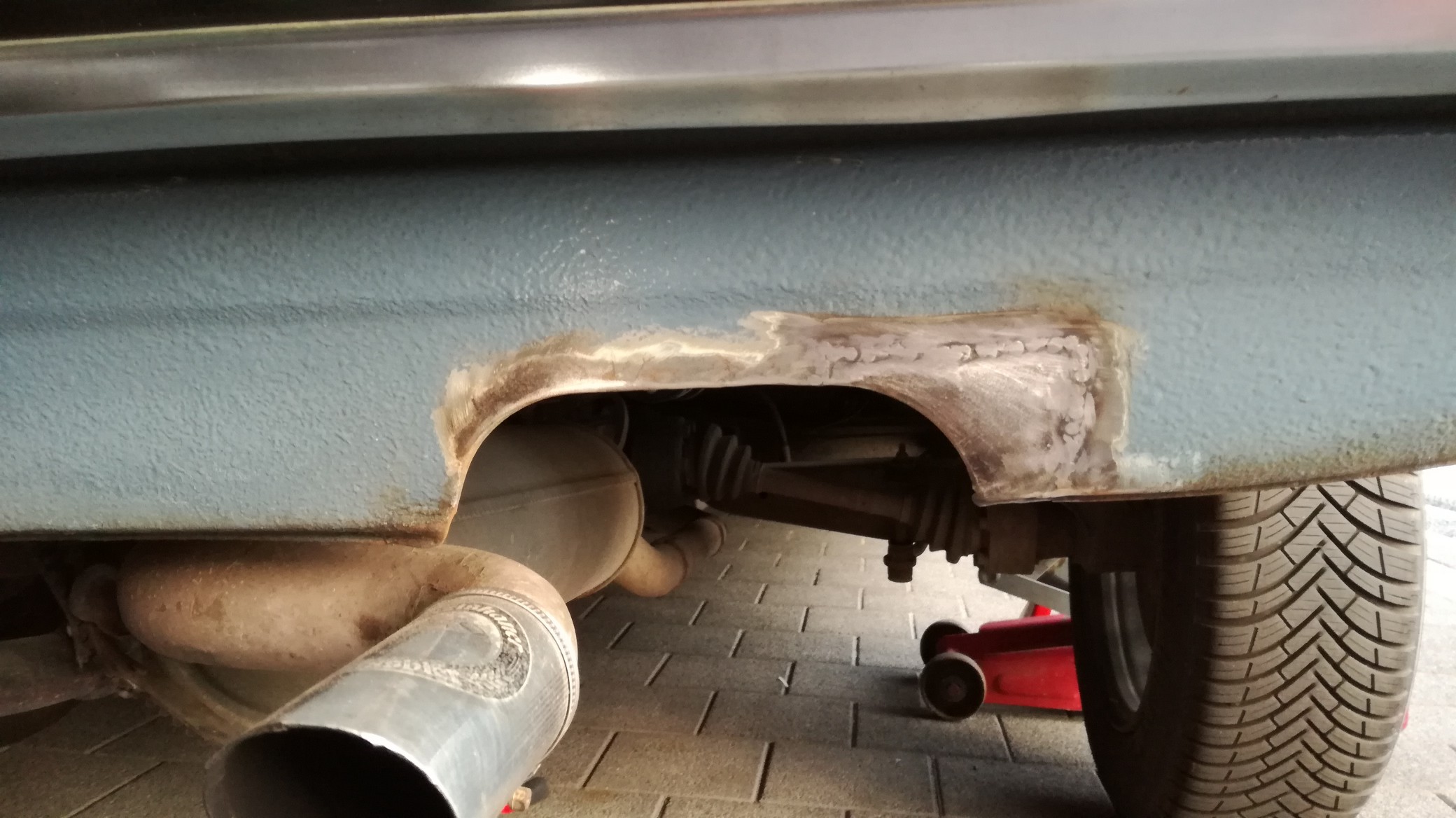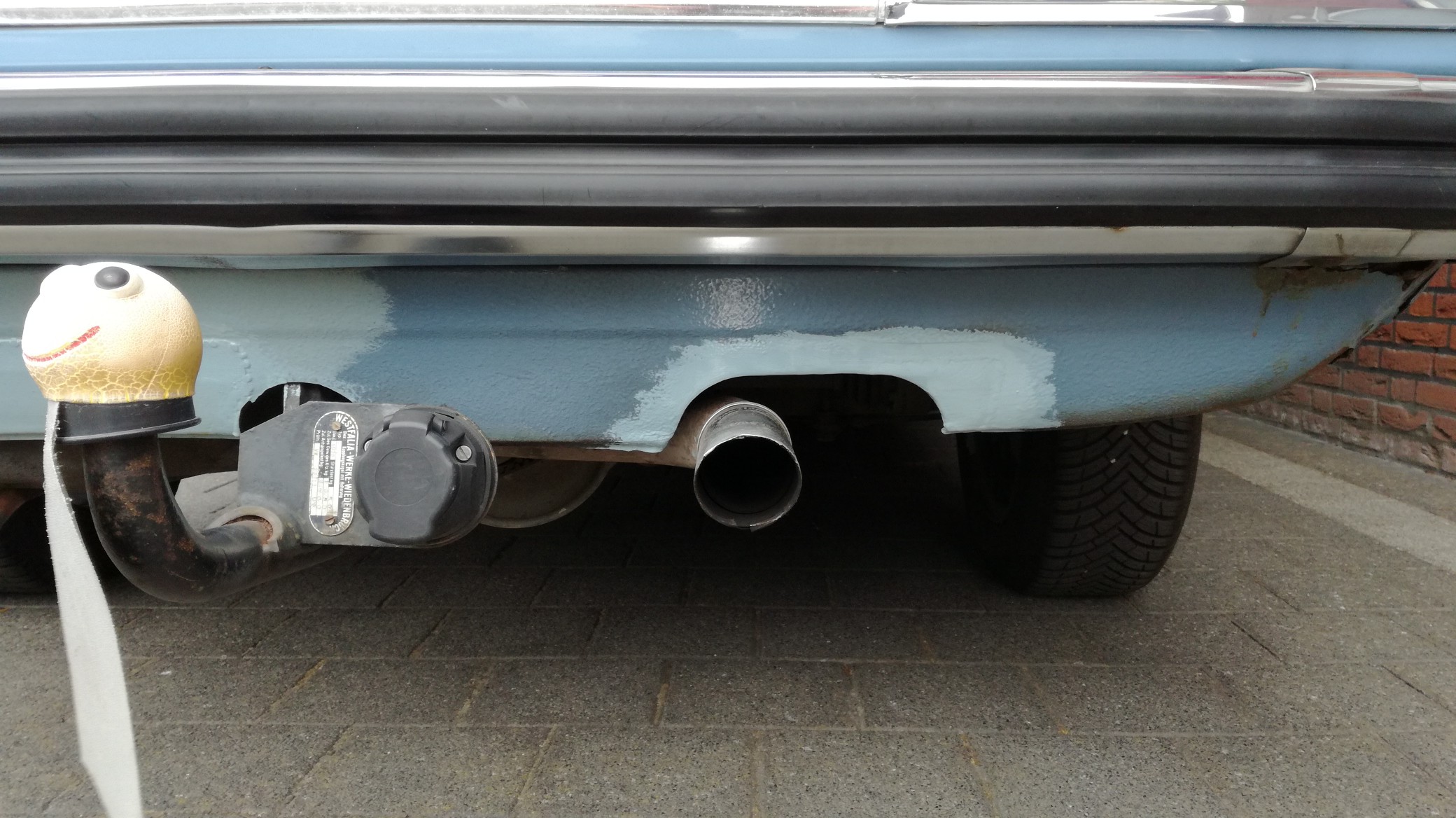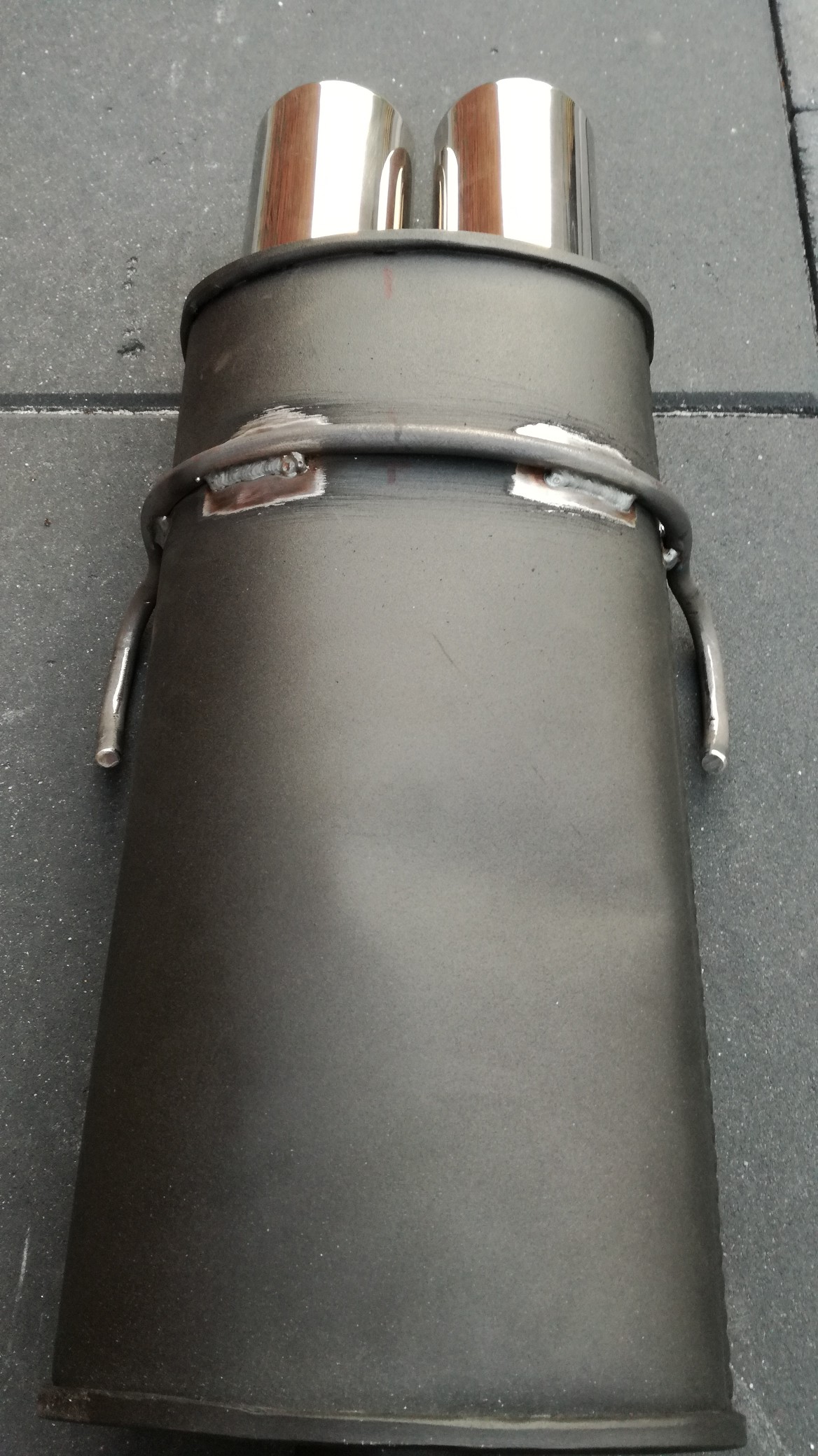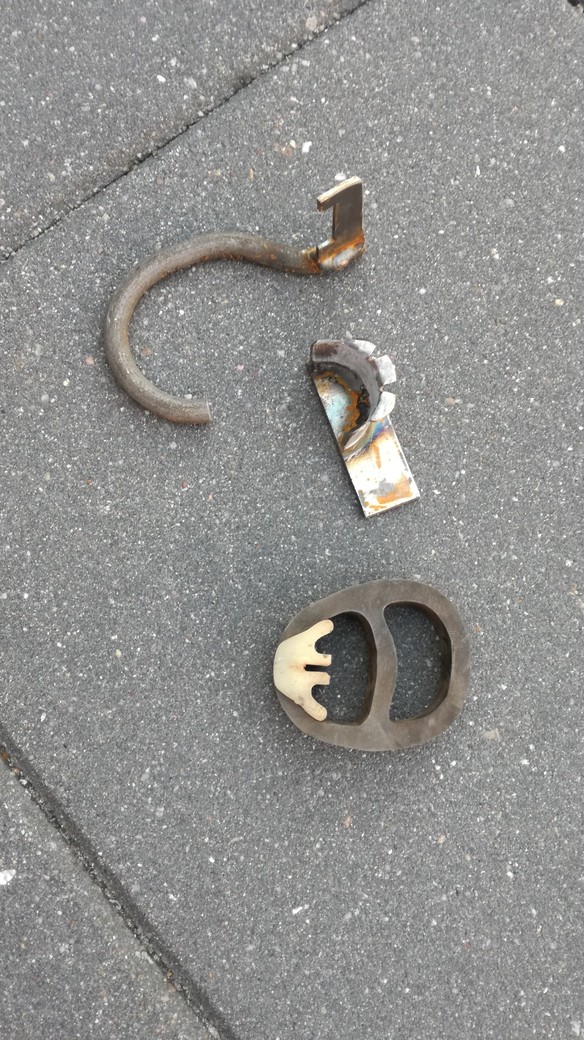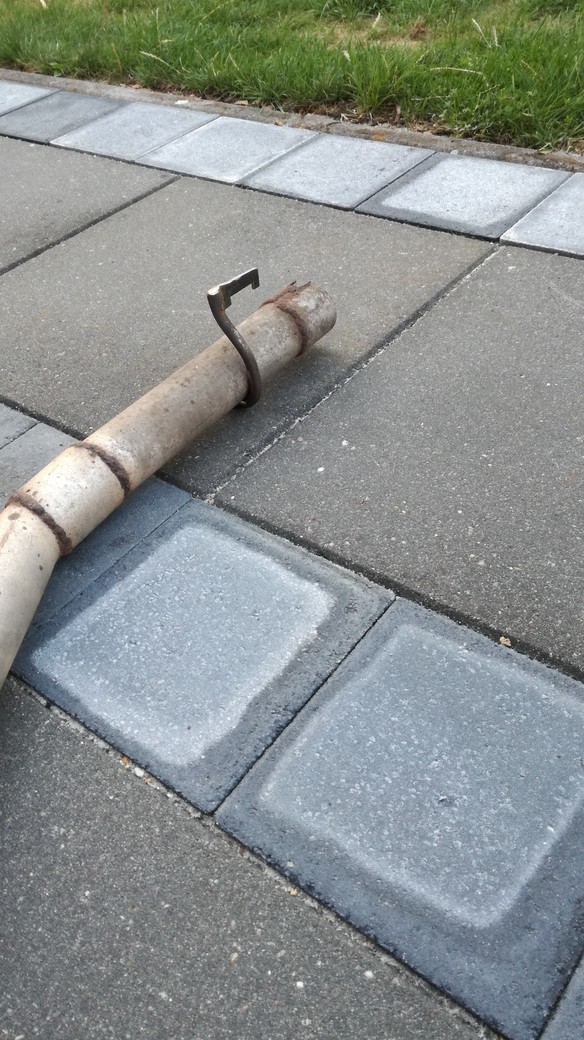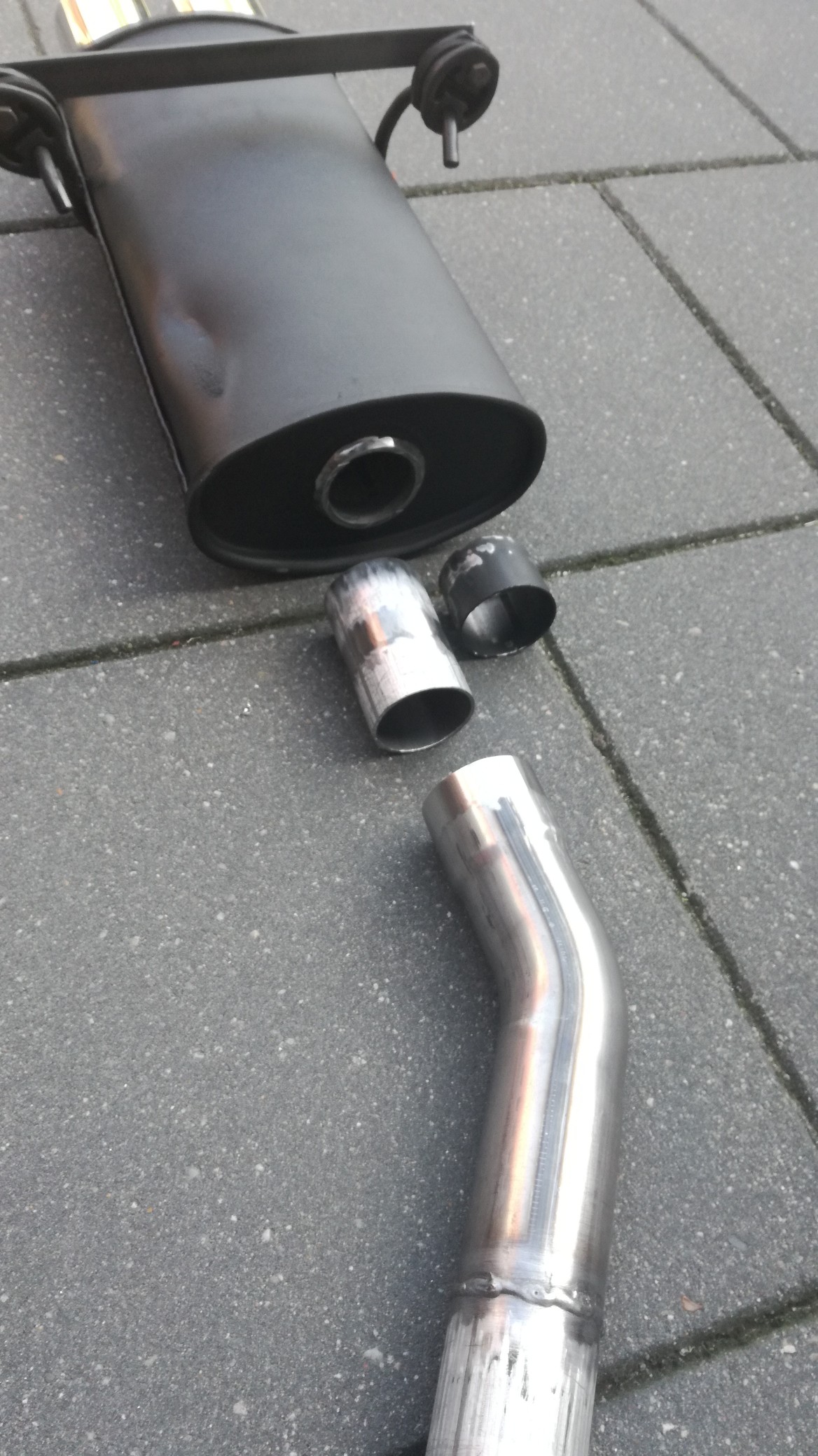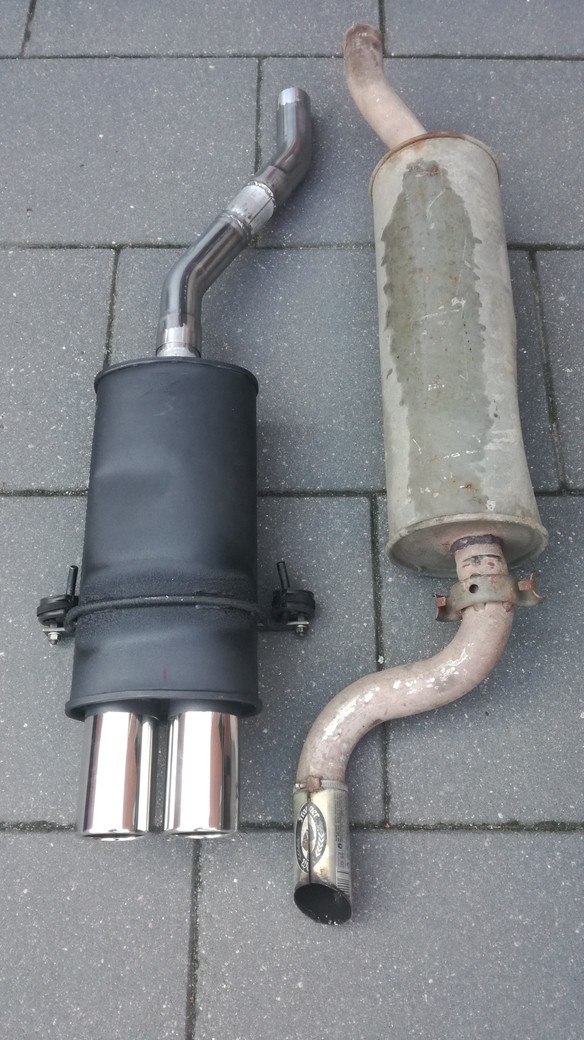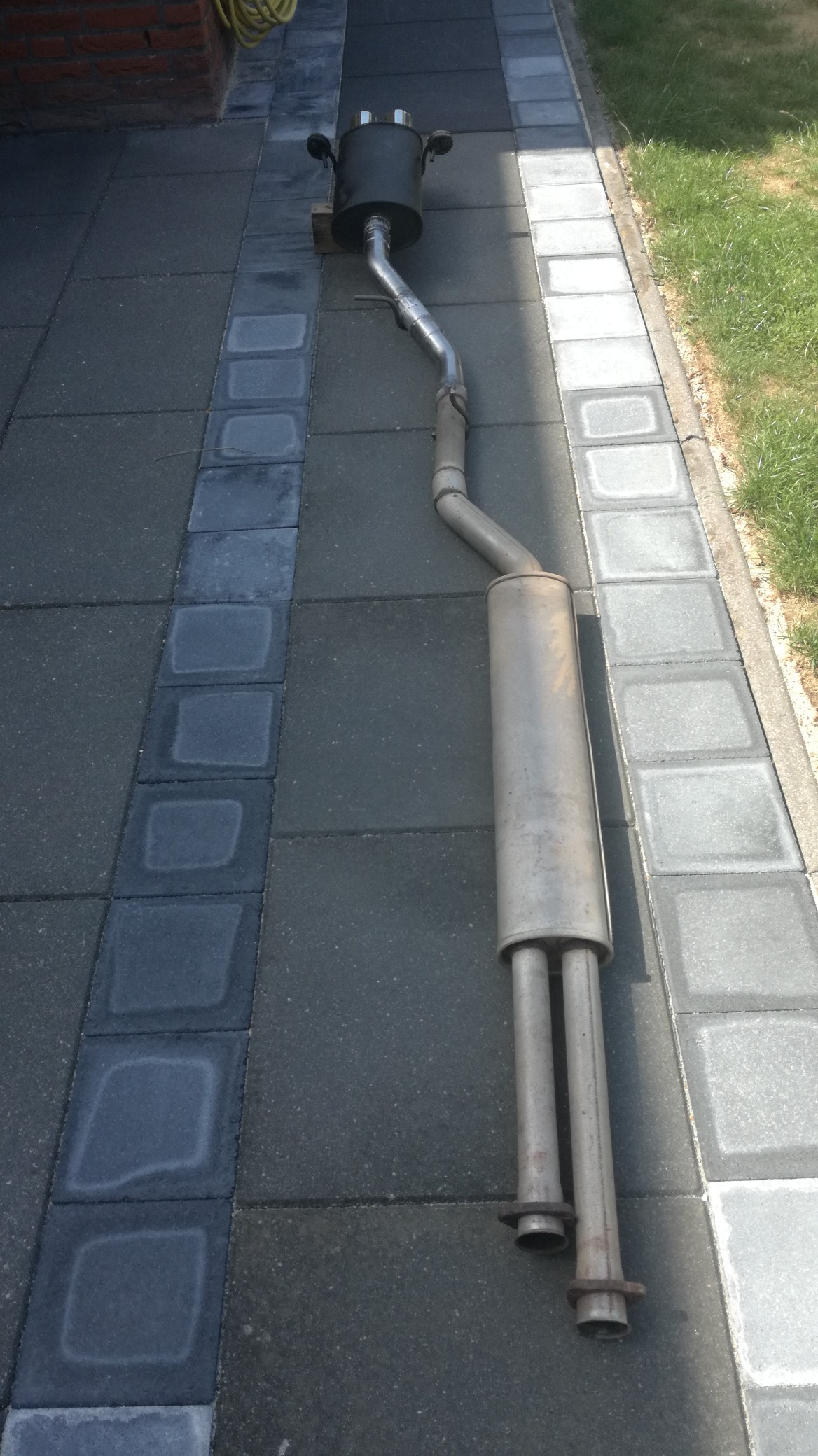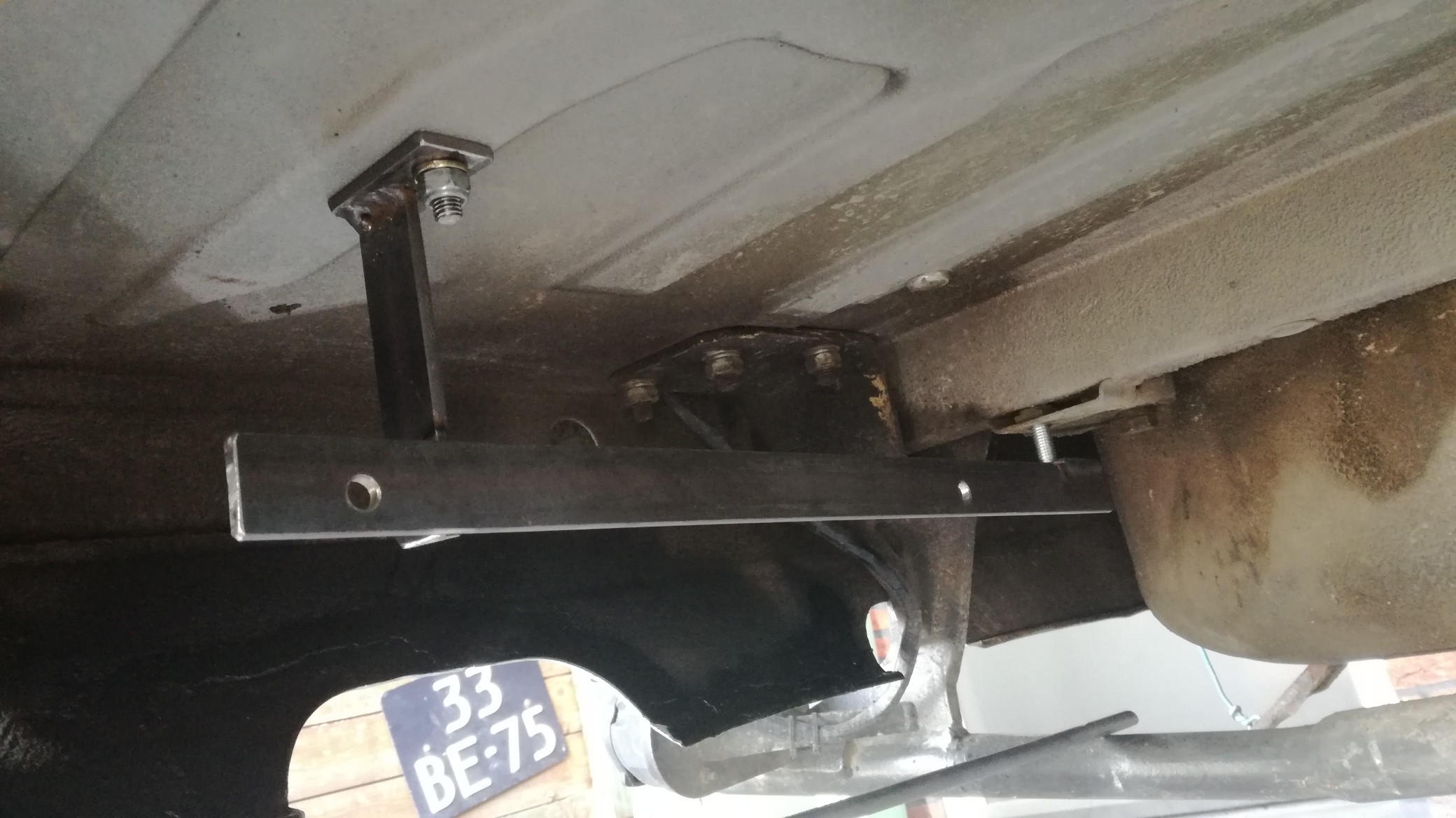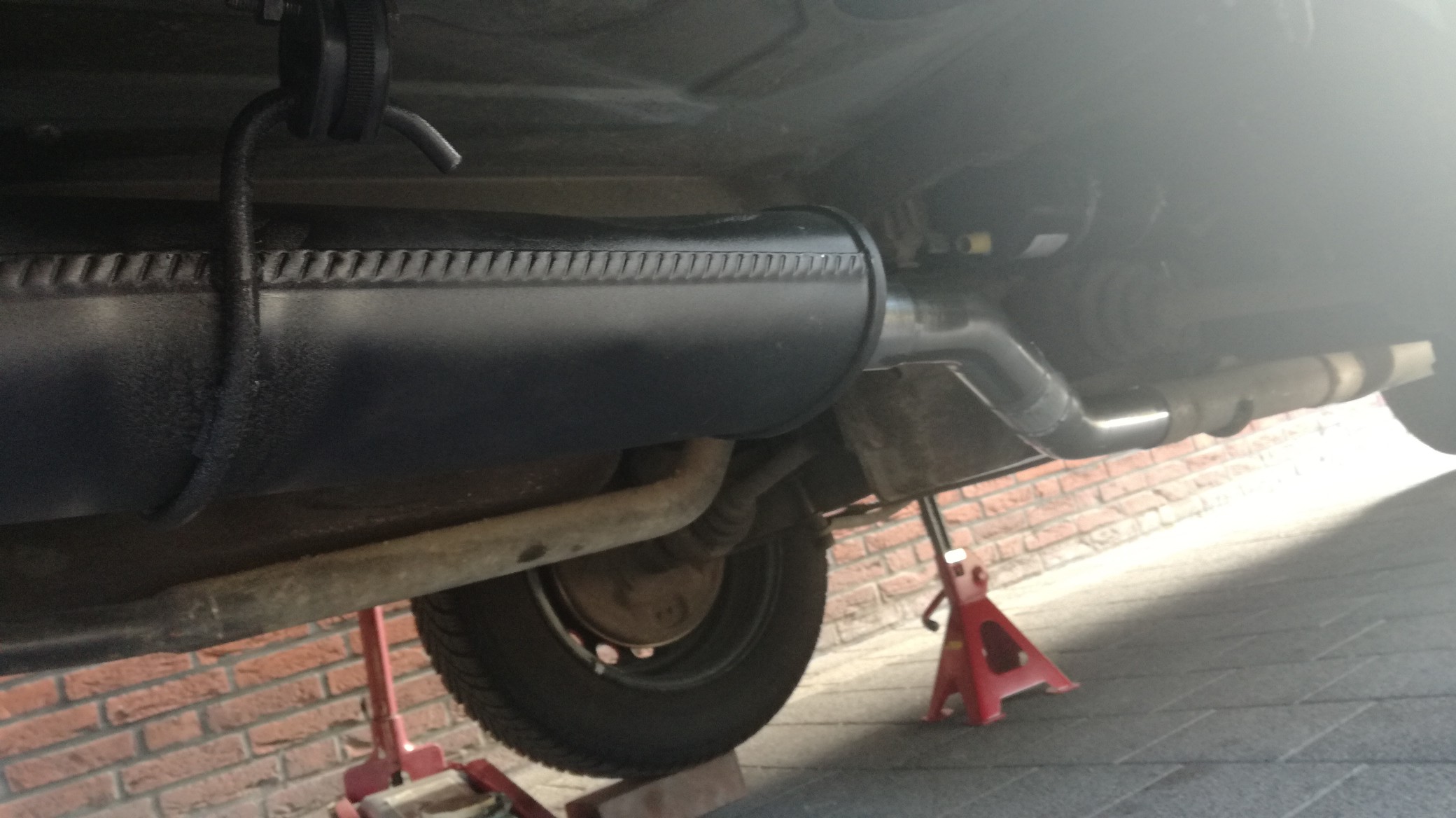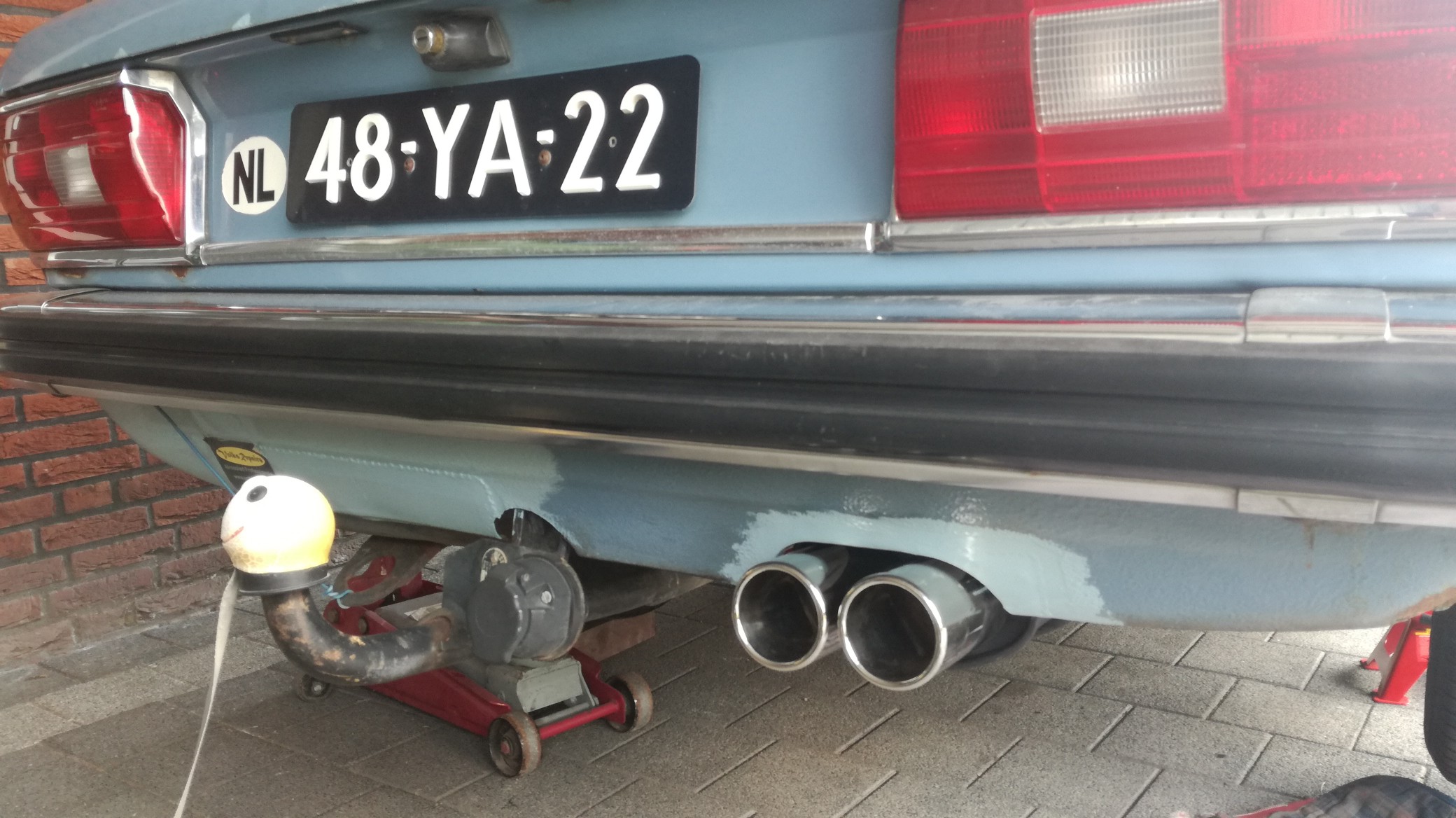Some updates
The middle switch in this switch panel still didn't have a working function, but that has changed now.
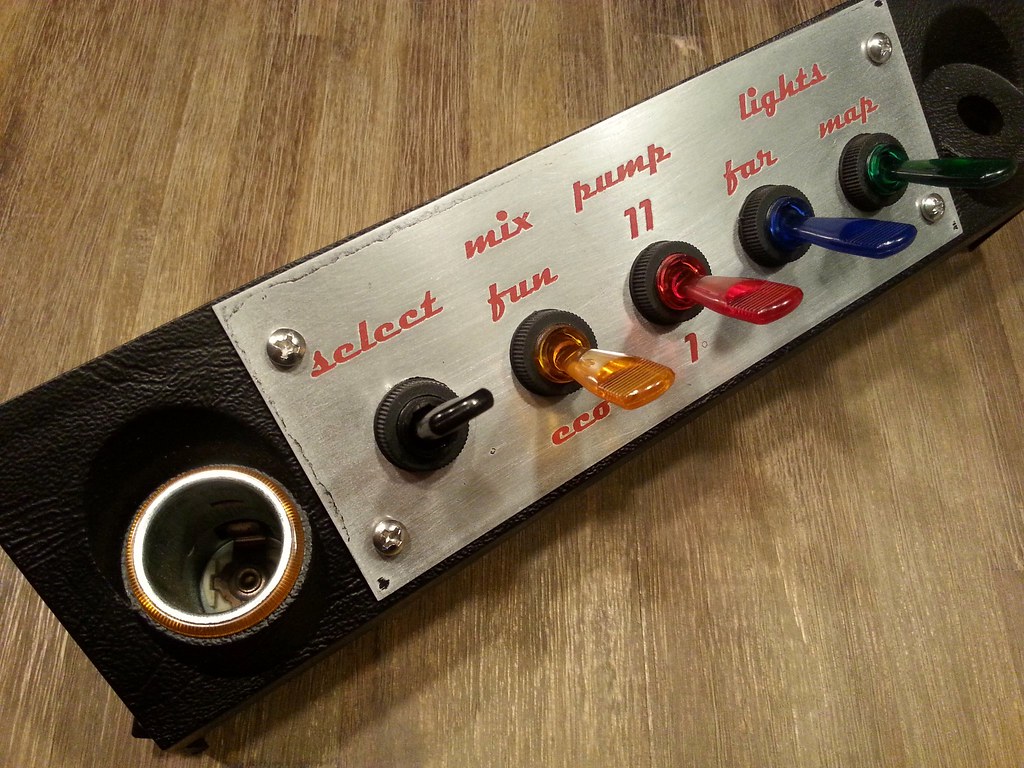
The original leaky fuel tank is gone and a "new" fueltank is installed in the boot of the car, also the fuelpump/filter assembly hanging under the car is gone and replaced by a dual in tank fuelpump setup and the fuelfilter is relocated to the engine compartiment.
Purpose of a dual fuelpump setup isn't more fuel delevery, but always having a spare pump ready when the other pump fails.
What seemed a fairly simple and small job turned out as a big job after all.
It all started with the purchase of this 70 liter light truck fueltank:

After a wash it looks much better and fits nicely between the rear wheelarches in the boot:
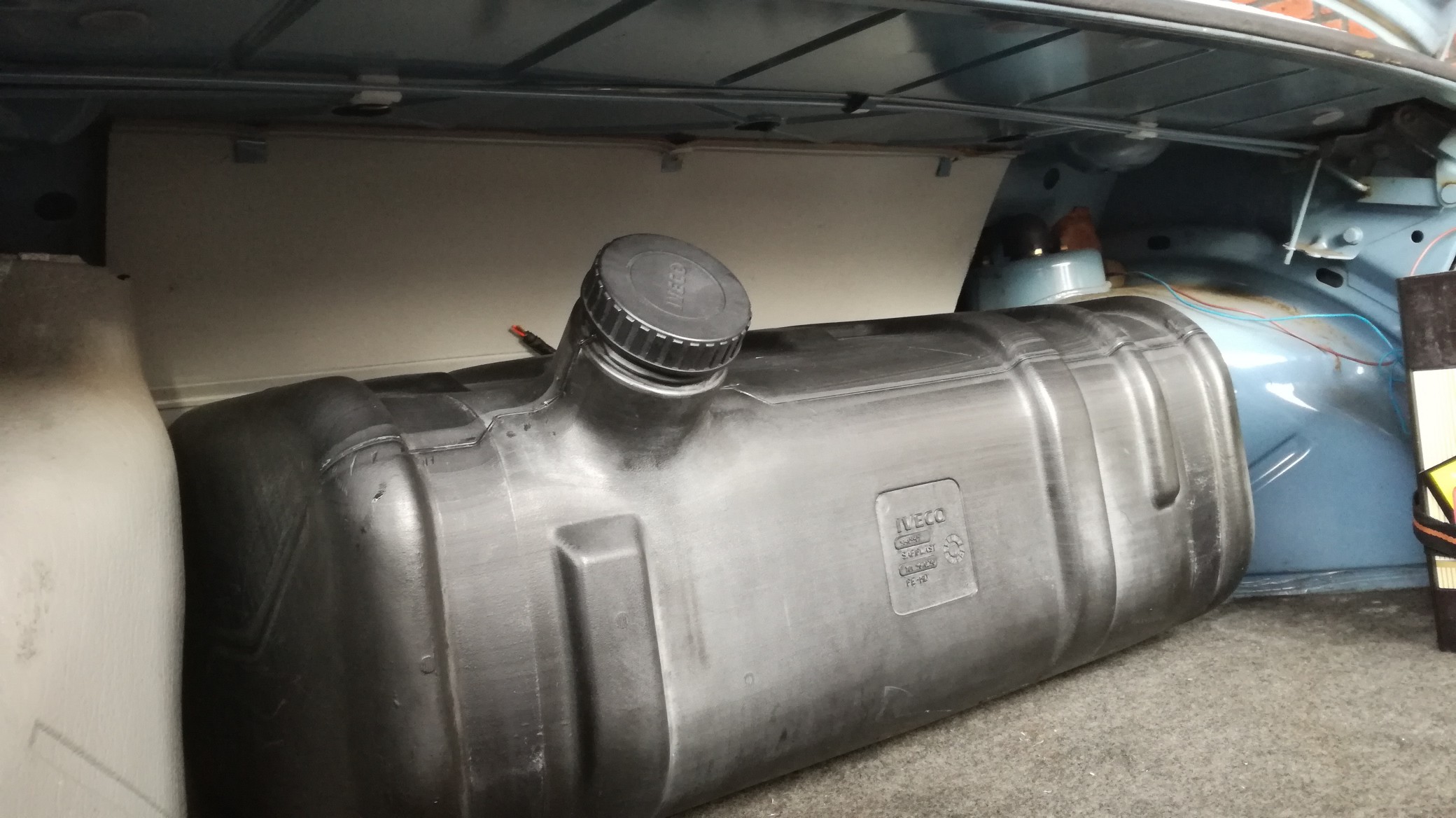
This thank doesn't have fuelpumps inside, a incompatible fuelgauge sender unit and misses a vapour vent connection because its intended use was for diesel and placed outside the vehicle. The fillercap has a over/under pressure valve for venting.
First thing to do was fabricating a bracket holding the fuelpumps and fuellines an sourcing 2 fuelpumps which would fit together through the apendages flange hole which is 85mm in diameter.
I found some johns fuelpumps with filters on ebay intended for ford focus for a nice offer.
When they arrived it turned out they had a 38mm diameter, so 2 pumps arranged nicely to eachother should fit.
These pumps also have a build in check valve, so fuel flows only in 1 direction, and when only 1 pump runs the fuel can't flow through the other pump back.
Because the fuelgauge senderunit wasn't usable i've decided to use the flange for the fuelpump setup, and fabricated a nice bracket and fuellines to the flange.
the new fuelpumps:

The fuelpumps bracket:
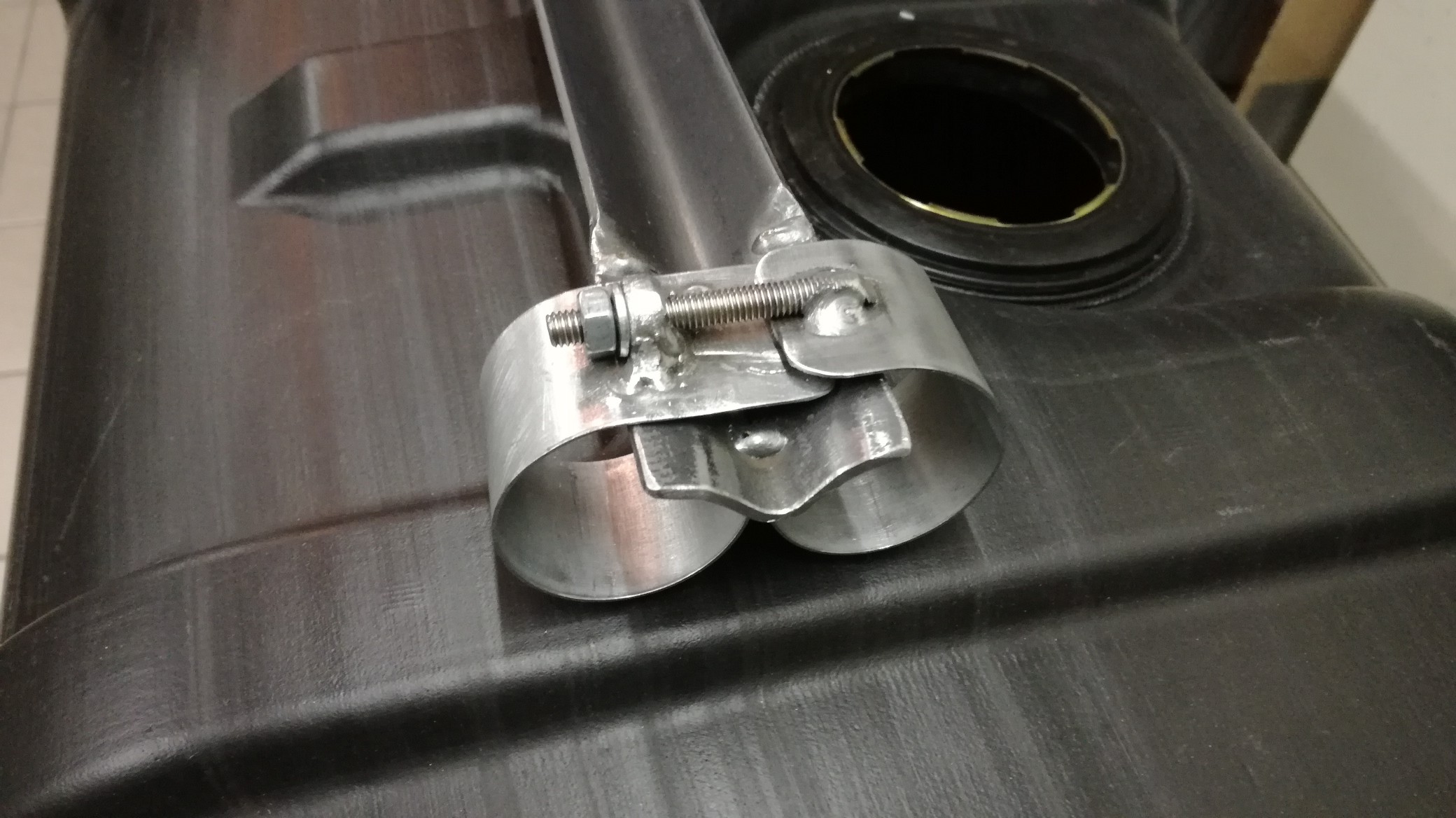
with a nice snug fit through the appendages hole:
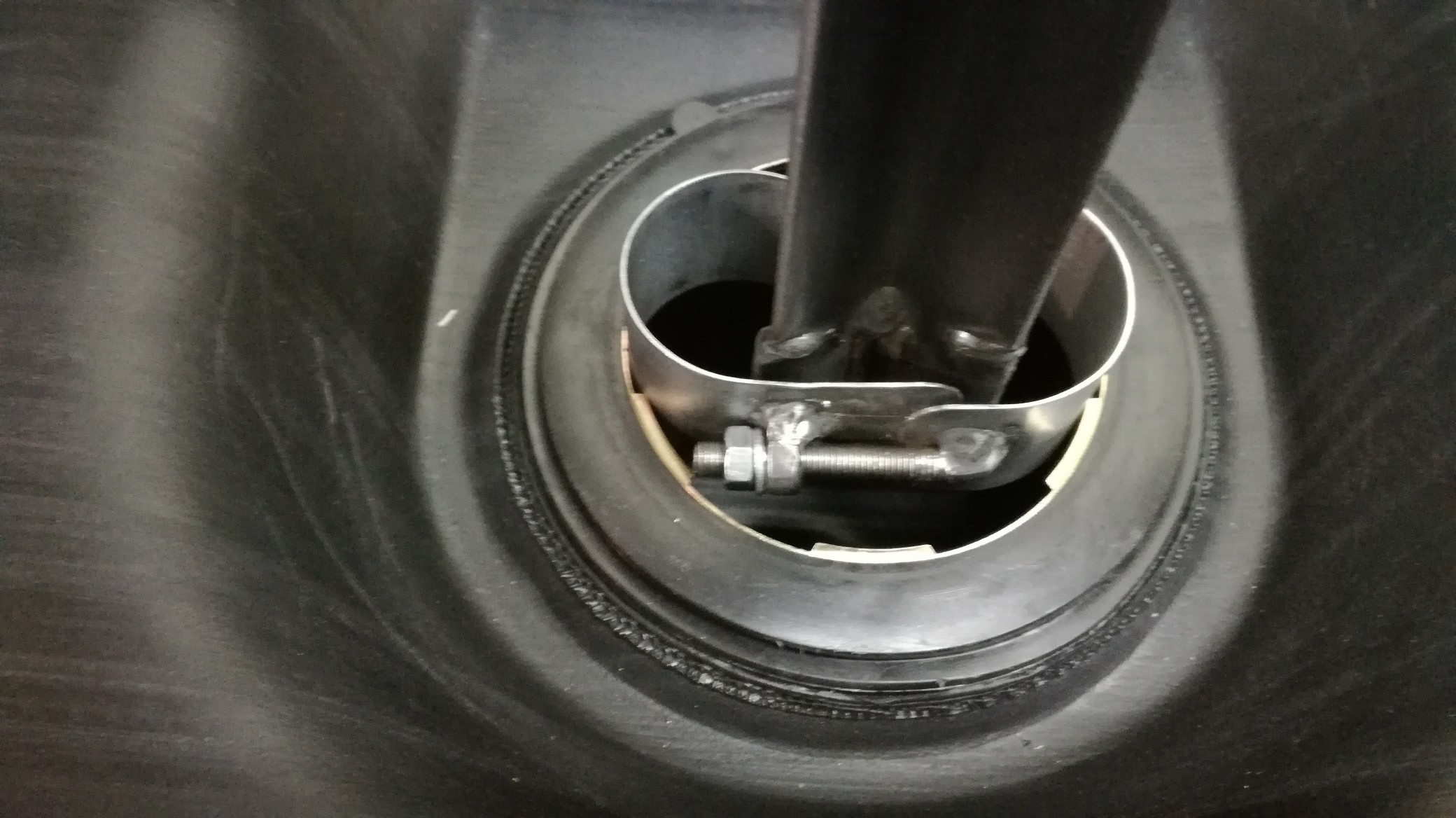
test fitting the pumps in the bracket:
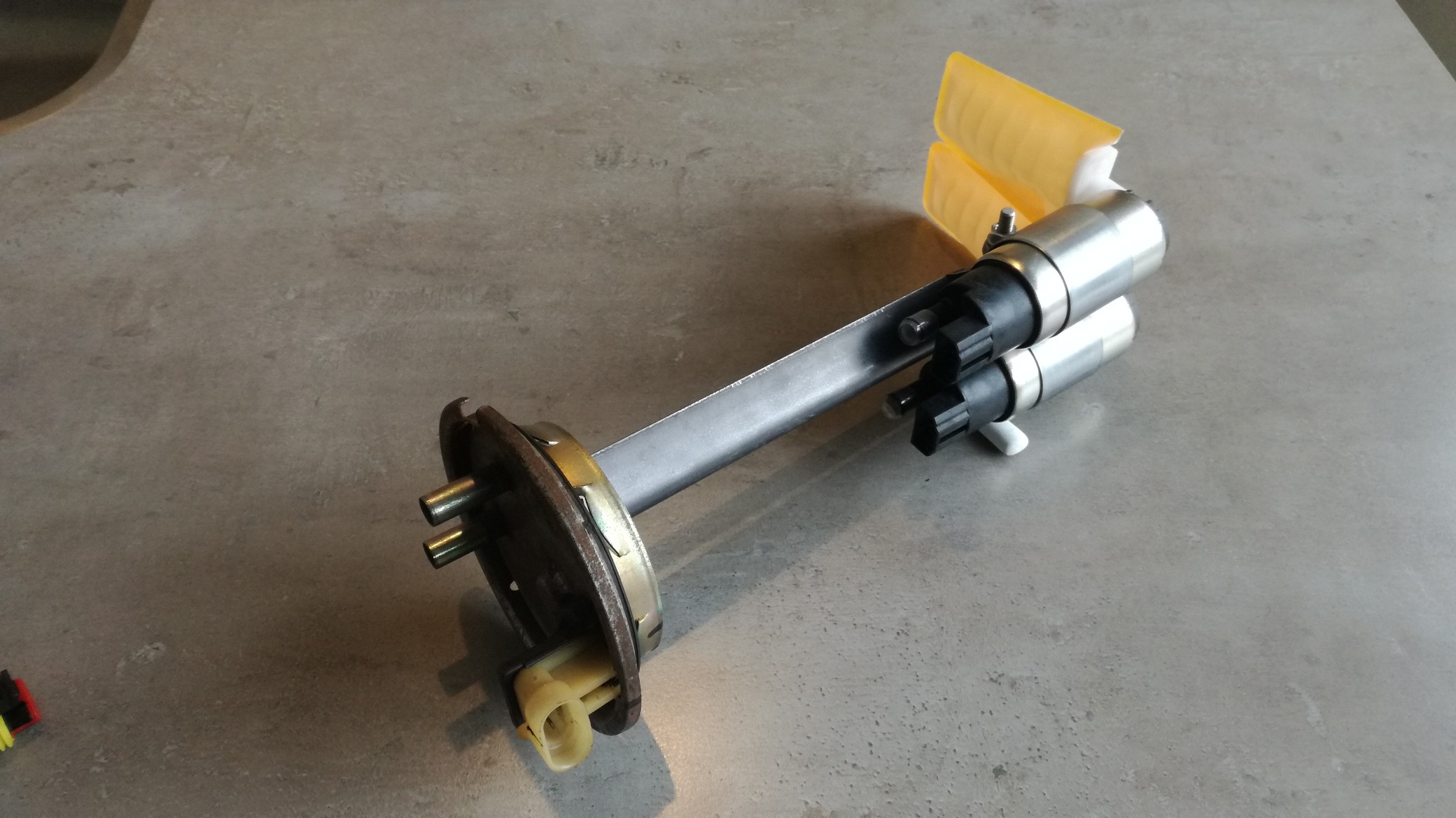
then added some hard fuel line and wiring:
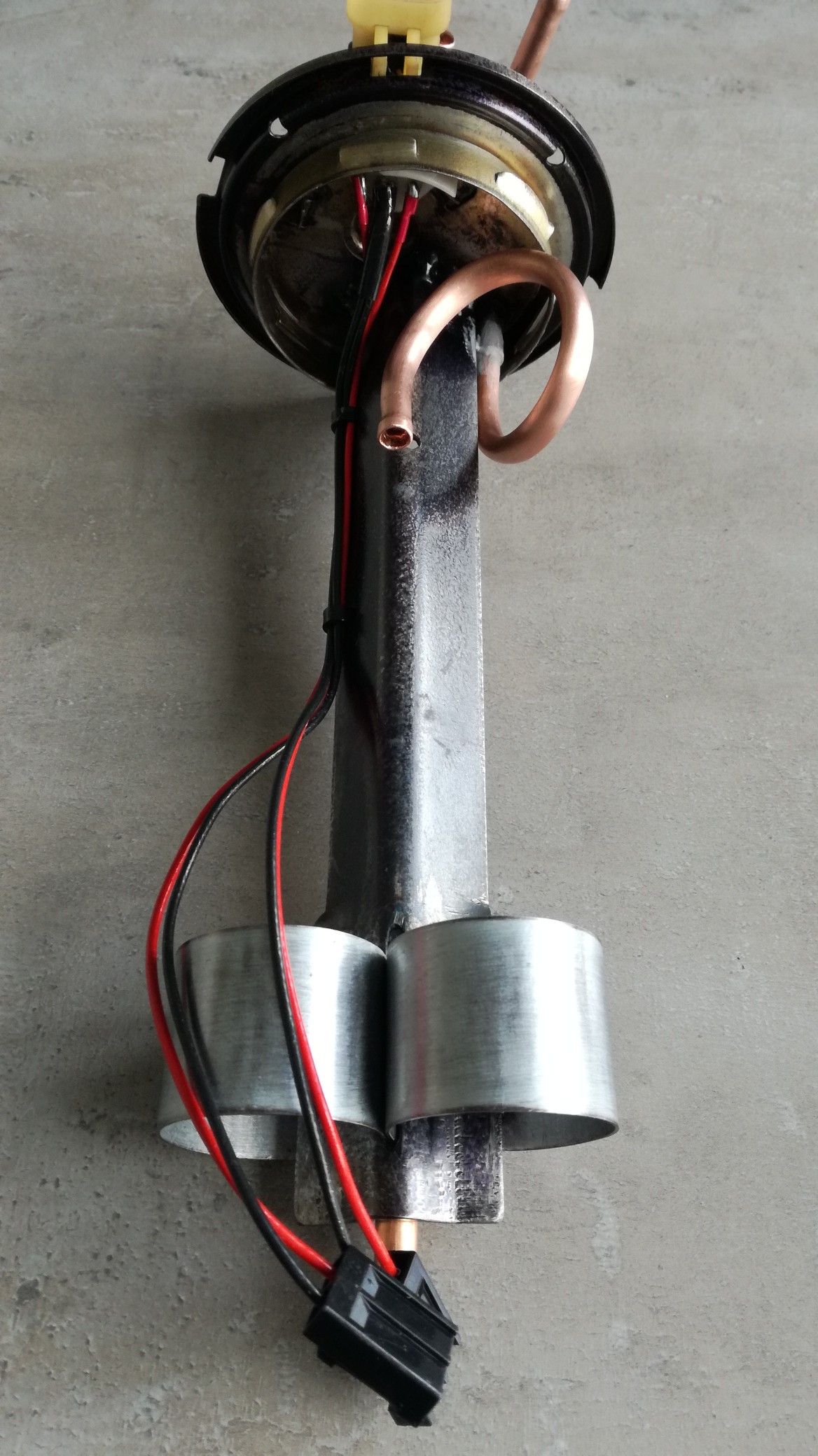
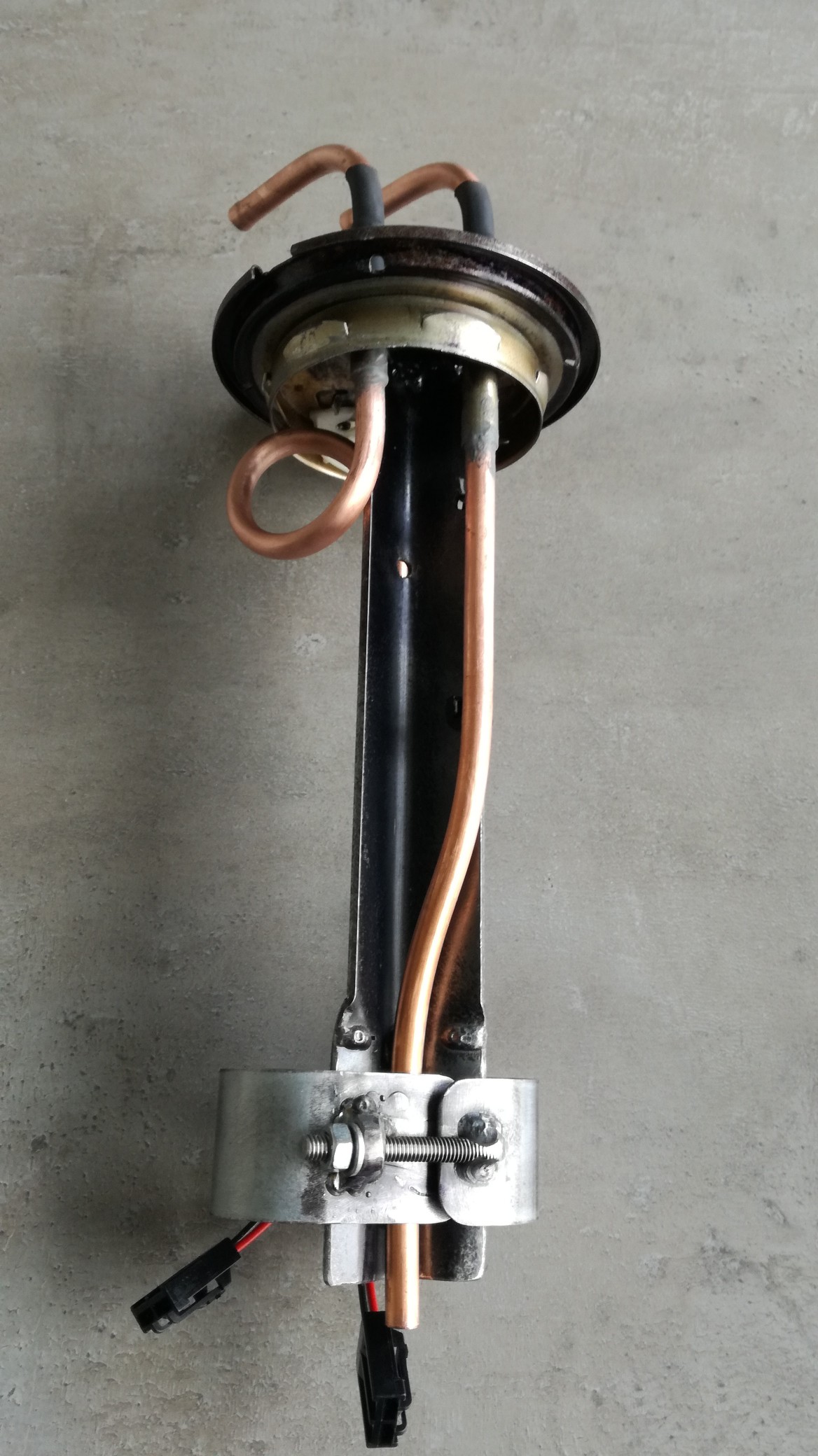
and mounted the pumps with some short hoses and a y piece

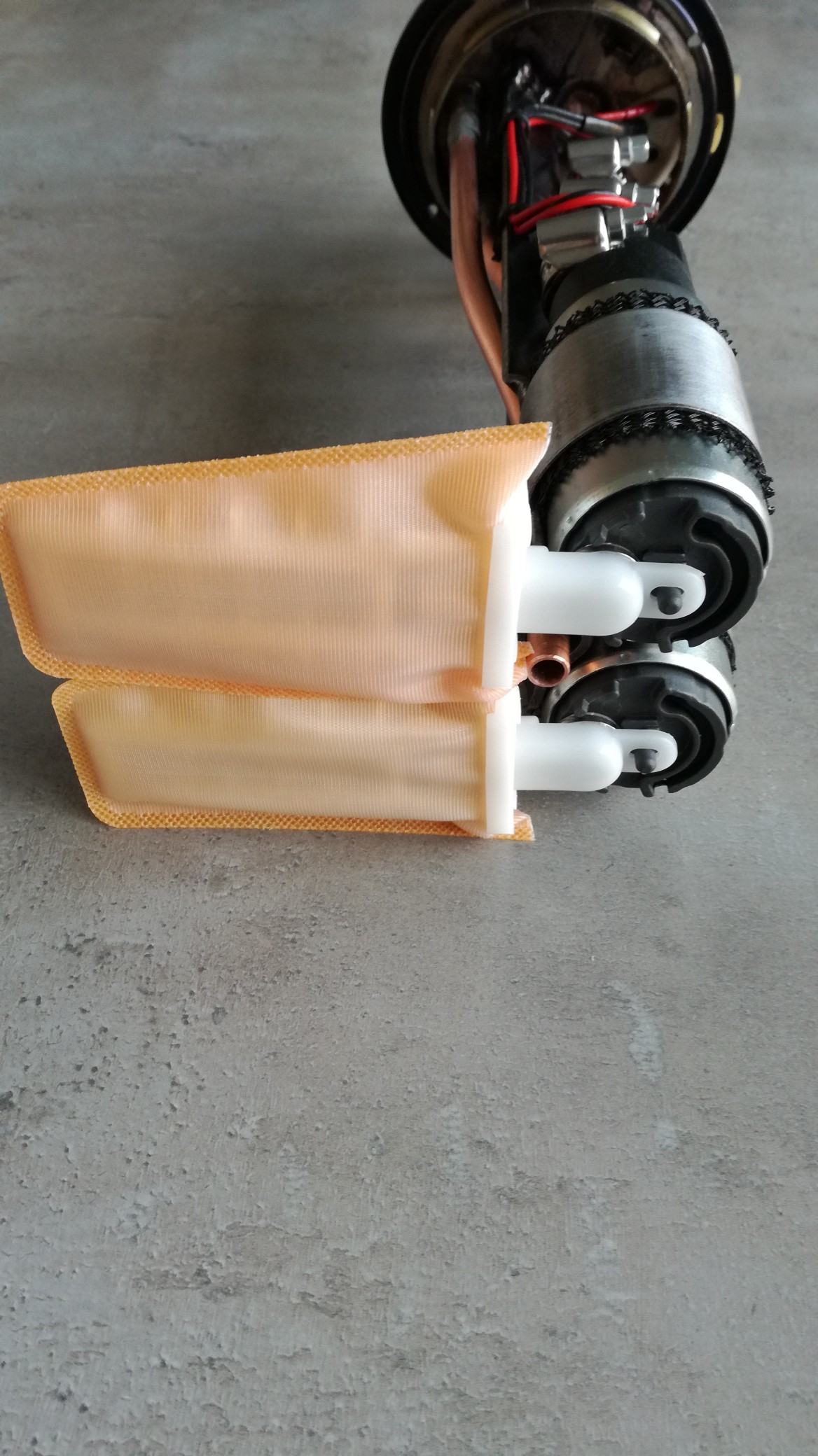
fits all nicely in the tank:
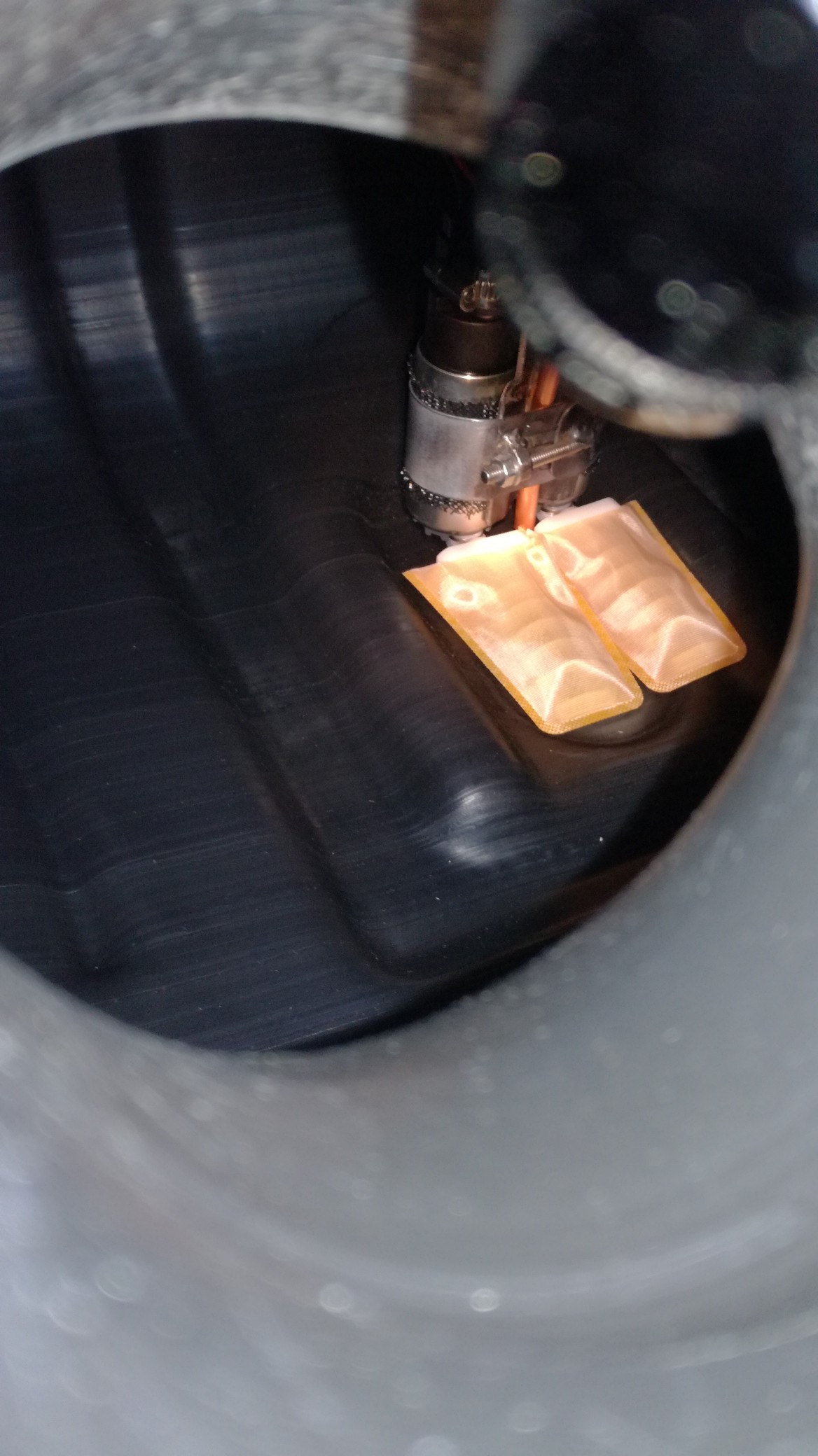
Next hurdle was a fuellevel sender. I took a totaly different route, almost all fuellevel senders have a variable resistor and some kind of floating device.
I would construct a fuellevel sender without any moving parts, and the idea was measuering capacitance, which is only possible in non conducting liquids like gas.
After some bench testing i was shure this project should succeed and started building a sensor unit and electronic control unit.
The sensor unit is made out of aluminium tubing. measurents learned that the capacitance from the sensor unit is around 80pF in air and 120pF when fully dimpled in gas.
In the top of the sensorunit i've made the tank breather conection.
I'm measuring the capacitance with a ATTINY84 mircocontroller an translate the measuered capacitance (fuel level) to a suitable pwm signal which goes to the original fuelgauge in the dash cluster. This took a lot of late nights debugging but in the end i managed it.
This is the sensor with breather pipe:
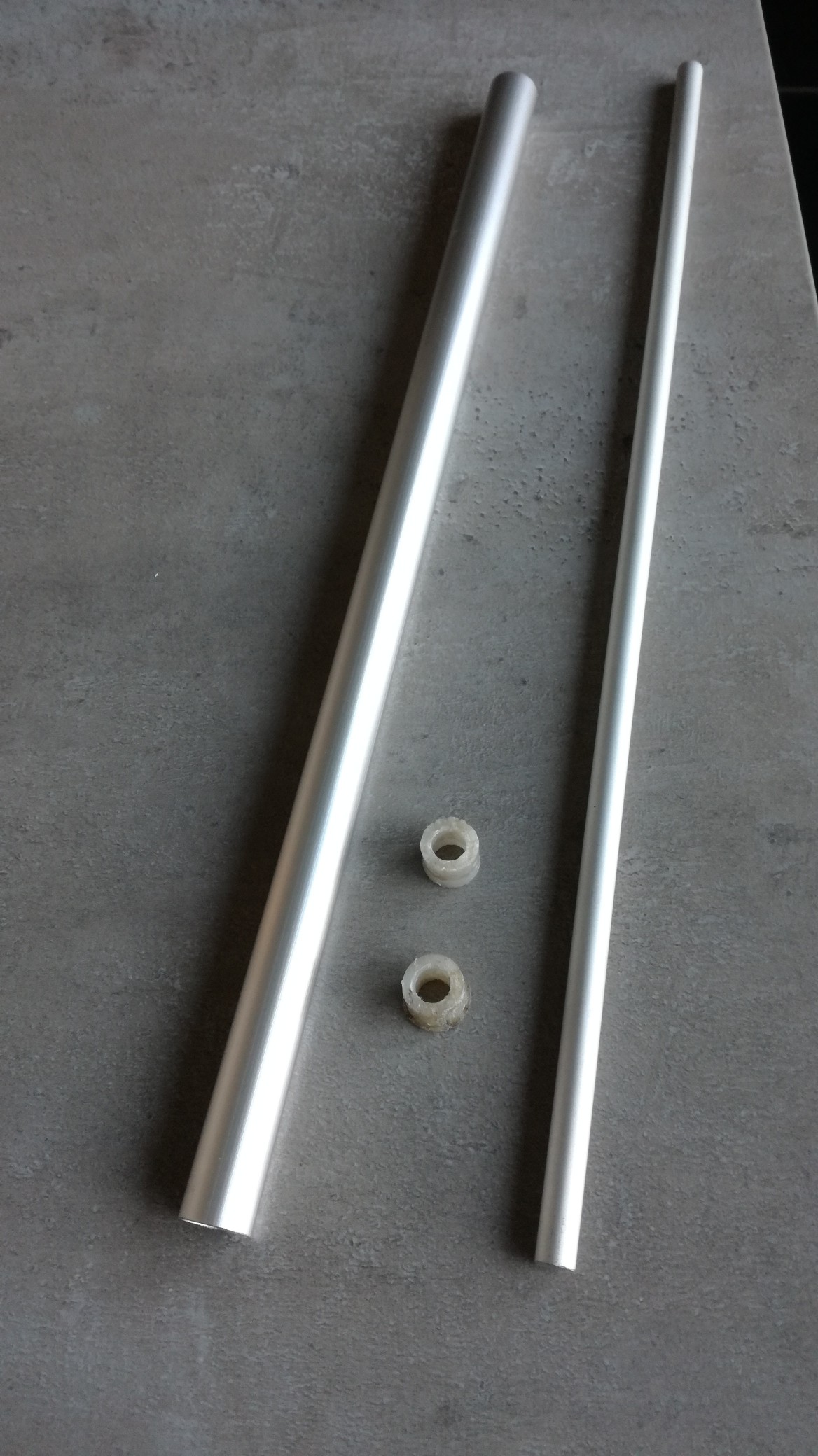
some very small hole in the bottom and top allow fuel entering the sensor assembly:
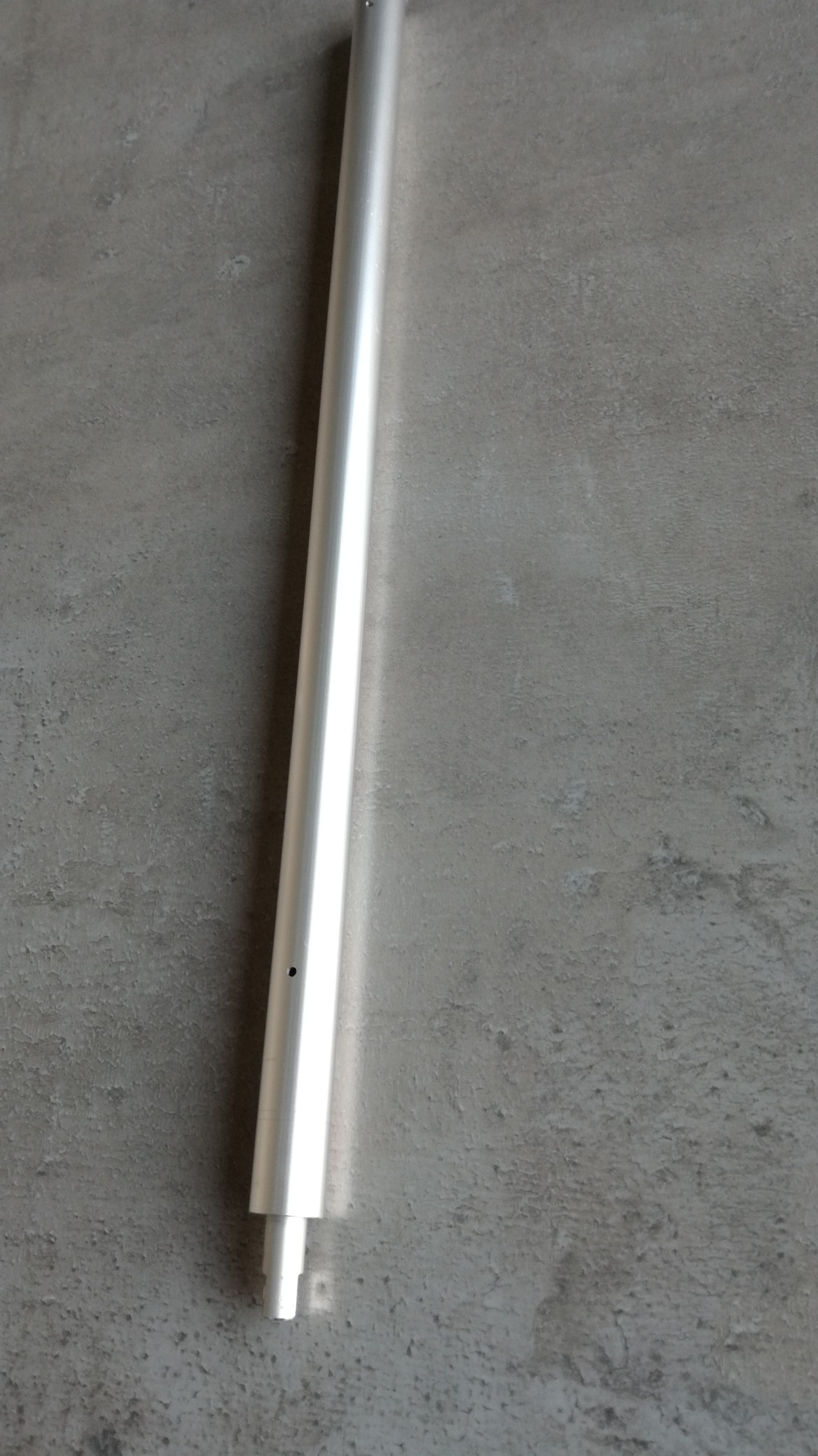
clamped the sensor in somesort of brass fitting:
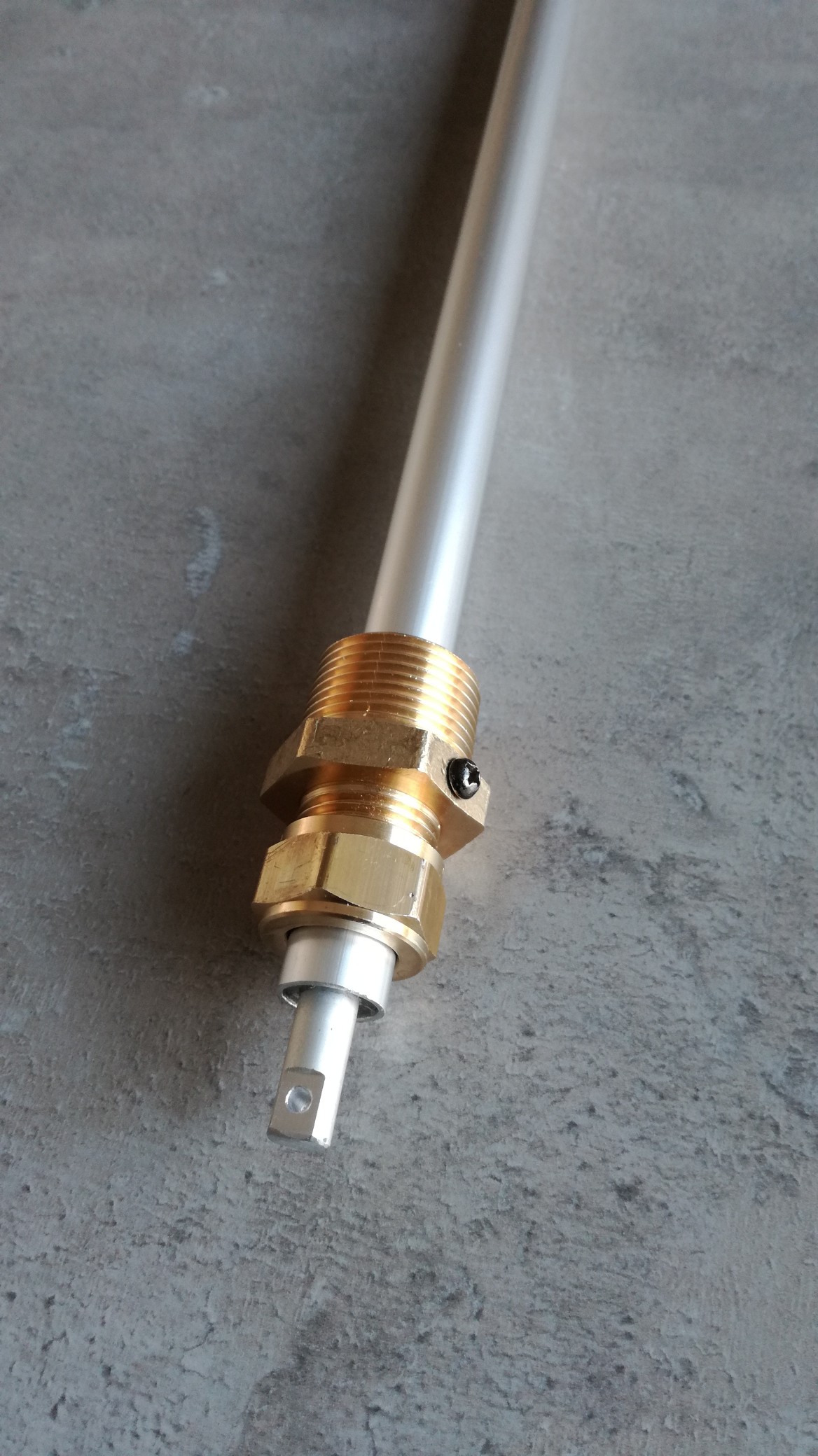
Electronics ready for callibrating in real gas:
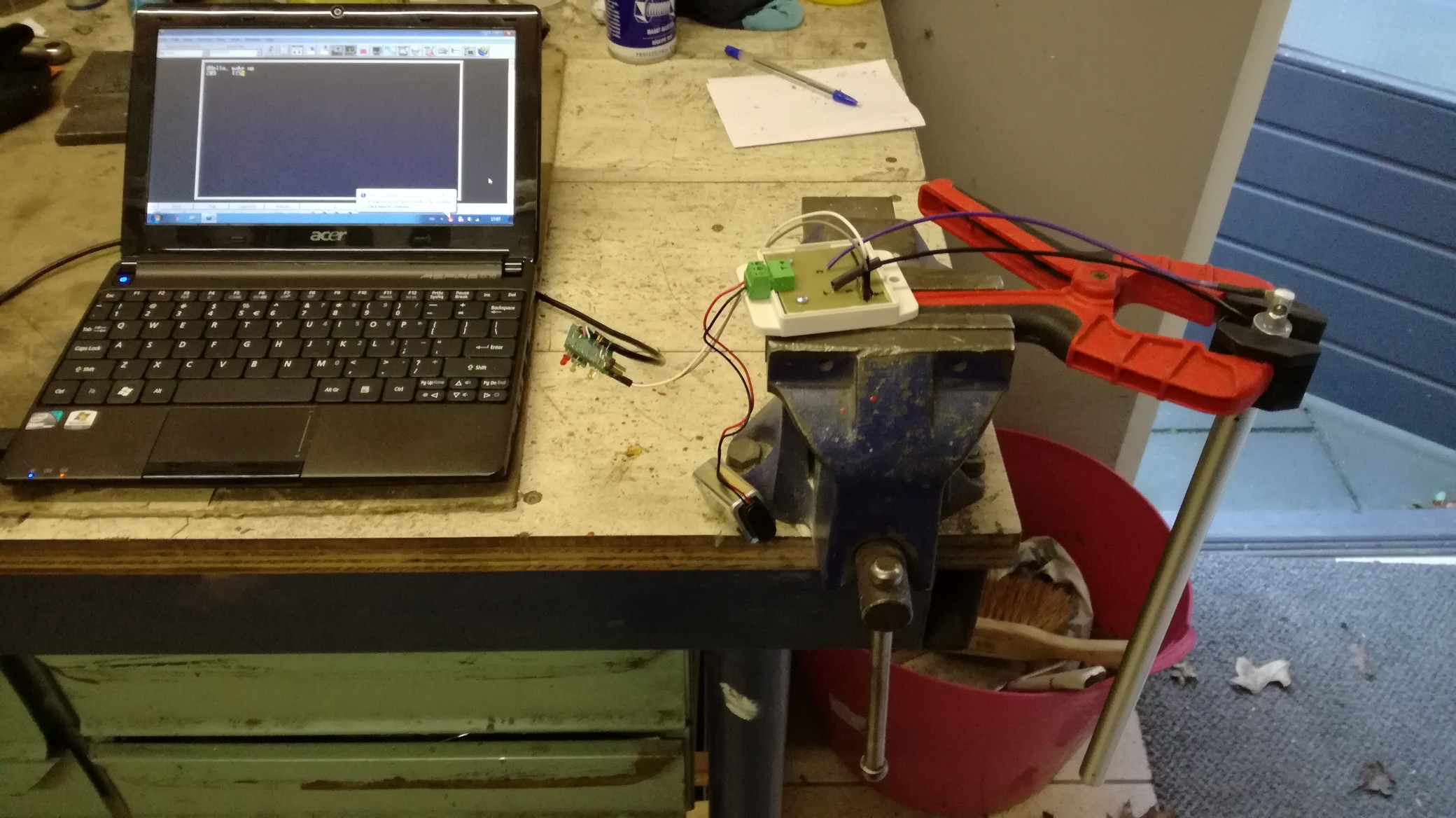
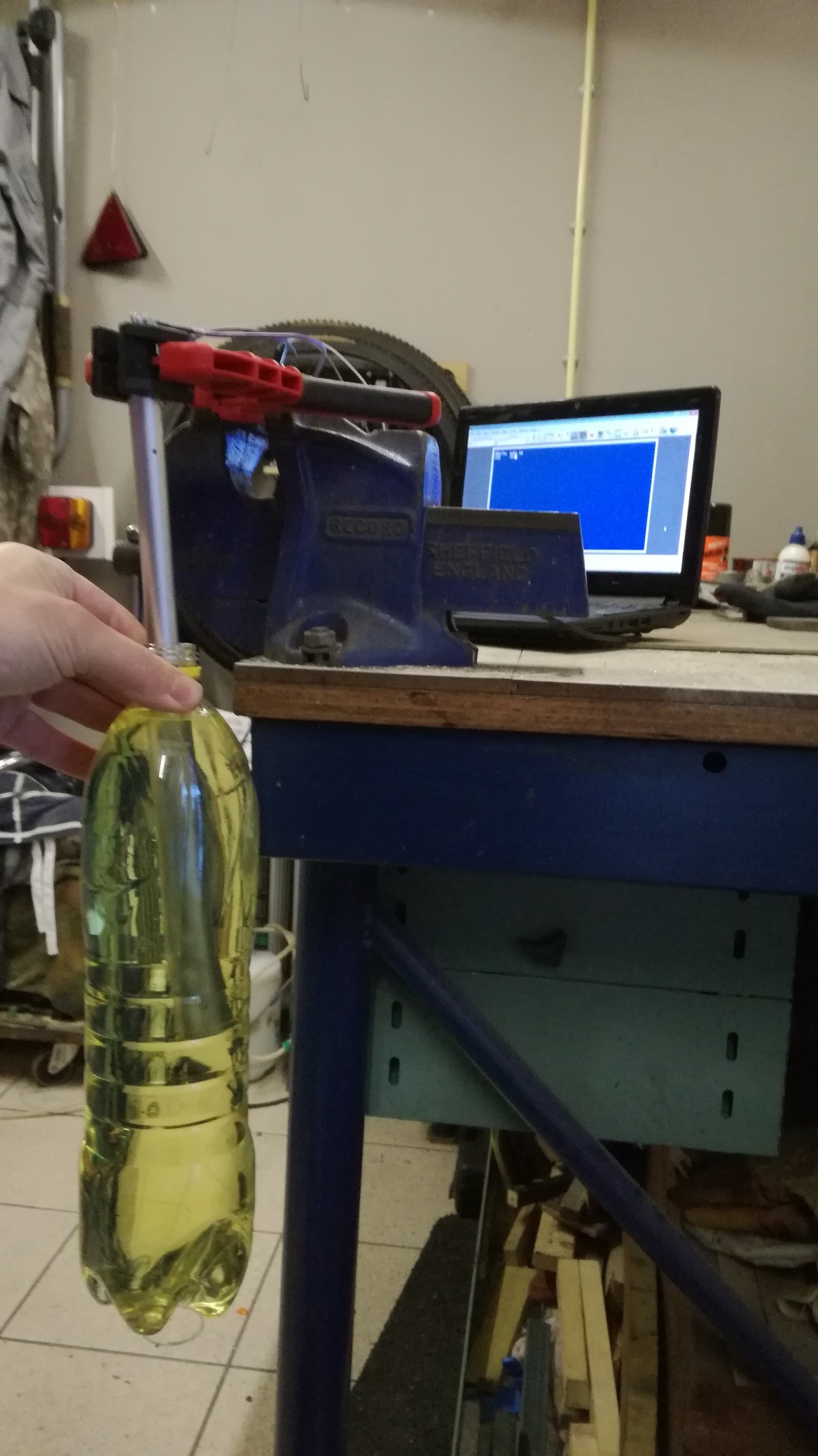
added the breather pipe:

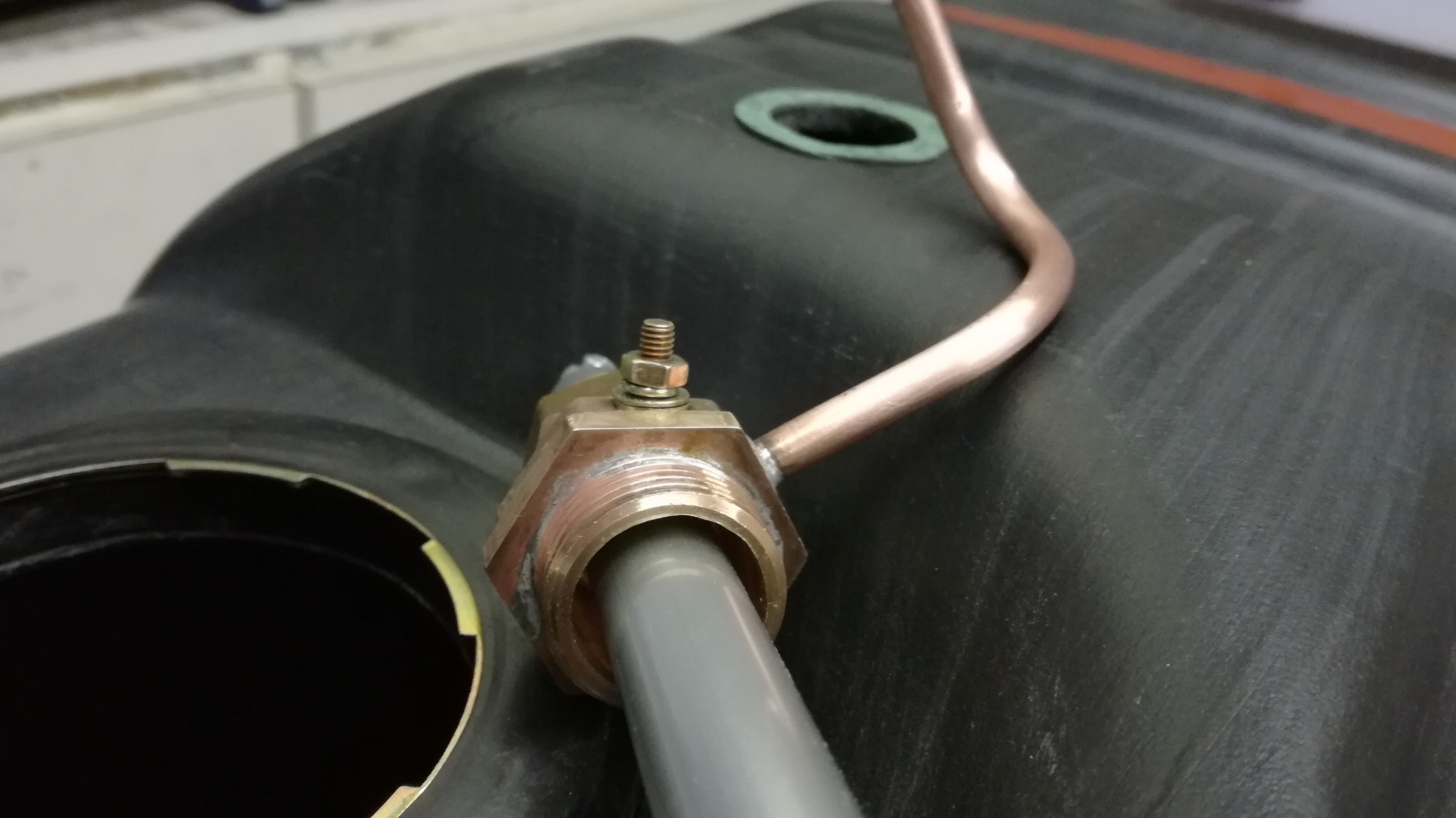
and mounted the sensor assembly into the tank:
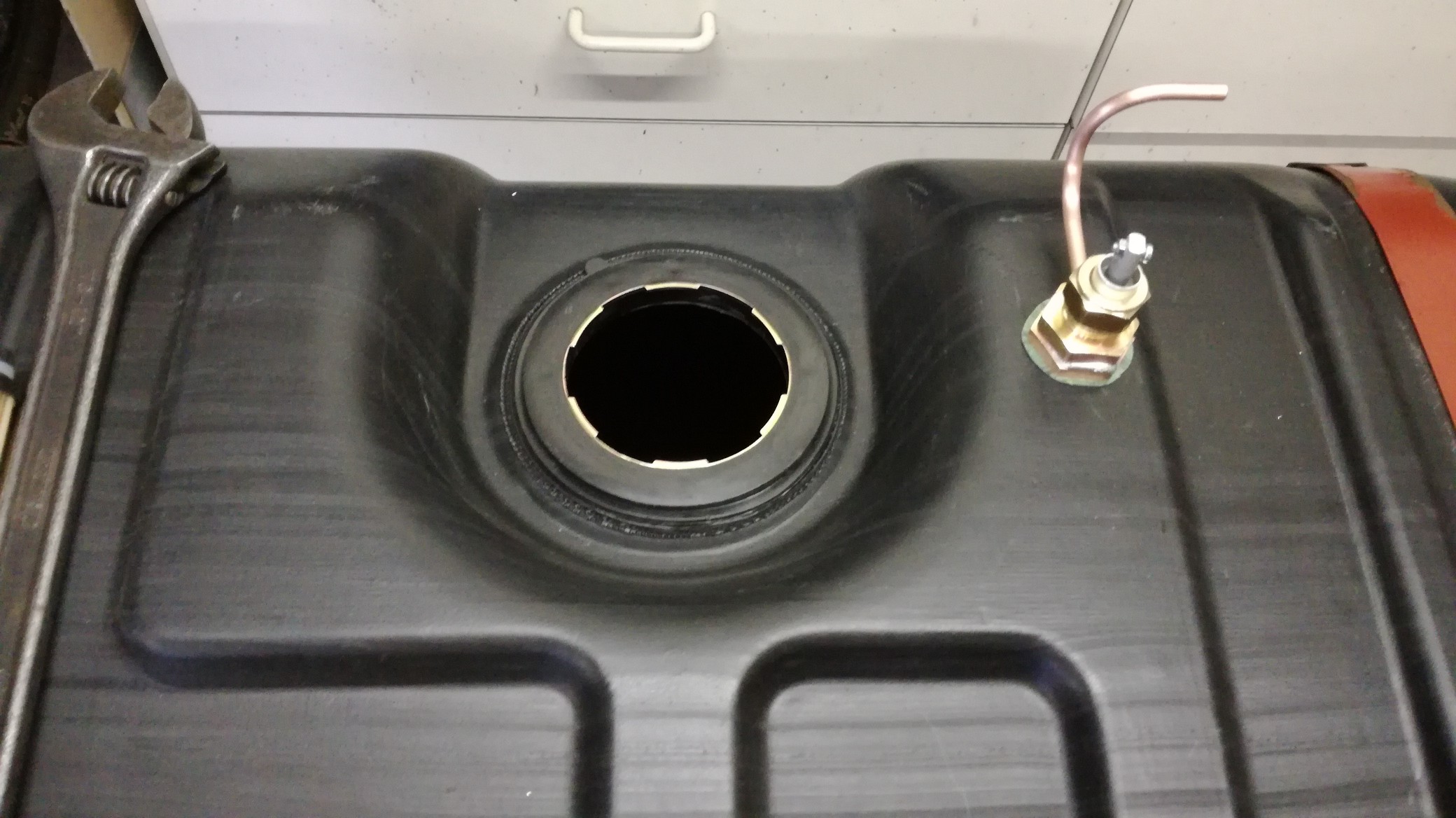
next was altering the tank brackets so they would fit nice into the boot and adding some hard fuelline into the boot:
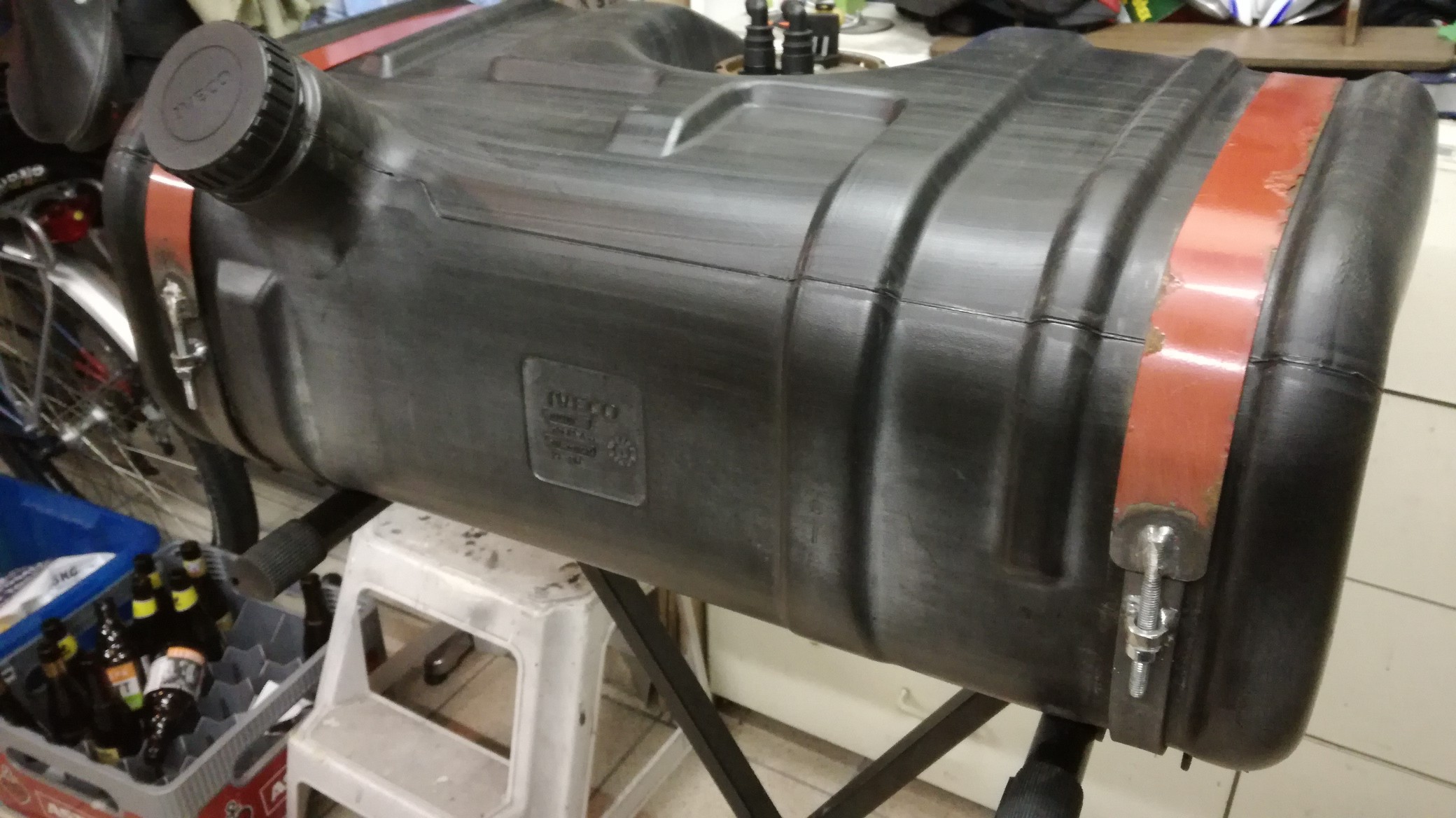
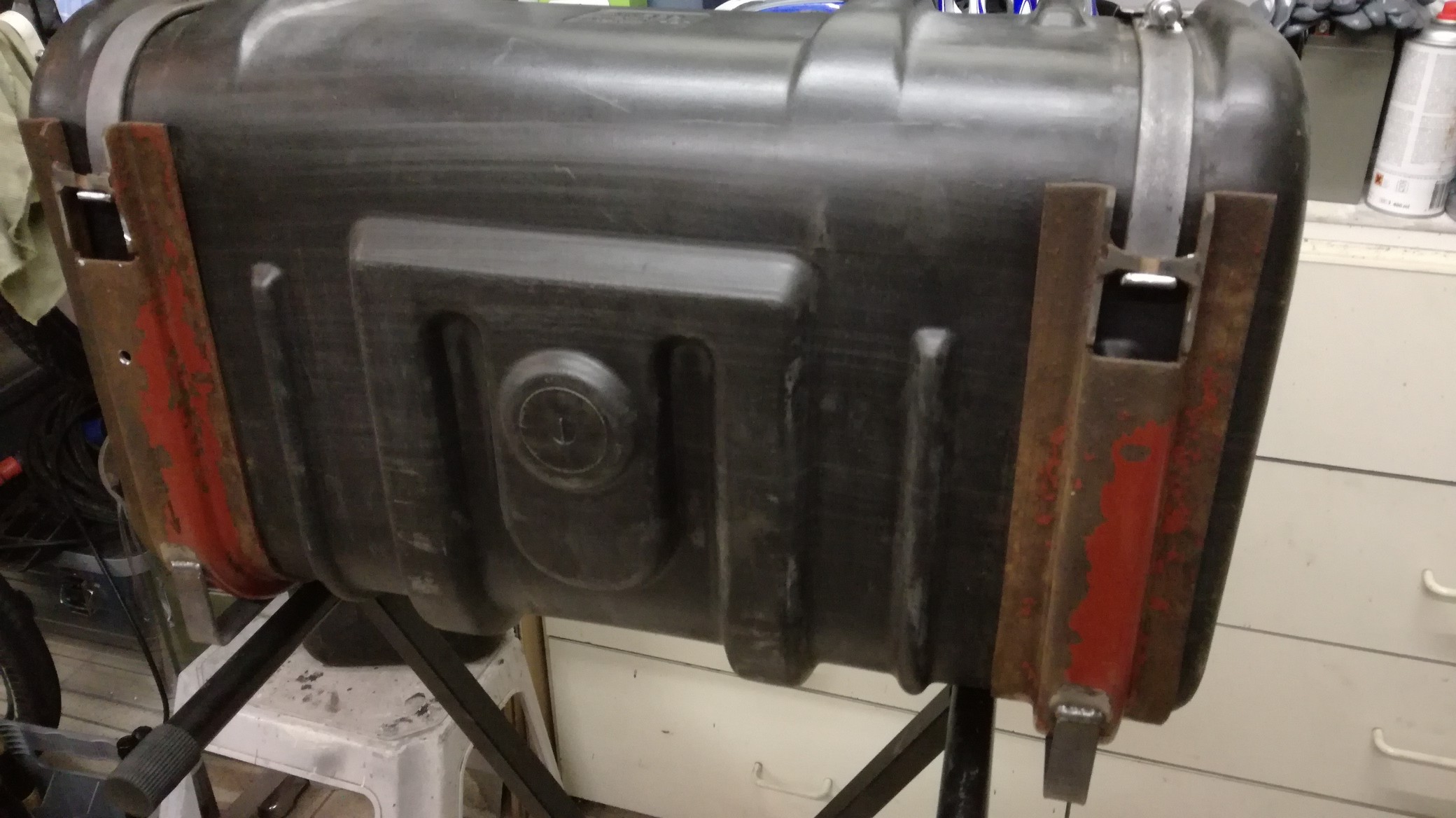
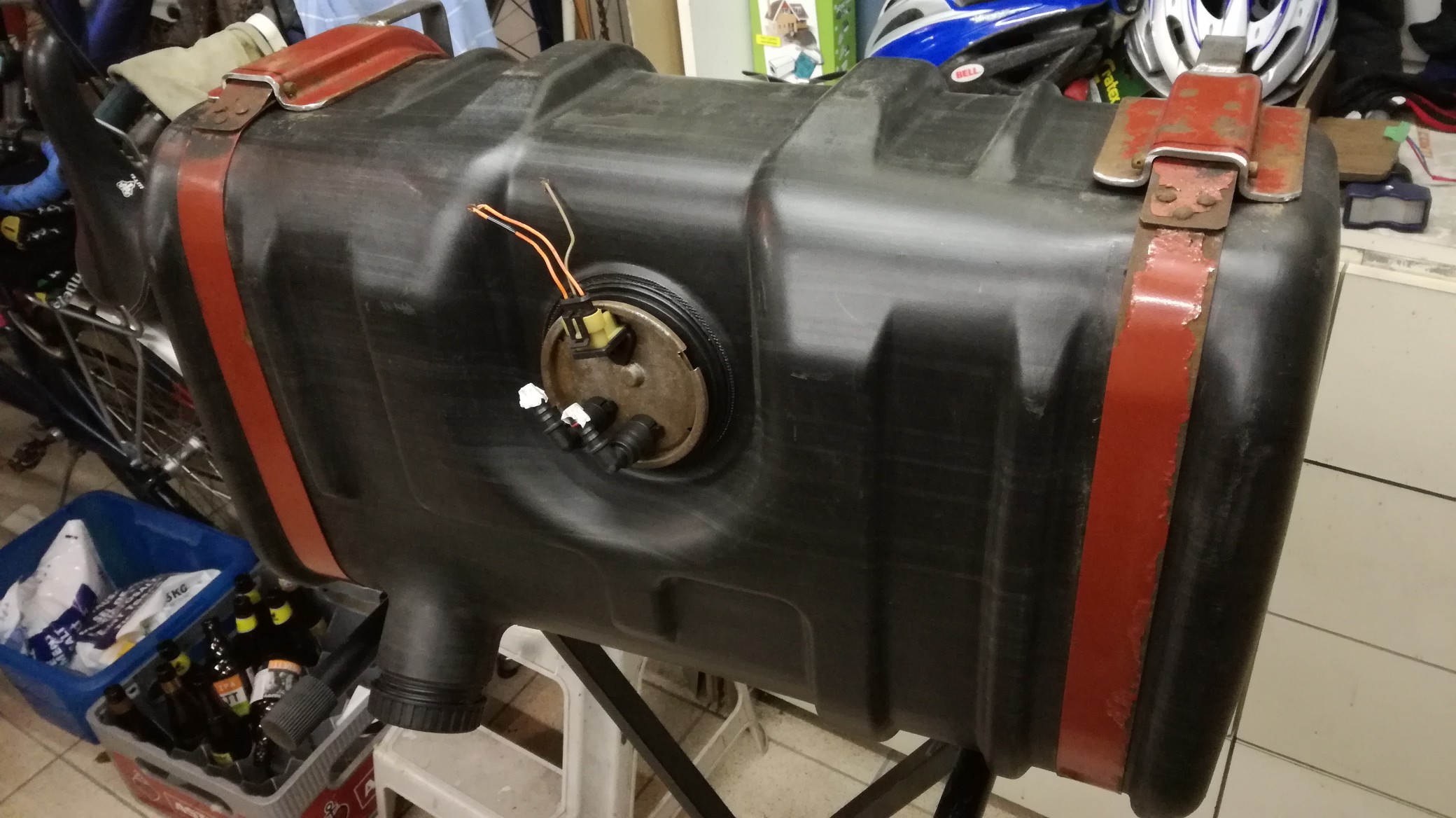
hard lines into the boot:

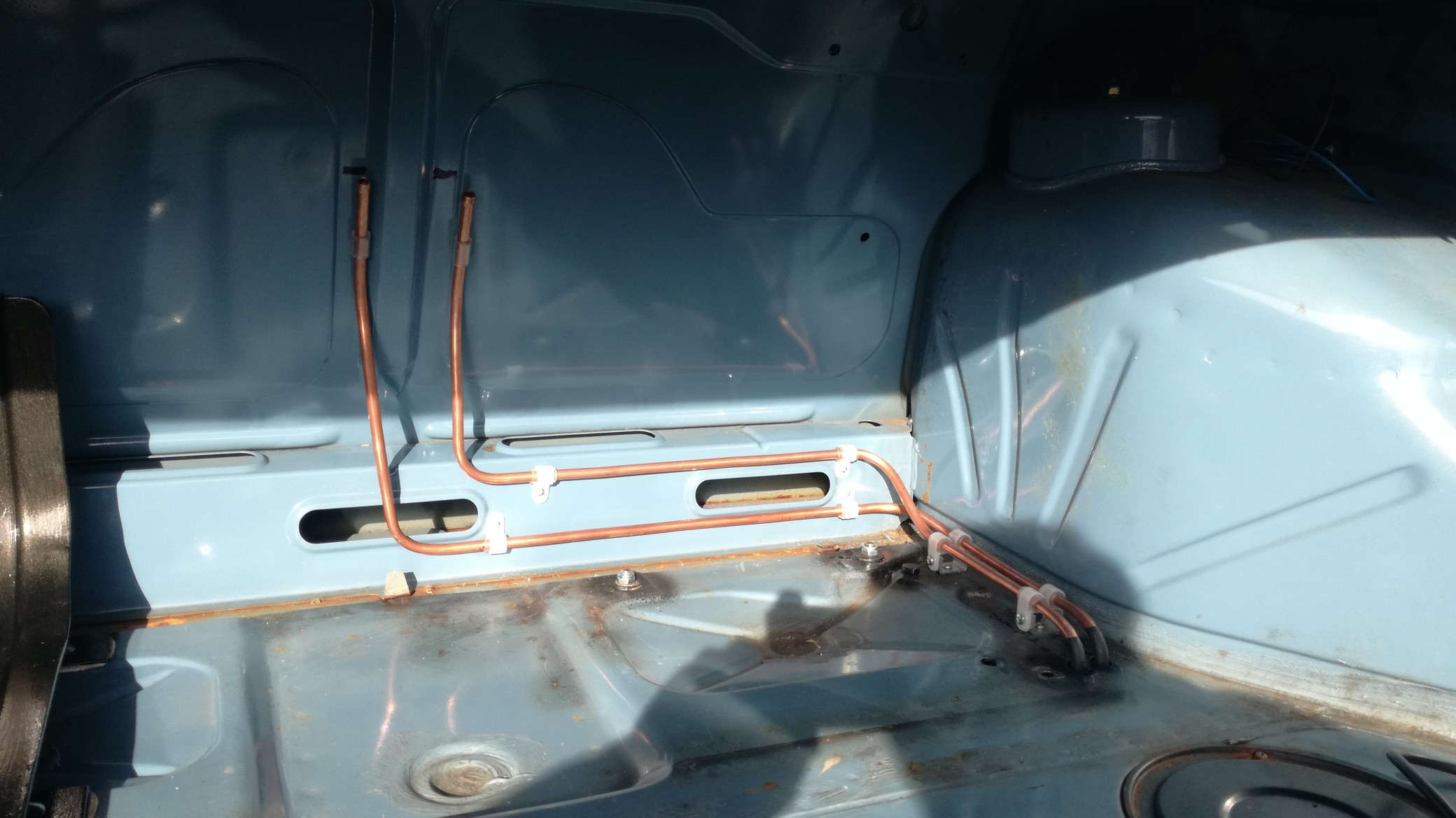
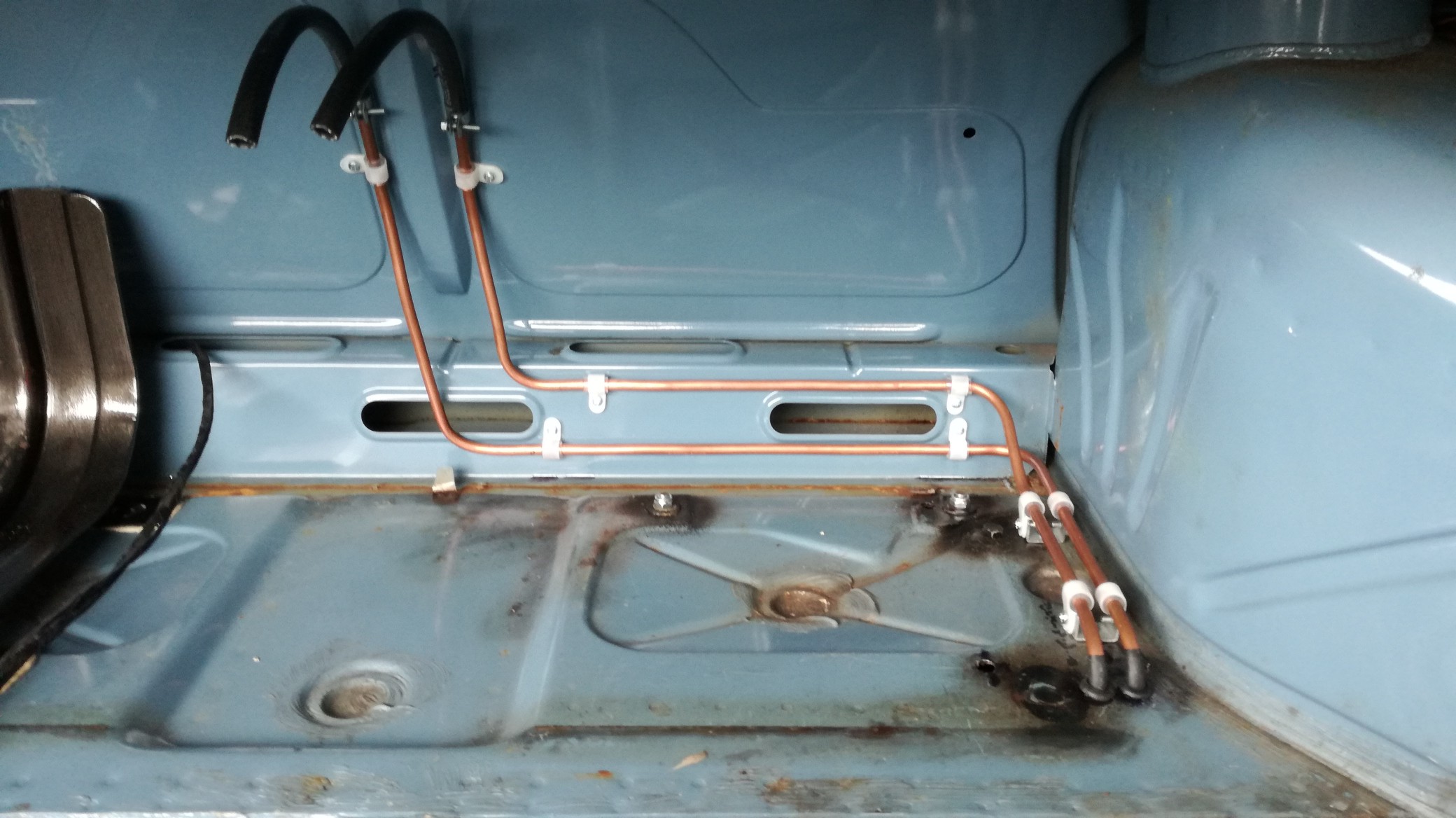
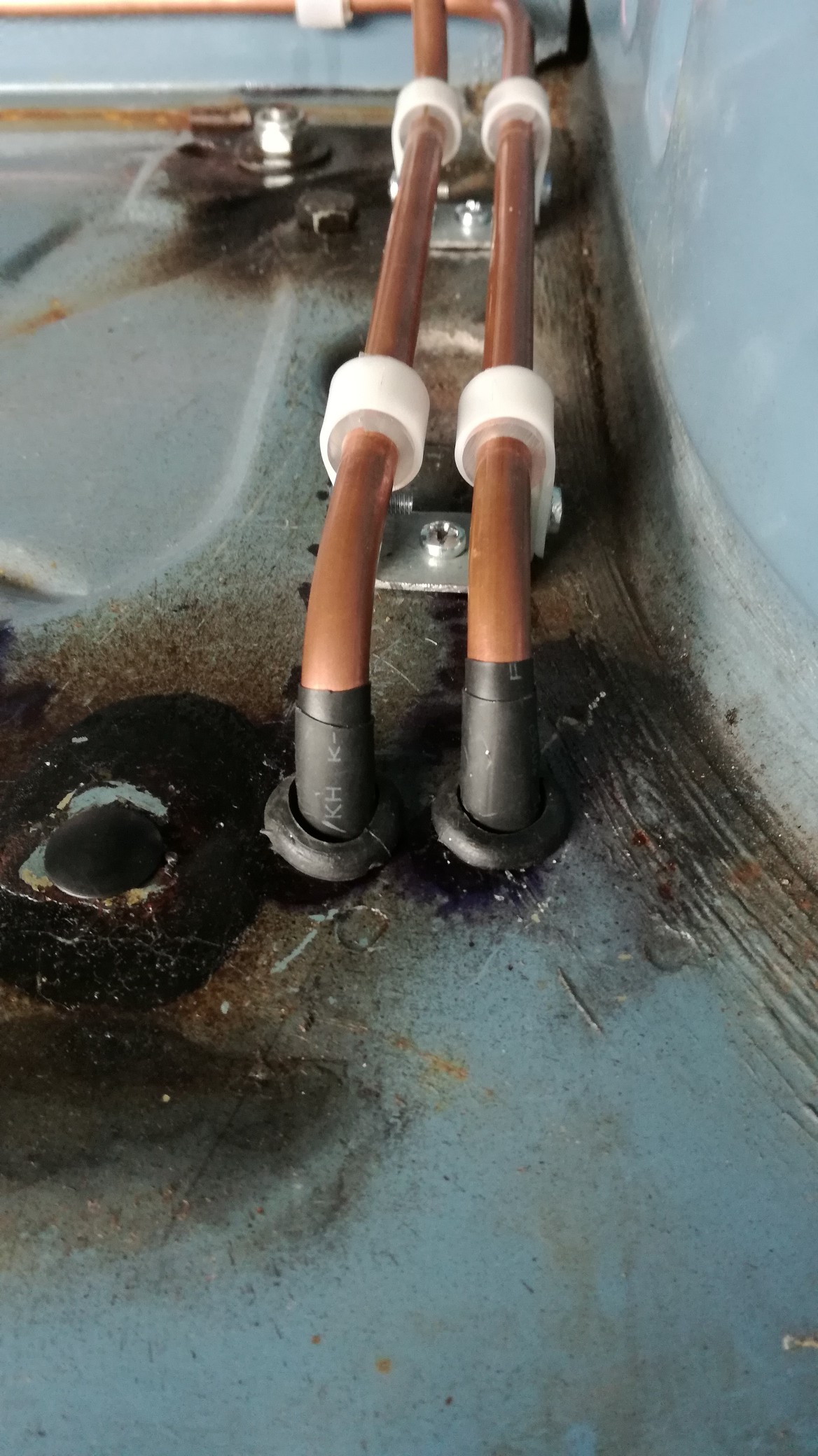
brackets mounted:
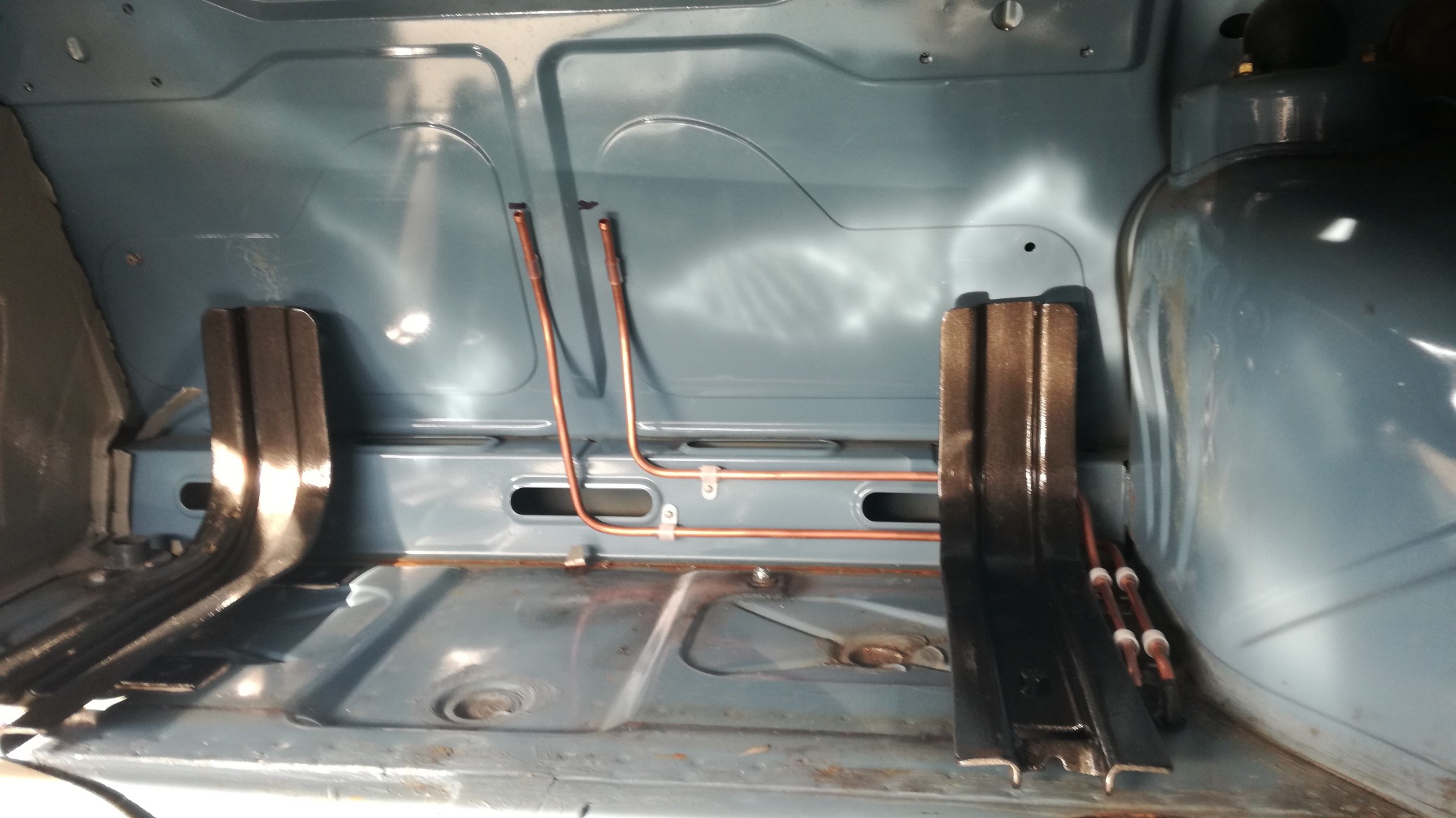
tank placed:
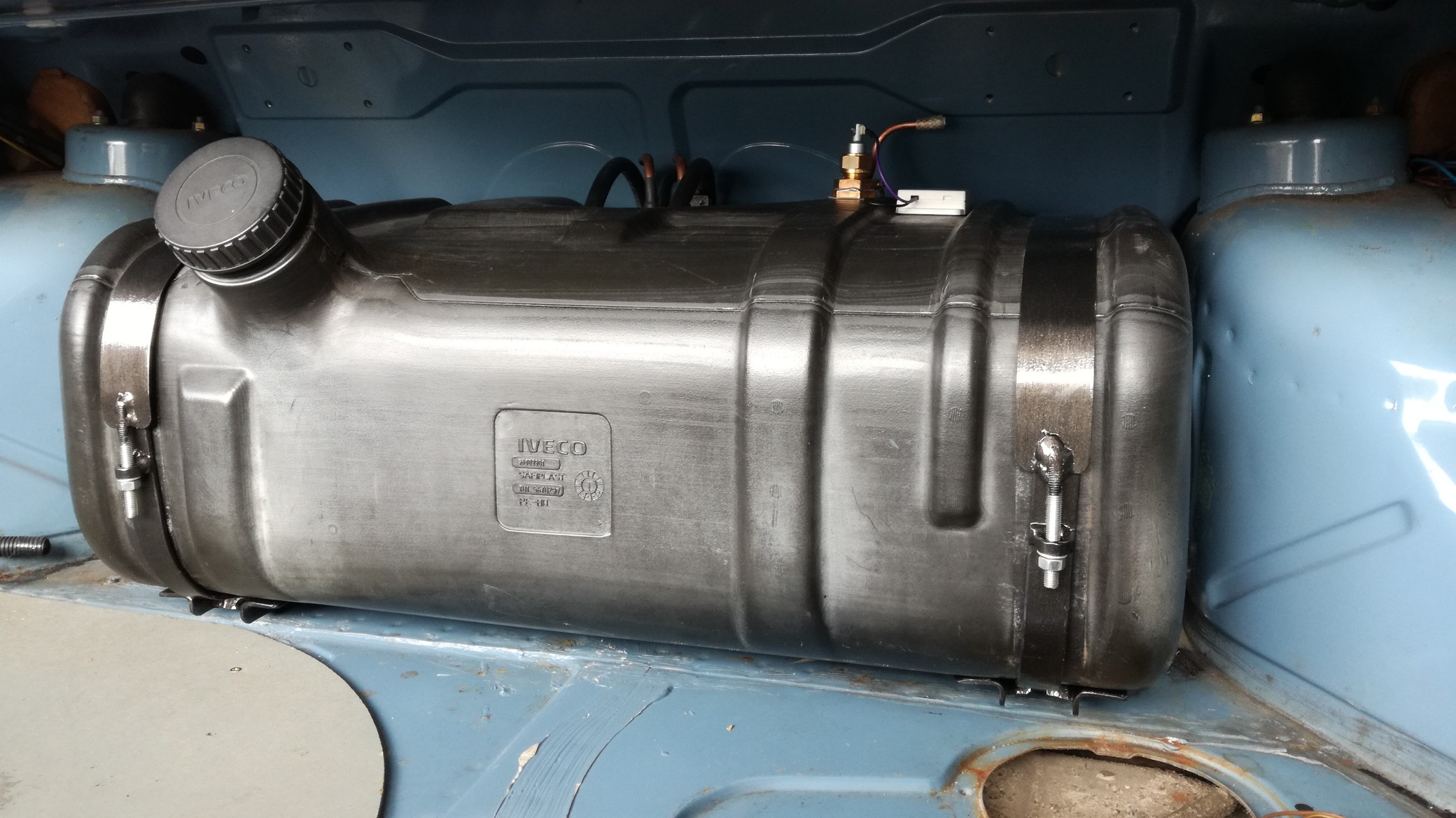
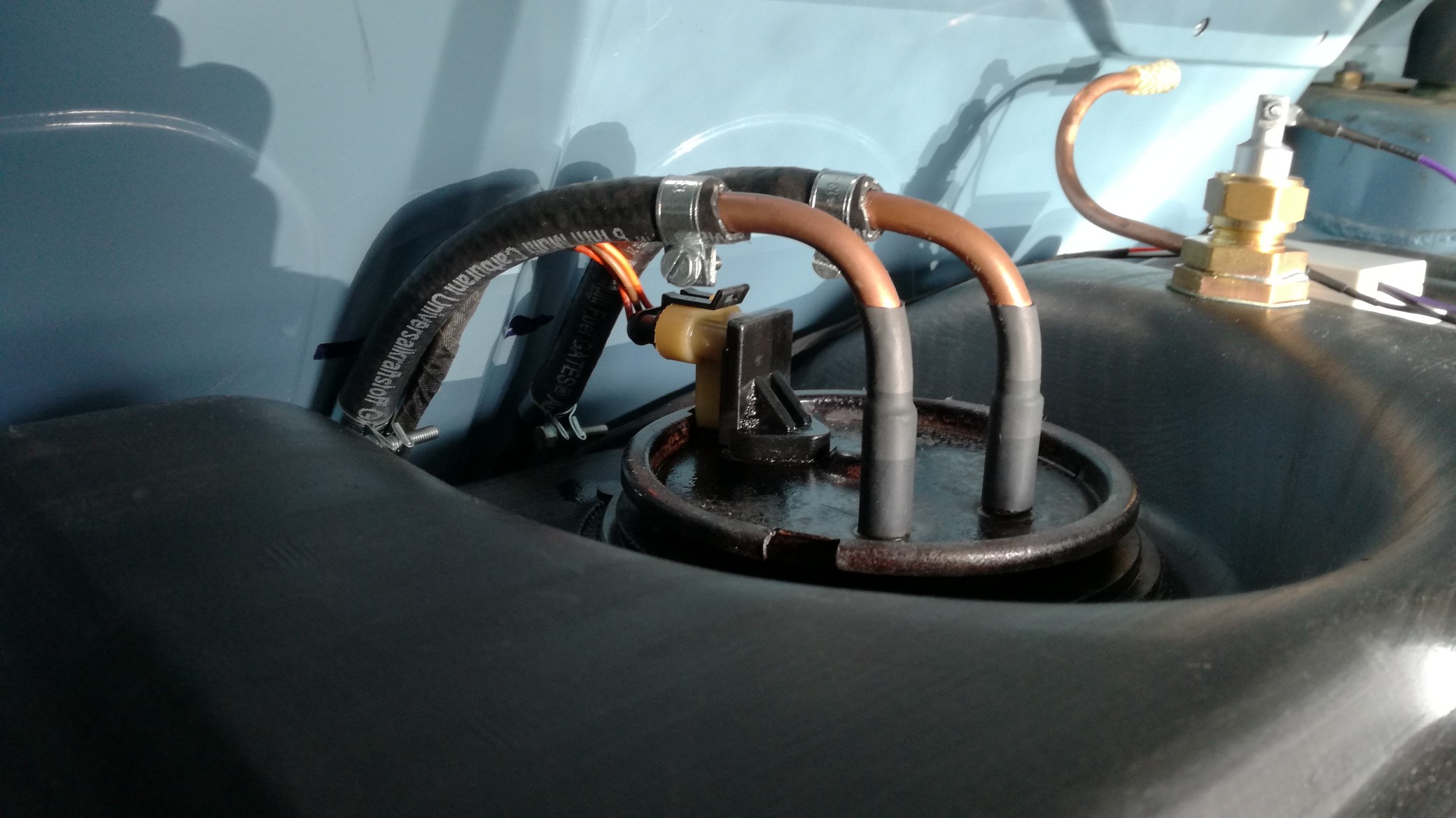
made a new fuel filter bracket:
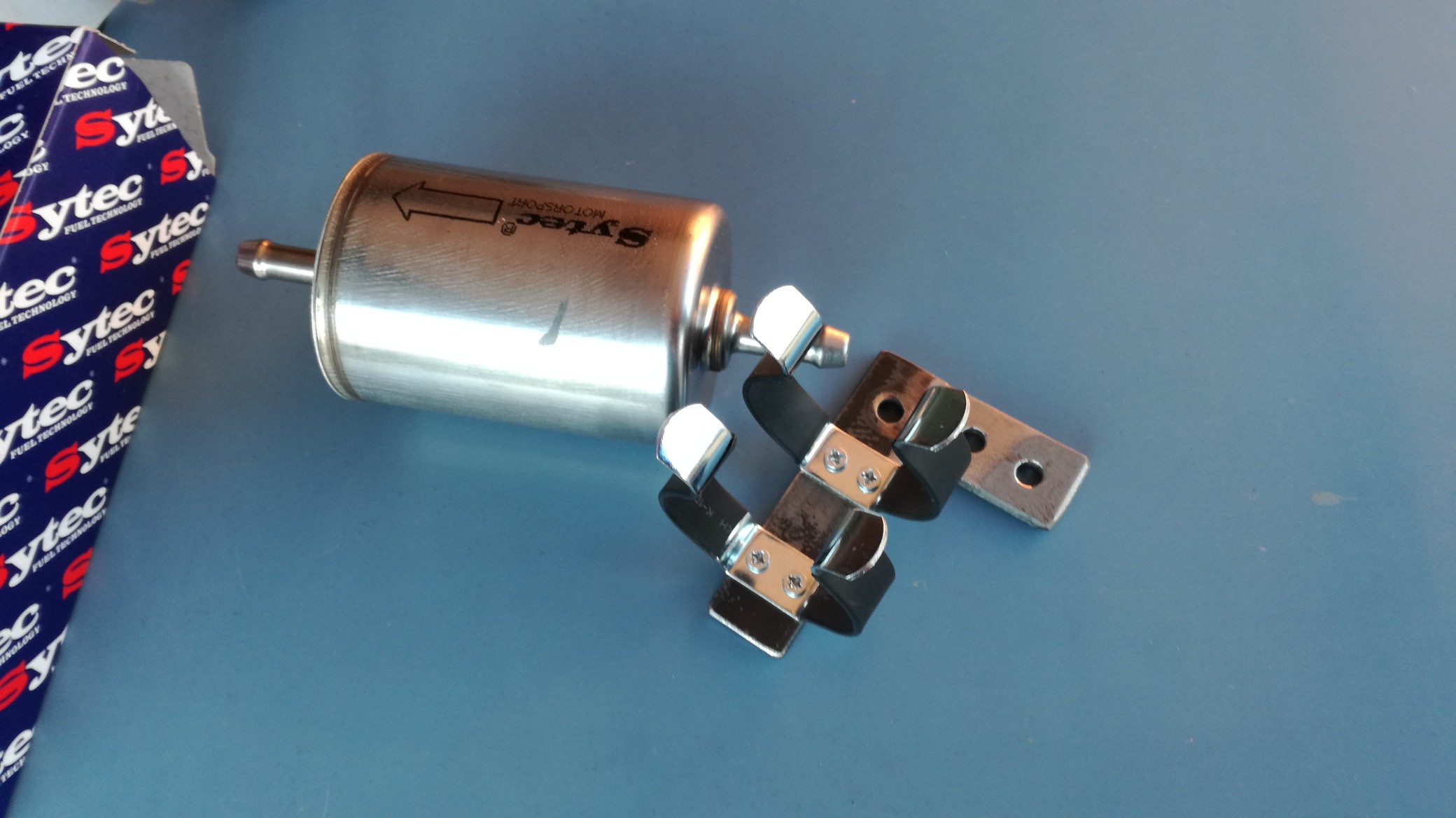
and placed it into the engine compartment:
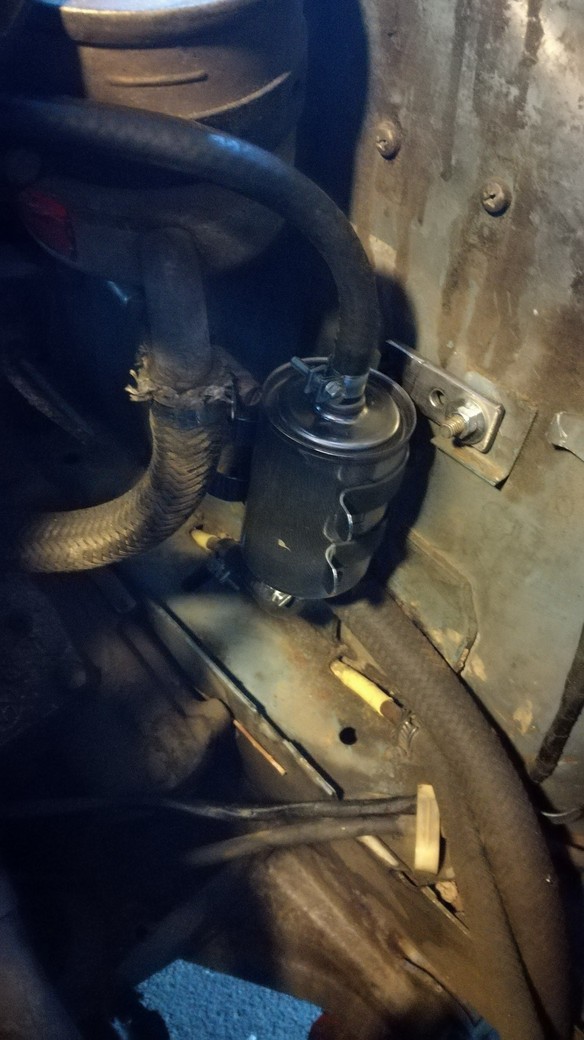
then adding wiring, fuses and a relay for switching between the pumps:
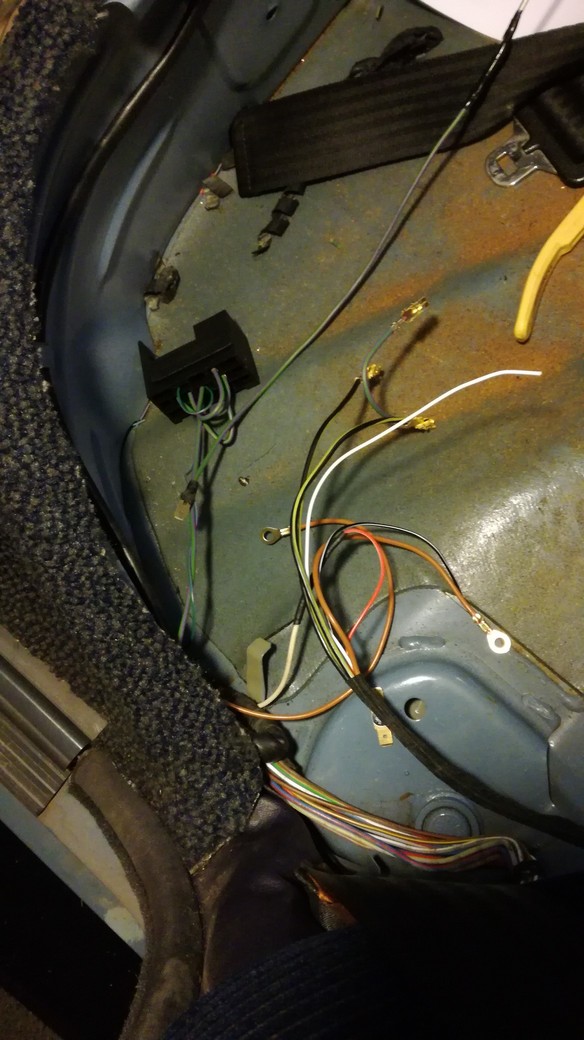

With the old fuelpump still mounted i drained the old fueltank into the new tank and then it was time to take the old leaky fueltank underneath the car.
I've done some testing with both old and new fuelpump because i wanted to know how much fuel ech pump could deliver and the corresponding current.
old fuelpump/filter assemblty:
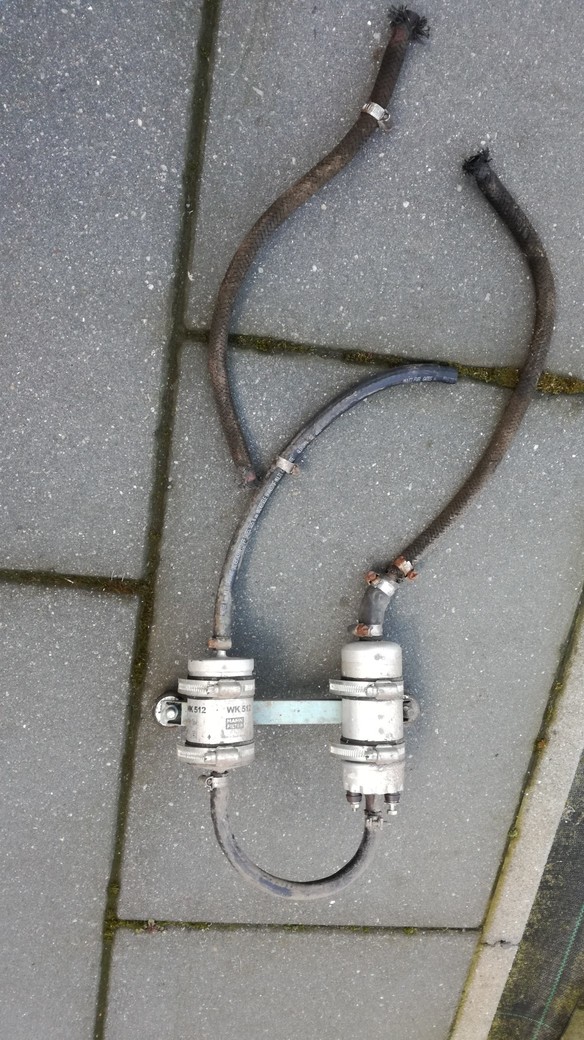
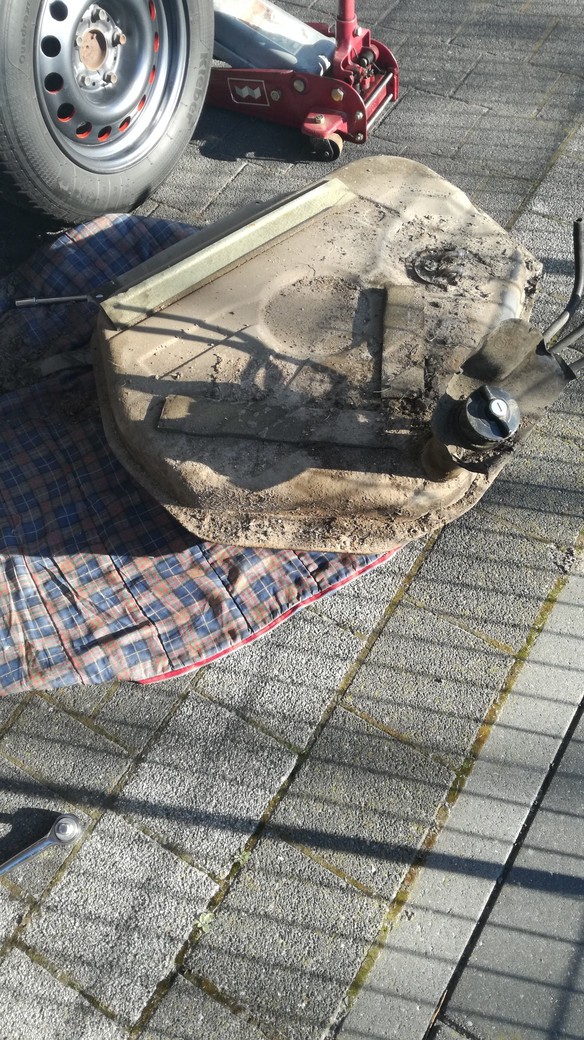
leaky tank is out !!!
